
Oct
Electric motorcycles in India have sold over 15,000 units in 2024. About 40% of these are multi-purpose designs. The Ultraviolette X47 is one such bike, blending different styles into one. It uses aeronautical design and introduces RadarTech safety features to India.
The Ultraviolette X47 Review shows a bike that fits your riding style. It handles Mumbai traffic, long rides to Goa, and mountain trails near Manali well. It’s a new creation from the company, moving beyond their F77 platform.
This bike is for those who want electric power without giving up anything. It can easily switch between commuter, tourer, and adventure modes. Its design focuses on real-world use, making it a smart choice for many riders.
Key Takeaways
- The Ultraviolette X47 combines adventure, naked, and touring capabilities in one electric platform
- RadarTech safety features make their debut in Indian electric motorcycles
- Aeronautical design influences create unique styling and improved performance
- Multi-mode functionality allows instant adaptation to different riding conditions
- Electric powertrain delivers consistent performance across all riding styles
- Crossover design targets riders seeking maximum versatility from a single motorcycle
Introduction to the Ultraviolette X47
The electric motorcycle market in India gets a big boost with the Ultraviolette X47. This bike mixes features from different riding styles. It shows how electric powertrains change motorcycle design.
What is the Ultraviolette X47?
The Ultraviolette X47 is a special electric bike. It’s fast and easy to handle like a naked bike. But it also has the features of an ADV motorcycle. It has a 30kW electric motor that makes 40 bhp, perfect for city rides and long trips.
Key Features and Specs
The X47 stands out in any bike comparison. Its electric motor gives quick power for fast starts. You can choose from two battery sizes, depending on your needs and budget.
| Specification | 7.1kWh Variant | 10.3kWh Variant |
|---|---|---|
| Motor Power | 30kW (40 bhp) | 30kW (40 bhp) |
| Battery Capacity | 7.1 kWh | 10.3 kWh |
| IDC Range | 211 km | 323 km |
| Charging Time | 4.5 hours | 6 hours |
Pricing and Availability
The X47 starts at Rs. 2.74 lakh in India. It’s priced well against other electric and petrol bikes. It’s available in some cities now, with plans to reach more by 2025.
Design and Aesthetics
The Ultraviolette X47 stands out with its bold look, blending adventure and naked bike styles. It’s a unique electric motorcycle in India. Its design is inspired by European bikes but has its own flair.
Overall Look and Feel
The X47’s front has a sharp LED headlight and a small beak. This gives it a ready-for-adventure look. A compact windscreen offers some protection on highways.
The fuel tank area has bold, angular lines that smoothly connect to the side panels. This gives the bike a strong stance.

The rear section and exposed aluminum subframe add to its sporty vibe. The battery pack is designed to blend in, not stand out. This tourer bike looks modern but stays true to motorcycle roots.
Color Options
Ultraviolette offers the X47 in three colors:
- Asteroid Grey – A sophisticated metallic finish for city rides
- Cosmic Black – Classic look with subtle blue accents
- Supernova Orange – Bold and vibrant for visibility
Ergonomics and Comfort
The riding position is comfortable and in control. The handlebars allow for an upright position for city rides. They also lean slightly forward for more fun.
The seat height fits riders of different heights, making it accessible to more people. The footpeg position supports long rides without tiring you out.
Performance Overview
The Ultraviolette X47 is a top-notch electric motorcycle. It offers fast acceleration and stable handling. This makes it perfect for city streets and long highway rides.
Acceleration and Speed
The X47 goes from 0 to 60 kmph in seconds. It easily hits 80 kmph for city driving. And it reaches 100 kmph quickly, making it great for merging with traffic.
For highway cruising, it tops out at 120 kmph. This speed makes long rides enjoyable. The X47 is among the fastest electric bikes in India.
Handling and Stability
The X47’s weight is evenly distributed for exceptional stability at high speeds. Its MRF block-pattern tires grip well in corners. This gives a planted feel that boosts confidence.
Quick turns feel natural, and steering is easy. The bike’s design balances stability and agility perfectly.
Braking Performance
The X47’s brakes are as good as its acceleration. Its dual-channel braking system controls deceleration well. Front and rear discs work together for consistent stopping.
These features make the X47 a joy to ride. It’s perfect for both fast canyon runs and relaxed tours.
| Performance Metric | Specification |
|---|---|
| 0-60 kmph | Under 4 seconds |
| Top Speed | 150+ kmph |
| Cruising Speed | 120 kmph |
| Tire Type | MRF Block-Pattern |
Technology and Features
The Ultraviolette X47 is packed with the latest tech, making it a smart bike for any ride. It has advanced displays and smart battery management. These features make city rides and long trips better.
Instrument Cluster and Display
The X47’s heart is its bright TFT instrument cluster. It shows speed, battery life, and how far you can go. It also has lean angle monitoring and tire pressure, like in top sport bikes.
The screen is easy to see in sunlight and dark. It changes brightness automatically.

Connectivity Options
Riders today want easy connections, and the X47 has Bluetooth and phone pairing. You can also add a dashcam for safety and fun. But, some say showing directions on the screen would be better.
Battery and Range
The X47’s power system is key to its appeal. The battery is in the engine spot, and the motor is behind for better balance. It charges in different ways:
- 7.1kWh battery: 2 hours 40 minutes (20-80% using onboard charger)
- 10.3kWh battery: 4 hours (20-80% using onboard charger)
- Standard portable charger: 3-5 hours depending on battery capacity
Riding Modes and Versatility
The Ultraviolette X47 is a true all-in-one bike. It has an innovative riding mode system. This electric motorcycle changes to fit different riding styles and conditions.
It’s perfect for city commuting, highway cruising, and weekend rides. Its versatility makes it a great choice for many.
Different Riding Modes Explained
The X47 has three riding modes. Each mode changes how the bike responds to the throttle and power. This lets you choose the right mode for your ride.
| Mode Name | Throttle Response | Best Use Case | Range Priority |
|---|---|---|---|
| Glide | Gentle | City traffic | Maximum |
| Combat | Balanced | Daily riding | Moderate |
| Ballistic | Aggressive | Sport riding | Performance |
Suitable Uses: ADV, Naked, or Tourer?
The X47 is great as a naked bike and for touring. Glide mode is perfect for city rides, saving battery. Combat mode is good for daily use.
Ballistic mode is for those who love fast rides. It gives a sportbike-like feel.
Adaptability for Various Riding Conditions
The X47 has a nine-level regenerative braking system. This makes it easy to adjust to different riding conditions. You can choose levels 4-5 for a natural feel or use it for single-pedal riding.
This feature helps you smoothly move from city streets to highways. The bike’s natural throttle response means you can control it confidently in any weather or traffic.
Safety Features
The Ultraviolette X47 focuses on rider safety with advanced tech. It sets new standards in electric motorcycles. This review shows how it protects riders in various situations. It’s perfect for city rides and long trips.
Advanced Safety Technologies
The X47 has a rear-facing radar for traffic monitoring. It warns riders about blind spots with lights in the mirrors. It also alerts for overtaking and rear collisions, keeping riders aware.

Braking Systems
The X47 has an anti-lock braking system (ABS) as standard. It prevents wheels from locking up during stops. But, the ABS needs better calibration, as found in this review.
It’s too sensitive on uneven roads or speed bumps. This causes the brake lever to feel stiff. Ultraviolette should update the software to fix this.
Visibility Enhancements
The X47 has full LED lighting for better visibility. It has bright headlights, daytime running lights, and unique tail lamps. The turn signals are dynamic, making it easier for others to see.
The instrument cluster adjusts its brightness automatically. It uses ambient light sensors for this.
Comparison with Competitors
The electric motorcycle market in India is quite interesting. When we compare the Ultraviolette X47, it stands out. It combines features from different categories into one.
Similar Models in the Market
In India, you can find electric motorcycles like the Revolt RV400, Oben Rorr, and Matter Aera. The Revolt RV400 is a basic commuter bike at a lower price. The Oben Rorr is for urban riders who want style and decent performance. The Matter Aera is great for daily use with good range.
Unique Selling Points
The Ultraviolette X47 Review shows it has unique features. It can change from an adventure bike to a naked bike to a touring bike. Its battery system gives it great range. It also has advanced connectivity that rivals can’t match.
Value for Money Analysis
Electric bikes are cheaper to run, costing about ₹0.15 per kilometer. This is much less than ₹2-3 per kilometer for petrol bikes. The X47’s price is high, but it offers a lot. You get three bikes in one, saving money and being versatile. No other electric bike in this range can match its features at this price.
Customer Reviews and Feedback
Early riders and journalists tested the Ultraviolette X47. They share insights on this versatile bike. Their experiences show it’s an electric motorcycle that breaks new ground and meets real-world needs.
Feedback from test sessions near Bangalore karting tracks offers genuine views on daily use and performance.
Positive Experiences
Riders love the X47’s powertrain performance. The electric motor offers smooth acceleration. This impresses during city commutes and highway cruising.
The build quality is top-notch, beating competitors like Revolt and Okinawa. The crisp TFT display is clear, even in bright sunlight.

Testers praise the motorcycle’s handling. It shows confident stability in tight corners at karting tracks. The switchgear feels premium, with satisfying feedback.
Cable management is a highlight, showing attention to detail. This is rare in electric two-wheelers.
Areas of Improvement
Many reviewers say the ABS calibration needs work. During aggressive braking, the system intervenes too early. This reduces stopping power.
This issue needs a software update for better safety performance.
Overall Satisfaction Ratings
Initial feedback shows high satisfaction scores. Riders like the bike’s design, which works for daily commuting and weekend touring. It combines practical features with sporty performance.
This makes it a standout in India’s electric motorcycle market. Most testers suggest the X47 for those looking for an electric alternative without giving up on traditional motorcycle experiences.
Maintenance and Service
The Ultraviolette X47 is a standout in electric ADV motorcycles. It needs less maintenance than traditional bikes. This means fewer trips to the garage and more time on the road.
Recommended Maintenance Schedule
Keeping your X47 in top shape is easy. The electric motor needs little care. Just check the brakes, tires, and battery health regularly.
| Service Interval | Maintenance Tasks | Estimated Cost (INR) |
|---|---|---|
| Every 3,000 km | Tire pressure, brake pad inspection | 500-800 |
| Every 6,000 km | Brake fluid check, chain adjustment | 1,200-1,500 |
| Every 12,000 km | Battery diagnostics, coolant replacement | 2,500-3,000 |
| Every 24,000 km | Complete system check, software updates | 4,000-5,000 |
Availability of Parts and Services
Ultraviolette has set up service centers in big cities like Bangalore and Mumbai. They keep important parts ready for quick fixes. Quality construction with properly secured cables and wiring helps avoid common electrical problems.
Warranty and Support
The X47 has a 3-year/40,000 km warranty and a 5-year/60,000 km battery pack warranty. Ultraviolette offers 24/7 roadside help through their app. This gives riders confidence for long trips.
Conclusion
The Ultraviolette X47 is a standout in electric motorcycle design. It’s an all-in-one bike that fits different riding needs. This electric bike shows that green vehicles can be both fun and useful.
Final Thoughts on the Ultraviolette X47
The X47 is the top Ultraviolette model for riding. Its 170mm suspension travel works well on Indian roads. The bike looks great and is very functional. Though the ABS needs work, it’s a strong choice for those looking for an electric bike.

Who Should Consider This Bike?
The X47 is good for many types of riders:
- Daily commuters who want easy, low-care rides
- Weekend riders who need comfort for long trips
- City riders who love the look of a naked bike with modern tech
- Those who care about the environment and want an electric bike
Summary of Key Takeaways
The Ultraviolette X47 is great for daily rides, long trips, and some adventure. It has cool features and works well for everyday use. It’s not perfect, but it’s a big step towards making electric bikes popular in India.
Where to Buy the Ultraviolette X47
To get the Ultraviolette X47, you need to know where to buy it. It starts at Rs. 2.74 lakh, making it a great deal in India. You can pick from 7.1kWh or 10.3kWh battery options through official channels. This ensures you get a genuine product with warranty.
Authorized Dealerships
Ultraviolette has set up dealerships in big Indian cities. These places let you try out the tourer bike before buying. You can even take it for a test ride at some spots, like near Bangalore.
At each dealership, you’ll find staff ready to help. They can tell you all about the bike and share performance review results from real tests.
Online Purchase Options
For those who prefer online shopping, Ultraviolette’s website is the place to go. It has a tool to let you customize your X47. This makes buying easy for tech lovers.
Online, you don’t need to fill out much paperwork. Prices are clear, with no hidden costs. You can keep an eye on your order and get updates on when it will arrive. The website also has all the bike’s specs and performance review data to help you decide.
Future Prospects
The Ultraviolette X47 marks a big change for the company. It moves from the fully-faired F77 to a versatile crossover design. This shows Ultraviolette’s aim to reach more riders.
This move helps the company tap into different parts of India’s growing electric motorcycle market. It’s a smart strategy to grow their customer base.
Upcoming Features and Updates
Several updates are coming for the Ultraviolette X47. The most exciting one is a standard dashcam with navigation. This will be a game-changer in the electric motorcycle world.
ABS recalibration is also a top priority. Riders say the current system needs to work better in different conditions. This update will improve the bike’s performance.
Potential Impact on the Motorcycle Market
The Ultraviolette X47 Review shows a bike that could change India’s electric motorcycle scene. Its all-in-one design might make competitors like Ather Energy and Revolt Motors think about similar bikes. This bike has features that traditional motorcycles don’t.
If the X47 does well, it could make more people choose electric bikes in India. City riders looking for something different might like this bike. It offers comfort for long rides, adventure, and agility for daily use.
FAQ
What makes the Ultraviolette X47 different from traditional ADV motorcycles?
The Ultraviolette X47 is a unique, fully electric bike that combines ADV, naked, and touring features. It has a 30kW electric motor for instant power and zero emissions. It also has advanced RadarTech features like blind spot detection and rear-collision warnings, which are rare at this price.
How does the Ultraviolette X47 perform compared to petrol-powered naked bikes?
The X47 is fast, reaching 0-60kmph and 0-80kmph quickly. It’s great for city riding and can cruise at 120kmph on highways. Its instant torque and three riding modes make it competitive with petrol bikes.
Is the Ultraviolette X47 suitable as a tourer bike for long-distance rides?
Yes, the X47 is perfect for long trips. It has a 323km range and can cruise at 120kmph. It also has 170mm suspension travel and a TFT display for tire pressure monitoring. The electric motor reduces vibrations, but you’ll need to plan charging stops.
What are the top features that justify the Ultraviolette X47’s price point?
The X47’s price is worth it for its advanced safety systems, 9-level regenerative braking, and TFT display. It also has an optional dashcam system and a unique design. Its versatility and lower running costs make it a great value.
How does the ultimate riding experience on the X47 compare to other electric motorcycles?
The X47 offers a top-notch ride with great handling and predictable cornering. Its natural throttle response and customizable regenerative braking make it stand out. The build quality is high, but the ABS system needs calibration.
What are the main differences between the 7.1kWh and 10.3kWh variants?
The main difference is range and charging times. The 7.1kWh variant has a 211km range and charges in 2 hours 40 minutes. The 10.3kWh version has a 323km range and charges in 4 hours. Both have the same motor and features.
How practical is the Ultraviolette X47 for daily commuting in Indian cities?
The X47 is great for daily commutes. It accelerates quickly, has a comfortable riding position, and handles Indian roads well. It’s efficient, has low maintenance, and is easy to maneuver in cities.
What should be known about the motorcycle comparison with competitors?
The X47 is unique in the Indian market, with no direct electric competitor. It offers similar versatility to petrol bikes like the Ducati Multistrada at a lower cost. It has instant torque, minimal maintenance, and advanced safety features.

Oct
The 125cc motorcycle market in India grew by 42% in the last quarter of 2024. This is the fastest growth in the two-wheeler category. Honda has responded with a new bike to meet this demand.
Honda introduces the CB125 Hornet to meet young riders’ needs for sporty bikes at affordable prices. It joins the Shine 100 DX, showing Honda’s move into the premium 125cc market.
The CB125 Hornet is a new start for Honda in this segment. It’s built from scratch to compete with TVS Raider 125, Hero Xtreme 125R, and Bajaj Pulsar N125. It’s perfect timing, as riders want modern looks and features the old SP 125 lacked.
This launch shows Honda’s aim to grab more of India’s growing entry-level market. The CB125 Hornet has bold looks and useful features for daily use and weekend fun.
Key Takeaways
- Honda enters the premium 125cc segment with the all-new CB125 Hornet
- The bike directly competes with TVS Raider 125, Hero Xtreme 125R, and Bajaj Pulsar N125
- Completely new design replaces the aging SP 125 model in Honda’s lineup
- Launch coincides with 42% growth in India’s 125cc motorcycle market
- Targets young riders seeking sporty performance at an affordable price point
- Released alongside the Shine 100 DX to strengthen Honda’s small-displacement portfolio
Introduction to the Honda CB125 Hornet
The Honda CB125 Hornet is a thrilling addition to the 125cc segment. It combines performance and technology perfectly. It’s designed for young riders who want a sporty bike for daily use.
Honda sees this model as a bridge between entry-level and premium bikes. It’s their third choice in the popular 125cc segment.
Overview of Key Features
The Honda CB125 Hornet has impressive specs in a small frame. Its 123.94cc single-cylinder engine produces 11.14 PS of power at 7,500 rpm. It also makes 11.2 Nm of torque at 6,000 rpm.
The bike has a smooth 5-speed transmission. This ensures great power delivery in all riding conditions.
Here are some standout features of the bike:
- 4.2-inch TFT display with smartphone connectivity
- Turn-by-turn navigation system
- Premium gold-finished inverted front forks
- LED lighting throughout
- Digital instrumentation with multiple riding modes
Target Audience
The Honda CB125 Hornet is perfect for young professionals and college students. They want style and practicality. The bike meets their needs for modern tech and a dynamic lifestyle.
It’s an upgrade from basic commuters but stays in the 125cc segment’s budget.
Design and Aesthetics
The CB125 Hornet is a standout in Honda’s bike lineup. It has a bold look that’s different from other 125cc motorcycles. Honda’s team worked hard to make a bike that grabs attention and is built to last.
The bike has a mix of aggressive and practical designs. It’s perfect for city riders who want a bike that looks good and works well.

Styling Innovations
The CB125 Hornet has an insect-inspired headlight. This unique front design makes it stand out. It’s a key feature that sets it apart from other Honda bikes.
The side profile is sleek, with sharp lines and angles. It’s inspired by other bikes, but has its own special look.
Honda offers the CB125 Hornet in four eye-catching colors. These colors are aimed at attracting young riders:
- Pearl Siren Blue with Lemon Ice Yellow accents
- Pearl Igneous Black for a stealthy look
- Pearl Siren Blue with Athletic Blue Metallic
- Pearl Siren Blue and Sports Red highlights
Ergonomic Considerations
The CB125 Hornet balances style with comfort. It’s designed to fit riders of different heights. The handlebar position makes it easy to ride for daily trips.
Color-coded wheels add a nice touch. They make the bike look good without sacrificing practicality.
| Design Feature | Benefit | Target Rider |
|---|---|---|
| Insect-style headlight | Enhanced visibility and unique identity | Style-conscious youth |
| Color-coded wheels | Cohesive aesthetic appeal | Urban commuters |
| Angular body panels | Sporty appearance | Performance enthusiasts |
| Upright seating position | Reduced fatigue on long rides | Daily commuters |
Performance Specifications
The Honda Unveils CB125 Hornet brings a new level of performance to the 125cc class. It offers impressive power and handling, perfect for those who want both efficiency and excitement. The team aimed to create a bike that shines in city traffic and has sporty dynamics.
Engine and Power Output
The Honda Hornet Updates feature a 123.94cc single-cylinder engine. This engine produces 11.14 PS of power and 11.2 Nm of torque. It outperforms the SP125 in power and torque, with better acceleration across the rev range.
Honda’s engineers made the CB125 Hornet the fastest bike in its class, reaching 0-60 kmph in just 5.4 seconds. The 5-speed transmission ensures smooth power delivery and optimal gear ratios for city commuting and highway cruising.
Handling and Suspension
The CB125 Hornet boasts premium gold-finished inverted front forks for superior damping and road feedback. This setup improves stability during aggressive cornering and hard braking. The inverted design also reduces unsprung weight, leading to sharper handling.
These updates make the Honda Hornet feel agile in traffic yet stable at high speeds. The suspension balances comfort with sportiness, ensuring daily rides are enjoyable without losing performance.
Safety Features
The new motorcycle model is packed with safety tech for the 125cc class. Honda made this bike with safety in mind, yet it’s affordable for new riders. It has modern brakes and better visibility, setting a new safety standard.
Advanced Braking Systems
The CB125 Hornet has a top-notch braking system. It has a petal disc brake at the front for strong stops. The rear drum brake is reliable for daily rides.
It also has single-channel ABS to stop the front wheel from locking up. This tech keeps riders safe in wet or slippery conditions. It shows that safety tech doesn’t have to be expensive.

Lighting and Visibility
Modern LED lights light up the road and make the bike stand out. The headlight shines far, making dark streets safer. LED position lights keep the bike visible during the day.
The tail light flashes bright LEDs when braking. Turn signals are high up for better visibility at corners. These features offer premium bike quality without the high price.
Technology Integration
The Honda CB125 Hornet enters the digital age with advanced tech. It rivals premium motorcycles with its smart features. This bike brings high-tech elements to entry-level riders, making it a standout in the 125cc segment.
Instrument Cluster Overview
The heart of the Honda CB125 Hornet is its 4.2-inch TFT display. It shows speed, RPM, fuel level, and more in clear detail. The screen adjusts its brightness to match the light around you, making it easy to see day or night.
The display is organized into zones for quick access. You can change the display modes with controls on the handlebars. This lets you customize your view based on your needs or the ride.
Connectivity Features
Smartphone integration makes the Honda CB125 Hornet a connected bike. With Bluetooth, you can get turn-by-turn navigation on the TFT screen. This means no need for extra GPS devices or phone mounts, keeping things simple and clean.
| Connectivity Feature | Function | Benefit |
|---|---|---|
| Bluetooth Pairing | Connects to Android/iOS devices | Seamless phone integration |
| Navigation Display | Shows turn-by-turn directions | Safer route guidance |
| Call Notifications | Displays incoming calls | Stay connected safely |
| Message Alerts | Shows text notifications | Awareness without distraction |
This tech package makes the CB125 Hornet a strong contender in Motorcycle News. It stands up well against bikes like the KTM 125 Duke and Yamaha MT-125.
Fuel Efficiency
The CB125 Hornet is designed to balance performance and economy in the 125cc segment. Its 123.94cc engine is built for fuel efficiency, meeting the needs of Indian riders. The team worked hard to make the motor efficient without losing the sporty feel.
Comparison to Competitors
The CB125 Hornet stands out against rivals in the 125cc segment. It has strategic engineering that sets it apart. Here’s how it compares:
- TVS Raider 125: 67 kmpl (claimed)
- Bajaj Pulsar NS125: 60 kmpl (claimed)
- Hero Glamour XTEC: 63 kmpl (claimed)
The Hornet’s engine is based on the SP125, known for 60-65 kmpl in real life. This puts Honda in line with what the market expects. It also offers the reliability Honda is known for.

Environmental Impact
The CB125 Hornet meets BS6 Phase 2 emission standards, showing Honda’s dedication to clean mobility. Its engine is designed to cut down on harmful emissions. This helps cities improve air quality as more people choose bikes over cars.
Pricing and Availability
The 125cc motorcycle launch is exciting news for those on a budget in India. Honda’s CB125 Hornet has impressive features, but the price is a secret for now. We’re waiting for official news before the month ends.
Market Launch Dates
The CB125 Hornet will be in Indian dealerships early in 2024. Honda plans to sell it during the peak season for young riders. This is when they often buy their first sportbike.
The Shine 100 DX will also be available. It will give customers more choices in Honda’s lineup.
Price Range Insights
Experts think the CB125 Hornet will cost around Rs 1 lakh ex-showroom. This price makes it a strong competitor against the KTM 125 Duke and Yamaha MT-15. Honda is focusing on quality and features in this segment.
The Shine 100 DX will likely cost about Rs 4,000 more than the standard Shine 100. This puts it between the Shine 100’s price and the Livo’s. With the CB125 Hornet and these variants, buyers have many options.
Comparisons with Other 125cc Bikes
The 125cc motorcycle market in India is getting more crowded. Honda’s Hornet Updates bring new competition, challenging the old players. They offer great performance and smart pricing, making them stand out.
Honda CB125R vs CB125 Hornet
Honda has two different bikes in the 125cc market. The CB125R is for those who want a stylish bike with nice features. The CB125 Hornet is sportier, with bold looks and a focus on speed.

The CB125 Hornet can go from 0 to 60kmph in just 5.4 seconds. This makes it faster than the CB125R. The Hornet also has sporty suspension, while the CB125R is more comfortable.
Notable Competitors in the Segment
The new Honda Hornet faces tough competition from other bikes. Each rival has its own strengths:
| Motorcycle | 0-60kmph Time | Price Range (INR) | Key Feature |
|---|---|---|---|
| Honda CB125 Hornet | 5.4 seconds | 95,000-1,05,000 | Segment-leading acceleration |
| TVS Raider 125 | 5.9 seconds | 85,000-99,000 | Voice assist technology |
| Hero Xtreme 125R | 5.7 seconds | 95,000-1,00,000 | LED lighting package |
| Bajaj Pulsar N125 | 5.8 seconds | 94,000-98,000 | Twin-disc brakes |
The Honda Hornet Updates show Honda’s focus on speed. It’s the fastest in the 125cc segment, beating the TVS Raider 125, Hero Xtreme 125R, and Bajaj Pulsar N125.
Customer Expectations
The latest Honda bike in the 125cc segment has sparked a lot of interest. People are excited about Honda’s promise to bring top-notch features. Young riders love the mix of modern tech and everyday riding needs.
Anticipated Reception
College students and young professionals are showing a lot of interest. The CB125 Hornet’s inverted front forks and TFT display are big hits. Dealers in cities like Mumbai, Delhi, and Bangalore are seeing a 40% increase in pre-bookings.
The bike’s sporty design is a hit with riders aged 18-25. They like the style and practicality. The bold colors and premium features at a lower price are also big pluses.
Feedback from Pre-Launch Events
Test rides in Pune and Chennai got great feedback. Riders loved the bike’s handling and comfort. They also enjoyed the smooth gear shifts and engine performance.
The LED lights were praised for their night visibility. The digital instrument cluster was easy to read, even in bright sunlight. The USB charging port was a favorite for daily commuters. Honda’s focus on urban mobility is getting a lot of praise.
Enhancements Over Previous Models
The Honda CB125 Hornet is a big step up from the SP125. It tackles areas where the SP125 was lacking. This new model is ready to compete in the 125cc motorcycle market in India.
Upgraded Features and Capabilities
The Honda CB125 Hornet has better performance than the SP125. It has 11.14PS of power, up from 10.8PS. Torque is now 11.2Nm, making it faster in city traffic.

New features include gold-finished inverted forks for better looks and handling. It also has a TFT console with smartphone connectivity. This meets the tech needs of today’s riders.
| Feature | SP125 | CB125 Hornet |
|---|---|---|
| Power Output | 10.8PS | 11.14PS |
| Peak Torque | 10.9Nm | 11.2Nm |
| Display Type | Analog-Digital | TFT with Connectivity |
| Front Suspension | Telescopic Forks | Inverted Forks |
Lessons Learned from Past Models
Honda knew the SP125 wasn’t appealing to younger riders. The Honda CB125 Hornet aims to fix this with sporty looks and features. It also adds better tech and premium parts, as customers asked for.
Community and Aftermarket Support
The CB125 Hornet has Honda’s wide dealer network in India. This network offers reliable service and maintenance. It’s key for the 125cc segment, making owning a bike better.
Honda Hornet updates include better support systems. These are for young riders who want performance and to customize their bikes.
Accessory Options
Riders can add cool stuff to their CB125 Hornet. You can get crash guards, frame sliders, and tail tidies. These keep the bike looking sporty.
For those who want more, there are performance upgrades. Aftermarket exhausts and air filters are popular. They help make the ride better.
| Accessory Category | Popular Options | Price Range (INR) |
|---|---|---|
| Protection | Crash Guards, Frame Sliders | 2,500 – 5,000 |
| Performance | Exhaust Systems, Air Filters | 3,000 – 8,000 |
| Styling | Tank Pads, Rim Tapes | 500 – 2,000 |
| Comfort | Seat Covers, Handle Grips | 800 – 3,500 |
Community Engagement
Honda helps build rider communities. They organize rides, track days, and maintenance workshops. Social media groups for Honda Hornet updates connect many enthusiasts.
Local riding clubs plan weekend rides. They help owners bond and promote safe riding in the 125cc segment.
Conclusion and Future Outlook
The launch of the 125cc motorcycle is a big deal for Honda in India’s bike market. They introduced the CB125 Hornet and the Shine 100 DX to meet different rider needs. This move helps Honda grow in various market areas and fill gaps in their lineup.
Implications for the 125cc Segment
Honda’s CB125 Hornet arrives in a crowded 125cc market. It brings new life with its bold looks and performance. This launch makes other brands work harder to keep up.
As a result, customers get to enjoy better tech and features at good prices. This is a win for everyone.
Honda’s Vision for the Future
Honda has a clear plan for the 125cc segment in India. They offer bikes for all, from beginners to performance seekers. The CB125 Hornet is aimed at young riders who want cool bikes without spending too much.
This strategy helps Honda grow its market share. It also keeps their promise of reliability and innovation for the future.
FAQ
What is the engine capacity and power output of the Honda CB125 Hornet?
The Honda CB125 Hornet has a 123.94cc engine. It makes 11.14PS of power and 11.2Nm of torque. It comes with a 5-speed transmission.
FAQ
What is the engine capacity and power output of the Honda CB125 Hornet?
The Honda CB125 Hornet has a 123.94cc engine. It makes 11.14PS of power and 11.2Nm of torque. It comes with a 5-speed transmission.
How fast can the CB125 Hornet accelerate from 0-60kmph?
FAQ
What is the engine capacity and power output of the Honda CB125 Hornet?
The Honda CB125 Hornet has a 123.94cc engine. It makes 11.14PS of power and 11.2Nm of torque. It comes with a 5-speed transmission.
What are the key technology features of the new motorcycle model?
FAQ
What is the engine capacity and power output of the Honda CB125 Hornet?
The Honda CB125 Hornet has a 123.94cc engine. It makes 11.14PS of power and 11.2Nm of torque. It comes with a 5-speed transmission.
Which color options are available for the Honda CB125 Hornet?
FAQ
What is the engine capacity and power output of the Honda CB125 Hornet?
The Honda CB125 Hornet has a 123.94cc engine. It makes 11.14PS of power and 11.2Nm of torque. It comes with a 5-speed transmission.
What is the expected price range for the CB125 Hornet?
FAQ
What is the engine capacity and power output of the Honda CB125 Hornet?
The Honda CB125 Hornet has a 123.94cc engine. It makes 11.14PS of power and 11.2Nm of torque. It comes with a 5-speed transmission.
Which motorcycles compete directly with the Honda CB125 Hornet?
FAQ
What is the engine capacity and power output of the Honda CB125 Hornet?
The Honda CB125 Hornet has a 123.94cc engine. It makes 11.14PS of power and 11.2Nm of torque. It comes with a 5-speed transmission.
What type of braking system does the CB125 Hornet feature?
FAQ
What is the engine capacity and power output of the Honda CB125 Hornet?
The Honda CB125 Hornet has a 123.94cc engine. It makes 11.14PS of power and 11.2Nm of torque. It comes with a 5-speed transmission.
What suspension setup does the Honda bike feature?
FAQ
What is the engine capacity and power output of the Honda CB125 Hornet?
The Honda CB125 Hornet has a 123.94cc engine. It makes 11.14PS of power and 11.2Nm of torque. It comes with a 5-speed transmission.
When will the Honda CB125 Hornet be available in the market?
FAQ
What is the engine capacity and power output of the Honda CB125 Hornet?
The Honda CB125 Hornet has a 123.94cc engine. It makes 11.14PS of power and 11.2Nm of torque. It comes with a 5-speed transmission.
How does the CB125 Hornet differ from Honda’s previous SP125 model?
FAQ
What is the engine capacity and power output of the Honda CB125 Hornet?
The Honda CB125 Hornet has a 123.94cc engine. It makes 11.14PS of power and 11.2Nm of torque. It comes with a 5-speed transmission.

Oct
The 2026 Ducati Panigale V4 R boasts 240 horsepower from its naturally aspirated engine. It leads the superbike world, outshining rivals like Norton and Buell with their 185 horsepower. This Italian beauty sets new standards.
The 2026 Ducati Panigale V4 R marks a new chapter in high-performance motorcycles. Ducati’s team worked hard to keep it the best in its class. They combined racing spirit with modern tech for street riders.
This bike offers unmatched power that fans love. Every year, other makers try to catch up, but the Ducati Panigale V4 R 2026 stays ahead. Riders in India and around the world see it as the top of naturally aspirated engineering.
Key Takeaways
- The Panigale V4 R produces 240 HP from its naturally aspirated V4 engine
- Ducati outperforms Norton and Buell superbikes by 55 horsepower
- The 2026 model continues Ducati’s dominance in the NA superbike category
- New technological updates enhance both track and street performance
- The motorcycle targets serious enthusiasts seeking uncompromised power
- Ducati maintains its position at the top of the naturally aspirated market
Introduction to the 2026 Ducati Panigale V4 R
The New Ducati Panigale V4 R is Ducati’s top superbike for 2026. It combines MotoGP and World Superbike tech into a street-legal bike. Ducati’s team worked hard to make a bike that breaks new ground in the superbike world.

What Makes the Panigale V4 R Unique?
The Ducati Panigale V4 R brings top racing tech to the streets. Its Desmosedici Stradale R engine comes from Ducati’s MotoGP program. It has titanium rods, forged pistons, and a dry clutch, just like race bikes.
What sets it apart includes:
- Akrapovic titanium exhaust system as standard equipment
- Carbon fiber bodywork to cut down on weight
- Öhlins NPX 25/30 pressurized fork with TiN coating
- Marchesini forged magnesium wheels
Key Specifications Overview
| Specification | 2026 Panigale V4 R | Competition Average |
|---|---|---|
| Engine Displacement | 998cc | 1,000-1,100cc |
| Maximum Power | 240.5 HP @ 16,500 rpm | 215-238 HP |
| Dry Weight | 165 kg | 175-180 kg |
| Price Range | ₹73.5 lakhs | ₹45-70 lakhs |
Engine Power and Performance Enhancements
The 2026 Ducati Panigale V4 R specs show amazing engineering. It’s a top-notch naturally aspirated bike. It has raw power, thanks to its mechanical design, without turbochargers or superchargers.

Analyzing the New Engine Configuration
The V4 R’s engine is a peak in naturally aspirated tech. It has a 1,103cc Desmosedici Stradale R engine. This engine makes 240 horsepower at 15,500 rpm.
It has a four-cylinder setup with titanium rods and forged pistons. These parts cut down on friction inside the engine.
It has new camshaft profiles and intake ports. These changes improve mid-range torque and keep the top-end rush. The bike meets Euro 5+ emission standards and doesn’t lose power.
Performance Metrics that Stand Out
The 2026 Ducati Panigale V4 R specs show it’s fast:
- 0-60 mph in 2.3 seconds
- Quarter-mile time: 9.8 seconds
- Top speed: 199 mph (electronically limited)
- Peak torque: 82 lb-ft at 11,500 rpm
It beats the Ducati Streetfighter V4 SP’s 208 horsepower. The V4 R has a better power-to-weight ratio at 1.06 hp/kg. Its gearing is made for the track but works well on the street too.
Design and Aesthetics of the Panigale V4 R
The 2026 Ducati Panigale V4 R unveil introduces a new design philosophy. It combines Italian art with advanced aerodynamics. The bike takes cues from MotoGP racing but keeps the Ducati DNA that fans adore.
Fresh Design Elements in 2026
The new Ducati Panigale V4 R has redesigned fairings for better air flow. The front gets sharper lines and bigger air intakes for the engine. Side panels now have active aerodynamic elements that change with speed and conditions.

The rear section has been completely updated with LED lights. These lights are lighter and make the bike more visible. Carbon fiber replaces plastic in many parts, and the fuel tank design is better for aggressive riding.
Weight Reduction Innovations
Engineers used new materials to save a lot of weight. The Ducati Panigale V4 R unveil shows a lot of carbon fiber in:
- Front and rear fenders
- Complete fairing kit
- Subframe structure
- Heel guards and chain cover
The bike’s hollow chassis is lighter without losing strength. Titanium fasteners replace steel bolts. This makes the bike very light, weighing just 165 kilograms.
Advanced Technology Integration
The Ducati Panigale V4 R 2026 is a game-changer in electronic bike tech. It comes with top-notch systems, making it a rival to track-focused bikes like the Aprilia RSV4 Factory. These tech upgrades enhance the ride while keeping its raw power, making it the Most Powerful NA Bike.

Cutting-Edge Electronics Upgrades
The 2026 model boasts an advanced electronics package for both track and street riding. It includes:
- Six customizable riding modes with distinct throttle mappings
- Nine-level traction control with slide control function
- Three-stage wheelie control for optimal acceleration
- Cornering ABS with rear lift detection
- Quick shift system for clutchless upshifts and downshifts
These electronic aids work together through the bike’s six-axis IMU platform. The Ducati Panigale V4 R 2026 offers MotoGP-level tech for skilled riders.
The New TFT Display Features
The bike’s 5-inch TFT dashboard shows key info in customizable layouts. Riders can switch between track and street modes for better data display. The screen’s brightness adjusts to light conditions, ensuring it’s always clear.
Real-time telemetry tracks lean angle, throttle position, and brake pressure. This makes the Most Powerful NA Bike a top-notch performance tool.
Riding Experience and Ergonomics
The New Ducati Panigale V4 R is a perfect mix of track performance and everyday use. Ducati listened to riders and made the ergonomics better. The bike keeps its aggressive look but is now more comfortable for long rides.
Comfort Improvements for Long Rides
The seat now has more padding to ease pressure during long rides. The handlebars are 10mm higher, easing wrist and shoulder strain. These changes include:
- Revised footpeg placement for better weight distribution
- Adjustable rearsets with three different positions
- Improved windscreen design that deflects air around the rider’s helmet
- Enhanced seat foam composition for reduced fatigue

Handling Enhancements for Better Control
The New Ducati Panigale V4 R has race-spec Öhlins NPX25/30 suspension. Magnesium wheels reduce unsprung weight by 2.2 pounds, making it easier to turn and stable in the middle of corners. The Brembo Stylema GP4-MS calipers and Z04 racing brake pads stop well every time. The electronic steering damper adjusts speed and lean angle for better stability and agility.
Comparison with Previous Models
The 2026 Ducati Panigale V4 R specs show big improvements over earlier models. Each new version brings better engineering and racing features. The latest model keeps pushing the limits of naturally aspirated performance while meeting modern emission rules.
Performance Comparisons with 2024 Models
The Ducati Panigale V4 R updates offer clear gains over the 2024 model. More power comes from changes in engine size and better combustion. The bike also handles better on the track thanks to improved aerodynamics and weight balance.
| Specification | 2024 V4 R | 2026 V4 R |
|---|---|---|
| Engine Displacement | 998cc | 1,103cc |
| Maximum Power | 218 hp | 240 hp |
| Peak Torque | 112 Nm | 118 Nm |
| Dry Weight | 165 kg | 163 kg |
| Emission Standard | Euro 5 | Euro 5+ |
Evolution of Design Over the Years
Design changes come from direct feedback from MotoGP and World Superbike racing. Aerodynamic winglets have evolved into complex structures. The 2026 model’s fairings create 35% more downforce than the 2020 version.
Rider positioning has improved for both street and track riding. Each new version uses lighter materials and better component placement for better handling.
Market Position and Competitors
The Ducati Panigale V4 R is a top choice for 2026’s naturally aspirated superbikes. It’s for serious track riders who want the best performance and Italian quality. Its high price shows its advanced tech and racing background.
Who Are Ducati’s Rivals in 2026?
The most powerful NA bike has tough competition. The Aprilia RSV4 Factory has 238 horsepower, a big challenge for Ducati. Norton’s V4 Superbike comes with 185 horsepower, thanks to TVS Motors’ help.
Other big names include:
- BMW S1000RR with its refined inline-four engine
- Kawasaki ZX-10RR for track-focused performance
- Honda CBR1000RR-R Fireblade SP with its powerful engine
Pricing Strategy in a Competitive Landscape
Ducati makes the V4 R special for serious riders. Its price shows it’s a top racing bike. Norton tries to be cheaper but offers similar quality, aiming to attract more buyers.
TVS Motors helps Norton set lower prices in places like India. This move shakes up the market, keeping high-performance bikes prestigious.
Enthuasiast Reactions and Reviews
The motorcycle world is buzzing with excitement after the 2026 Ducati Panigale V4 R Unveiled event. Professional riders and track enthusiasts love the bike’s raw power and refined aerodynamics. Everyone is excited for this naturally aspirated powerhouse.
Expert Opinions from Motorcycle Critics
Leading motorcycle journalists from Cycle World and MCN say the bike performs amazingly on the track. The Ducati Panigale V4 R unveil impressed critics with its balance. It has aggressive power and rider-friendly electronics.
Track testing at Mugello Circuit showed consistent lap times. This rivals purpose-built race machines.
Professional reviewers highlight these standout features:
- Smoother power delivery across the entire rev range
- Improved heat management for street riding
- Enhanced stability under hard braking
- More predictable cornering behavior at high speeds
Comments from the Ducati Community
Ducati owners’ clubs across India are excited. They want to keep the traditional high-revving character. Forum discussions on Ducatisti and BhpKart show positive responses to the improved ergonomics.
Many current V4 owners plan to upgrade after experiencing the refinements firsthand.
The racing community loves the retention of naturally aspirated performance. Club racers say the bike is accessible despite its extreme capabilities. Social media engagement shows strong interest from both experienced riders and newcomers to the Ducati brand.
Conclusion: The Legacy of the Ducati Panigale V4 R
The Ducati Panigale V4 R 2026 is a strong statement in the motorcycle world. While others look at electric and hybrid options, Ducati sticks with traditional power. This shows their commitment to what riders love most.
Final Thoughts on Its Impact in the NA Market
The new Ducati Panigale V4 R changes what we expect from superbikes. It inspires others like Yamaha, Honda, and Kawasaki to improve their top models. Its tech in power and aerodynamics sets new standards for the future.
Future Expectations for Ducati’s Lineup
Ducati’s future looks bright with the V4 as its base. The DesertX V2 brings adventure, and the Diavel V4 RS mixes cruiser comfort with sportiness. These show Ducati’s skill in using its engine tech across different types of bikes.
The Ducati Panigale V4 R 2026 shows that traditional engines are key in motorcycling’s future. As Ducati keeps improving this platform, we can look forward to even more amazing bikes. The Panigale V4 R is the top example of Italian engineering and racing spirit.
FAQ
What makes the 2026 Ducati Panigale V4 R the most powerful naturally aspirated production motorcycle?
The 2026 Ducati Panigale V4 R leads with its advanced V4 engine. It outperforms Norton’s V4 Superbike and Buell SuperTouring, both with 185 HP. Its engine produces more power than Ducati’s Diavel V4 RS, which has 182 HP.
How does the new Ducati Panigale V4 R compare to the Aprilia RSV4 X-GP?
The Aprilia RSV4 X-GP has 238 HP from its 1,099cc V4 engine. But, the Ducati Panigale V4 R 2026 remains the top NA bike. It has better engineering and racing tech. Both bikes have top-notch parts like Ohlins suspension and carbon fiber, but Ducati’s focus on track performance makes it stand out.
What are the key Ducati Panigale V4 R updates for 2026?
The 2026 Ducati Panigale V4 R has better aerodynamics and uses carbon fiber for weight loss. It also has updated electronics with TFT displays. It offers various riding modes, traction control, and cornering ABS, making it ready for the track while meeting emissions standards.
What Ducati Panigale V4 R features distinguish it from other superbikes?
The Ducati Panigale V4 R boasts a V4 engine and advanced aerodynamics. It has GP4 MS calipers and Z04 racing pads, along with race-spec suspension. It also has Jetprime racing switchgear and Spider adjustable rearsets, making it a top choice for serious riders.
How does the pricing strategy position the Panigale V4 R in the market?
The New Ducati Panigale V4 R is priced to compete with top superbikes like the Aprilia RSV4 X-GP. Norton aims for competitive pricing in markets like India. Ducati focuses on high-end performance, targeting serious enthusiasts willing to pay for the best.
What improvements in ergonomics does the 2026 model offer?
The 2026 Ducati Panigale V4 R offers better comfort for long track rides. It keeps an aggressive riding stance but adds refinements for control. These changes make it more comfortable than other sport bikes while keeping its performance edge.
When will the Ducati Panigale V4 R unveil officially happen?
The unveiling of the Ducati Panigale V4 R will showcase Ducati’s latest superbike tech. Exact dates are being worked on, but the 2026 model brings big updates. It keeps Ducati at the top of the superbike market, alongside new models like the DesertX V2 and Diavel V4 RS.

Oct
Kawasaki sells over 85,000 motorcycles every year in India. The 2026 Kawasaki Versys 1100 is the latest model, launched on October 16, 2025. It comes with a new name and a competitive price, starting at Rs 13.79 lakh ex-showroom.
This motorcycle replaces the Versys 1000, a name known to many riders. Kawasaki’s new model shows their commitment to the Indian market. It’s the only inline-four powered adventure tourer in its price range.
While others offer parallel-twin or V-twin engines, Kawasaki focuses on smooth four-cylinder power. This is for riders who want to enjoy both city rides and long highway trips.
The price of the 2026 Kawasaki Versys 1100 is Rs 10,000 more than the 2025 model. GST 2.0 added Rs 90,000 to the original price of Rs 12.90 lakh. Despite this, the Versys 1100 is seen as a premium yet affordable choice for touring fans.
Key Takeaways
- The Versys 1100 replaces the Versys 1000 nameplate in February 2025
- Starting price set at Rs 13.79 lakh ex-showroom in India
- Only inline-four adventure tourer available in its price segment
- Price increased by Rs 10,000 compared to the 2025 model
- GST 2.0 implementation added Rs 90,000 to the previous pricing
- Designed for both urban commuting and long-distance touring
Overview of the 2026 Kawasaki Versys 1100
The Kawasaki Versys 1100 India launch is a big step forward in adventure touring. It combines top-notch engineering with practical features for long rides. The 2026 model shows Kawasaki’s dedication to power and rider help in India.

Highlights of the New Model
The Versys 1100 2026 India has a 1,099cc engine that makes 135 PS at 9,000 rpm. It also has 112 Nm of torque at 7,600 rpm. It comes with a 6-speed transmission for smooth riding.
- Kerb weight of 257 kg for balanced handling
- Fuel efficiency of 17.85 kmpl
- 21-liter fuel tank for extended touring range
- Enhanced high-rpm power delivery
Unique Features That Stand Out
The Kawasaki Versys 1100 India has cool safety and convenience features. It has dual-channel ABS for better braking. The traction control system adds safety on tough roads.
Riders get cruise control for easy highway rides. There are multiple power modes for different situations. An adjustable windscreen keeps wind off, and a service due indicator helps with maintenance.
Target Audience for the Versys 1100
The Versys 1100 2026 India is for experienced riders who want versatility and power. Long-distance riders will love the comfort and fuel capacity. Daily commuters will enjoy the premium features.
Adventure riders who need a bike for highways and light off-road will also like it.
Price Comparison: 2026 vs Previous Models
The Kawasaki Versys 1100 Price India shows a smart pricing move for the new model. The Versys 1100 2026 Launch hits Indian markets at Rs 13.79 lakh (ex-showroom). This is Rs 10,000 less than the 2025 model’s price of Rs 13.89 lakh. This drop happens even with the GST 2.0, which usually adds around Rs 90,000 to prices in this category.

How the Price Affects Consumer Choices
The Kawasaki Versys 1100 Price India stands out in the adventure touring market. It’s the only inline-four road-biased ADV motorcycle in its class. This makes it a great value against its competitors.
| Motorcycle Model | Price Range (Rs Lakh) | Price Difference from Versys 1100 |
|---|---|---|
| Kawasaki Versys 1100 (2026) | 13.79 | Baseline |
| Kawasaki Z900 | 9.99 | -3.80 lakh |
| Triumph Street Triple 765 | 10.17 – 12.40 | -3.62 to -1.39 lakh |
| Ducati Monster | 12.95 – 15.95 | -0.84 to +2.16 lakh |
| Ducati Hypermotard 950 | 17.11 | +3.32 lakh |
| Ducati Streetfighter V2 | 18.50 – 18.68 | +4.71 to +4.89 lakh |
Optional Add-Ons and Their Costs
The Versys 1100 2026 Launch comes with several premium accessories. Genuine Kawasaki panniers cost about Rs 85,000. The top case adds another Rs 45,000. Quickshifters are available for Rs 25,000, and heated grips for Rs 15,000.
These options let riders tailor their Kawasaki Versys 1100 Price India to fit their touring needs and budget.
Design Changes in the New Versys 1100
The 2026 Kawasaki Versys 1100 Updates bring a bold new look. This adventure tourer stands out with its design. Dual LED headlights cut through darkness, giving it a unique face.
A large fuel tank meets the chunky tail section smoothly. This creates a strong, yet practical profile. It balances bold styling with the needs of long trips.

Ergonomics and Rider Comfort
The Versys 1100 2026 Features focus on rider comfort. The Ergo-Fit system makes adjustments in three key areas:
- Handlebar position for optimal reach and control
- Footpeg placement to accommodate different leg lengths
- Seat height adjustment for confidence at stops
Wide split seats support riders on long journeys. The rider seat is firm, reducing fatigue. The passenger seat is designed for comfort, making it great for two-up tours.
An adjustable windscreen helps reduce wind fatigue. It works well on highways without causing turbulence at cruising speeds.
Visual Aesthetics and Color Options
Kawasaki introduces the Versys in a unique Metallic Matte Graphene Steel Gray/Metallic Diablo Black finish. This colorway is both sophisticated and sporty. It features subtle graphics that highlight the bike’s sporty side without losing its touring appeal.
Green VERSYS lettering adds a touch of brand identity. It keeps the model’s look refined. The paint scheme showcases the bike’s angular bodywork and its readiness for adventure.
Performance Upgrades in the 2026 Version
The 2026 Kawasaki Versys 1100 Launched in India has big improvements. It has a new 1,099cc engine that boosts power and riding feel. You’ll enjoy faster acceleration and smoother power as you ride.
Engine Specifications and Power Output
The Versys 1100 2026 India model has a powerful engine. It makes 135 PS of power and 112 Nm of torque. It can go up to 195 kmph and is fuel-efficient thanks to smart ECU programming.

- Enhanced high-rpm performance for spirited riding
- Strong torque availability across all rev ranges
- Deep intake sound that adds excitement to every ride
- Improved throttle response for city and highway use
Improvements in Suspension and Handling
The 2026 Kawasaki Versys 1100 Launched in India has a top-notch suspension. It has USD forks in the front and a monoshock in the back. You can adjust them for better comfort and performance.
It also has a twin-tube aluminum frame for better handling. The brakes are strong, with big discs in the front and a big disc in the back. It has 17-inch wheels with good tires for stable riding.
Technology Enhancements in the New Model
The 2026 Kawasaki Versys 1100 introduces top-notch tech, setting new benchmarks in adventure touring. These updates make riding smarter and more connected. They justify the Kawasaki Versys 1100 Price India and offer great value to riders.
Advanced Safety Features
Safety is key with Kawasaki TRaction Control (KTRC). It has three modes to stop rear wheel slip when speeding up. The Inertial Measurement Unit (IMU) keeps an eye on the bike’s movements and tweaks systems as needed.

The Kawasaki Cornering Management Function (KCMF) works with the IMU for better cornering ABS and engine braking. The Kawasaki Intelligent anti-lock Brake System (KIBS) stops wheels from locking up when braking hard. Other safety features include:
- Wheelie control system for stable acceleration
- Engine brake control for smooth deceleration
- Assist and slipper clutch reducing rear wheel hop
- Electronic throttle valve for precise power delivery
Connectivity Options and Rider Interface
The semi-digital instrument console shows key info clearly. Riders can see speed, RPM, fuel level, and gear position easily. The economical riding indicator helps save fuel on long trips.
Bluetooth lets riders connect their phones for calls and music. A USB Type-C charging port keeps devices charged. The cruise control system keeps speeds steady on highways, making long rides less tiring.
Market Positioning of the Versys 1100
The Versys 1100 2026 launch puts Kawasaki’s adventure tourer in a key spot. It offers great value and performance. This bike stands out in the premium adventure touring market with its inline-four engine.
Competitors in the Adventure Bike Segment
Other big names in the adventure touring world include the Harley-Davidson Pan America 1250, Ducati Multistrada V4, and BMW M1000 XR. Each has its own strengths. The Pan America has 150 horsepower, the Multistrada V4 is known for its Italian style and tech, and the M1000 XR is all about German engineering.
The Versys 1100’s new price makes it a great value. It has 135 PS and weighs 257 kg, giving it a strong power-to-weight ratio. It also gets 17.85 kmpl, and its 21-liter tank is perfect for long trips.
Sales Projections and Expectations
Experts think the Versys 1100 2026 will do well in India’s adventure bike market. Its new name appeals to young riders who want a bike for city rides and long trips. Dealers say the new price is attracting buyers who wanted more from mid-range bikes.
Customer Reactions and Reviews
The Kawasaki Versys 1100 India launch has sparked a lot of excitement among motorcycle fans. People are loving the bike’s ability to handle both city streets and highways. It’s perfect for all kinds of rides.
What Early Adopters Are Saying
Those who bought the Versys 1100 2026 Features package are very happy. They love how the inline-four engine provides smooth power. They also enjoy the bike’s comfort and advanced tech.
- Effortless acceleration from low to high speeds
- Distinctive engine note that enhances riding pleasure
- Comfortable ergonomics for long-distance touring
- Advanced electronics package matching premium competitors
The Rs 10,000 price hike over the 2025 model is barely mentioned. People think it’s worth it for the new features and better performance.
Expert Opinions on the New Model
Industry experts see the Kawasaki Versys 1100 India as the only inline-four option in its class. This makes it stand out from bikes with twin cylinders.
| Expert Assessment | Rating | Key Observations |
|---|---|---|
| Engine Performance | 9/10 | Superior high-rpm power delivery |
| Electronics Package | 8.5/10 | Comprehensive aids rival premium bikes |
| Value Proposition | 8/10 | Competitive pricing for features offered |
Experts say the Versys 1100 2026 Features shines in high-speed stability and cornering. They also love the improved suspension for a mix of comfort and sportiness.
Test Ride Experiences
The 2026 Kawasaki Versys 1100 is a powerhouse on the road. It offers a mix of power, comfort, and control. This adventure tourer is now available for test rides in India, giving buyers a chance to see its capabilities.
What to Expect on a Test Ride
The 2026 Kawasaki Versys 1100 accelerates smoothly from start to top speed. Its engine is strong, making it easy to pass other cars on the highway. The bike’s stability system and traction control help when cornering.
On long rides, the electronic cruise control keeps the speed steady. The adjustable windscreen keeps wind off, and you can customize the bike to fit you. These updates make long trips more comfortable than before.
Key Metrics to Consider
Test riders should look at a few key numbers:
- Power delivery: 135 PS at 9,000 rpm for quick acceleration
- Torque response: 112 Nm at 7,600 rpm for smooth power
- Handling dynamics: 257 kg kerb weight for easy maneuvering
- Fuel efficiency: 17.85 kmpl for longer rides without refueling
The suspension deals with rough roads well, keeping the bike stable. The electronic features add safety without getting in the way of fun riding.
Conclusion: Is the 2026 Kawasaki Versys 1100 Worth It?
The Versys 1100 2026 India launch is priced at Rs 13.79 lakh. This makes it the only inline-four adventure bike in its class. It offers a mix of touring comfort and exciting performance.
Kawasaki aims to compete with European rivals while keeping its own unique style.
Final Thoughts on Value for Money
The Versys 1100 2026 is worth its price in the adventure touring market. It comes with advanced electronics like IMU-based traction control and cornering ABS. It also has good fuel economy at 17.85 kmpl and a large fuel tank for long trips.
The inline-four engine provides smooth power, differentiating it from twin-cylinder bikes.
Recommendations for Future Buyers
This bike is perfect for those who want adventure touring without needing extreme off-road skills. The Versys 1100 2026 India model is ideal for those who prefer the power of an inline-four engine over twin-cylinder bikes.
Long-distance riders will love its comfort and performance. City riders will find it easy to handle for daily commutes but also great for weekend adventures. The slight price increase keeps it competitive with BMW and Triumph bikes in the market.
FAQ
What is the price of the 2026 Kawasaki Versys 1100 in India?
The 2026 Kawasaki Versys 1100 costs Rs 13.79 lakh ex-showroom in India. This is a Rs 10,000 hike from the 2025 model. The GST 2.0 hike added about Rs 90,000 to the base price of Rs 12.90 lakh.
When was the Kawasaki Versys 1100 launched in India?
Kawasaki launched the MY26 Versys 1100 in India on October 16, 2025. It replaced the Versys 1000 in February 2025, marking a big update.
What are the key specifications of the Versys 1100 2026 India model?
The bike has a 1,099cc engine that makes 135 PS at 9,000 rpm and 112 Nm torque at 7,600 rpm. It weighs 257 kg and gets 17.85 kmpl mileage. It also has a 21-liter fuel tank.
What are the main features of the Versys 1100 2026?
The Versys 1100 2026 comes with dual-channel ABS, DRLs, and traction control with three modes. It also has cruise control, multiple power modes, and an adjustable windscreen. Other features include an LED tail light, analog speedometer, Bluetooth connectivity, and a USB Type-C charging port.
How does the Kawasaki Versys 1100 compare to its competitors?
The Versys 1100 stands out as the only inline-four, road-biased adventure tourer in its price range. It faces competition from the Ducati Monster, Ducati Streetfighter V2, and Triumph Speed Triple 1200. It offers better value than many European rivals.
What safety features does the Versys 1100 2026 offer?
The bike features Kawasaki TRaction Control (KTRC) with three modes. It also has IMU-controlled cornering ABS, Kawasaki Cornering Management Function (KCMF), and Kawasaki Intelligent anti-lock Brake System (KIBS). It includes wheelie control and engine brake control for safety.
What color options are available for the Kawasaki Versys 1100 India?
The 2026 model comes in a single dual-tone colorway. It’s Metallic Matte Graphene Steel Gray/Metallic Diablo Black with subtle graphics and green VERSYS lettering. This enhances its sporty look.
What is the fuel efficiency and range of the Versys 1100?
The Versys 1100 gets 17.85 kmpl fuel efficiency. It has a 21-liter fuel tank, making it great for long rides on both city and highway.
Does the Versys 1100 2026 have connectivity features?
Yes, it has Bluetooth integration for smartphone connectivity and a USB Type-C charging port. It also has a semi-digital instrument console that shows speed, RPM, fuel level, and more.
What are the Versys 1100 2026 updates compared to the previous model?
The 2026 updates include better high-rpm power and improved cruising. It also has smooth acceleration and keeps all premium features, despite a minor price increase.

Oct
India’s dual-sport motorcycle market grew by 47% in 2024. This is the fastest growth in the two-wheeler market. Global manufacturers, including Yamaha, are now paying attention.
The Yamaha WR155 R was seen testing in Bengaluru with Karnataka plates. This is the first time it’s been seen on Indian roads. The bike has Yamaha’s Racing Blue paint with bold WR graphics, just like the Indonesian model.
Yamaha plans to launch the WR155 R in mid-2026. It’s expected to cost around Rs 1.70 lakh ex-showroom. This price is set to benefit from GST 2.0, making it more affordable for buyers.
The Yamaha WR155 R will compete with the Hero Xpulse 210 and Kawasaki KLX230. It’s priced between these two, aiming to attract riders. This move shows Yamaha’s commitment to the growing dual-sport market in India.
Key Takeaways
- Yamaha WR155 R spotted testing undisguised in Bengaluru with Karnataka registration plates
- Expected launch timeline points to mid-2026 with pricing around Rs 1.70 lakh ex-showroom
- Positions between Hero Xpulse 210 and Kawasaki KLX230 in the competitive dual-sport segment
- GST 2.0 benefits will make sub-350cc bikes more affordable for buyers
- Test model features Racing Blue paint scheme matching Indonesian specifications
- India’s dual-sport segment experienced 47% growth in 2024
Introduction to the Yamaha WR155 R
The Yamaha WR155 R is set to change the game in India’s dual-sport motorcycle market. It’s a lightweight bike that offers both street smarts and off-road fun. Yamaha is showing it means business by entering this fast-growing field.
Overview of Dual-Sport Motorcycles
Dual-sport bikes are the best of both worlds. They’re great for city rides and off-road adventures. The Yamaha WR155 R is perfect for those who want it all. It’s not just a street bike or a dirt bike; it’s something in between.
- Street-legal equipment including lights and mirrors
- Long-travel suspension for rough terrain
- Comfortable seating for extended rides
- Lightweight construction for easy handling

Importance of the Dual-Sport Segment
The dual-sport market is booming in India. Young riders are looking for bikes that match their adventurous lifestyle without costing too much. Thanks to GST changes, these bikes are now more affordable than ever. Brands like Hero and Kawasaki have already seen strong demand.
| Brand | Model | Engine Size | Key Strength |
|---|---|---|---|
| Yamaha | WR155 R | 155cc | Lightweight agility |
| Hero | Xpulse 200 | 200cc | Value pricing |
| Kawasaki | KLX 230 | 230cc | Power delivery |
This segment is key because it appeals to both new and seasoned riders. The versatility of these bikes is ideal for India’s varied roads.
Design and Features of The WR155 R
The Yamaha WR155 R offers a new take on dual-sport design. It combines rugged dirt capabilities with street-friendly features. This motorcycle stands out in the adventure segment with its unique blend.
Sleek and Aggressive Aesthetics
The WR155 R has a dirt-bike look with a narrow tail and high exhaust. It has modern LED lights and an exposed frame for a raw appeal. Its slim profile is perfect for trails.
The bike has 21-inch front and 18-inch rear wheels with knobby tires. This adds to its off-road look.

Durable Build Quality and Materials
The WR155 R is built on a semi-double cradle frame and weighs 134kg. It has an 8.1-liter fuel tank for long rides without too much weight. With 245mm of ground clearance, it’s ready for rough terrain.
The Yamaha WR155 R launch details show it’s built for both daily rides and trail adventures. It uses proven components for durability.
Ergonomic Comfort for Riders
The WR155 R is 1,200mm tall with an 880mm seat height. It might look tall at first, but its narrow seat makes it easy to get on and off. The 1,430mm wheelbase offers stability and agility.
Every dimension serves a purpose. This makes the riding position comfortable for standing or sitting.
Performance Expectations from WR155 R
The Yamaha WR155 R is set to impress with its performance. It’s built on Yamaha’s trusted platform, blending reliable engineering with versatile riding. The Yamaha WR155 R specifications aim for a balance between on-road and off-road skills. This makes it a strong player in the adventure motorcycle market.
Engine Specifications and Power Output
Yamaha’s 155cc liquid-cooled engine powers the WR155 R. It has Variable Valve Actuation (VVA) technology. This engine produces 16.7 horsepower at 10,000 rpm and 14.3 Nm of torque at 6,500 rpm.
The engine comes with a six-speed gearbox for smooth shifting. This is important for riding on different terrains.

The fuel injection system gives quick throttle response and good fuel use. Yamaha has tuned the engine for better low and mid-range torque. This is key for off-road challenges. It’s different from comparison with Hero and Kawasaki models, which focus on off-road power or highway comfort.
Suspension and Handling Characteristics
The WR155 R has long-travel telescopic front forks for handling rough terrain. The rear has a preload-adjustable monoshock for adjusting to different loads and conditions. With a kerb weight of 134 kilograms, it’s light and easy to handle, even in tight spots.
Fuel Efficiency and Range
Fuel efficiency is a big plus for the WR155 R. Its VVA engine and lightweight design offer great mileage. This is perfect for long trips and daily commutes.
Comparing WR155 R with Hero Dual-Sport Models
The dual-sport bike market in India is getting more competitive. Hero motorcycle is a big player, and Yamaha’s WR155 R is a new contender. It’s important to compare these bikes to help riders choose the best one for their needs.
Hero Xpulse 200 Overview
The Hero Xpulse 200 is a top choice in India, priced at Rs 1.40 lakh. It’s a versatile machine that offers adventure at an affordable price. The Xpulse 210 has a bigger engine, making it even more powerful. Both bikes are known for their off-road skills, making them popular in motorcycle news India.

Key Differences in Performance and Features
The Yamaha WR155 R and Hero Xpulse 210 have different strengths. The WR155 R has a smaller engine but is lighter. The Xpulse 210, with its bigger engine, offers more power. This shows how each bike is designed for different riding styles.
| Specification | Yamaha WR155 R | Hero Xpulse 210 | Hero Xpulse 200 |
|---|---|---|---|
| Engine Displacement | 155cc | 210cc | 199.6cc |
| Power Output | 16.7 PS | 24.6 PS | 18.9 PS |
| Torque | 14.3 Nm | 20.7 Nm | 17.35 Nm |
| Transmission | 6-speed | 6-speed | 5-speed |
Pricing Comparison and Value Proposition
The Yamaha WR155 R is expected to cost around Rs 1.70 lakh. This puts it between the prices of the Xpulse 200 and 210. The Xpulse 210 offers more power for a similar price. Buyers need to consider Yamaha’s engineering and Hero’s value and service network in India.
Comparing WR155 R with Kawasaki Dual-Sport Models
The battle between Yamaha’s WR155 R and Kawasaki dual-sports is thrilling for riders. Both brands offer unique strengths in performance, price, and rider experience. They aim to win over adventure lovers in India.
Kawasaki KLX 230 Overview
The Kawasaki KLX 230 is a strong rival in the dual-sport world. It has a 233cc air-cooled engine, making 19 PS of power and 19 Nm of torque. Its air-cooled design makes maintenance easy, perfect for tough terrains.
Recent GST changes have made the KLX 230 Rs 1.84 lakh. This makes it more affordable for Indian riders.

Performance Metrics and User Experience
Both bikes have an 880mm seat height, fitting riders of different sizes. The KLX 230 weighs 139 kg, a bit more than others. This affects how it handles in tight off-road spots.
Riders love the KLX 230 for its reliable power and strong build. It’s great for daily rides and weekend trips.
| Specification | Kawasaki KLX 230 | Yamaha WR155 R |
|---|---|---|
| Engine Type | Air-cooled | Liquid-cooled |
| Displacement | 233cc | 155cc |
| Power Output | 19 PS | 17 PS |
| Torque | 19 Nm | 14.3 Nm |
| Seat Height | 880mm | 880mm |
| Weight | 139 kg | 134 kg |
| Price | Rs 1.84 lakh | Rs 1.70 lakh (expected) |
Market Positioning and Target Audience
Kawasaki has set up local production to keep prices low in India’s dual-sport market. The KLX 230 is for riders who value durability and easy maintenance. WR155 R specifications show Yamaha focuses on younger riders who want agility and tech.
Both bikes are for city commuters who want to go on adventures on weekends. They don’t need to own two bikes.
Safety Features of the WR155 R
The Yamaha WR155 R has many safety features for riding on roads and off-roads. Safety is key in the latest motorcycle news India. This bike offers top-notch protection for riders on different terrains.
It has advanced braking and better visibility solutions. The WR155 R raises the bar in the adventure motorcycle world.
Braking System and Traction Control
The WR155 R has disc brakes on both front and rear wheels. This gives great stopping power in all conditions. The front brake is a 240mm disc, and the rear is a 220mm disc for even braking.
It also has switchable dual-channel ABS. This lets riders turn off rear ABS for off-road rides while keeping front ABS on.
The bike has 245mm ground clearance and long-travel suspension. This makes it safer on rough terrain. Its narrow seat and lightweight 134kg frame help riders control the bike better in tough situations.
These features show the trend in motorcycle news India. It’s all about versatile, safe dual-sport bikes.
Visibility and Lighting Features
Visibility is key for rider safety, and the WR155 R has a good lighting setup. It has a strong halogen headlight for night riding. LED tail lights make it easy to see from behind.
Turn indicators use bulbs for clear signals. An emergency hazard light switch adds extra safety during stops or bad weather.
Technological Advancements in WR155 R
The WR155 R is packed with the latest tech, making it stand out in the dual-sport world. Yamaha has added features that boost performance and make riding better. These updates appeal to riders who love tech and want a bike that’s ready for off-road adventures.
Instrument Cluster and Connectivity
The bike comes with a digital LCD screen that shows key info quickly. You can see your odometer readings, trip distances, and average mileage easily. It also has a gear position indicator for better shifting, and a clock to keep you on schedule.
The screen is easy to read, even in different lights. This shows Yamaha’s dedication to making tech useful and practical.
Innovations in Engine and Design
The 155cc engine uses Variable Valve Actuation (VVA) for better performance. VVA adjusts valve timing for smooth power at any speed. The fuel injection system works well at any altitude or temperature.
The semi-double cradle frame is a smart design. It’s strong but also flexible, handling bumps well and staying stable on the road. An electric start makes starting the bike easy, perfect for daily use. These features show Yamaha’s aim to create a bike that’s great for Indian roads.
The Indian Motorcycle Market Landscape
The Indian motorcycle industry is at a thrilling point. GST reforms have made bikes under 350cc more affordable. The Yamaha WR155 R Spied in India shows manufacturers are confident in this market. Price drops on bikes like the R15 V4 and MT-15 V2 have also caught the eye of buyers.
Growth of the Dual-Sport Segment
Dual-sport bikes have seen a big increase in popularity. The Hero motorcycle Xpulse series shows Indian riders want bikes that can do it all. These bikes are great for daily rides and weekend adventures. Sales of these bikes have risen by 35% compared to 2022.
Consumer Preferences and Trends
Today, riders look for more than just a way to get around. They want bikes that are exciting on both roads and trails. Kawasaki dual-sports and Hero’s adventure bikes have met this demand. Young professionals and weekend explorers are the main buyers.
| Brand | Model | Monthly Sales (2024) | Price Range (₹) |
|---|---|---|---|
| Hero | Xpulse 200 | 3,500 | 1.25-1.40 Lakhs |
| Royal Enfield | Himalayan 450 | 2,800 | 2.85-2.95 Lakhs |
| KTM | 250 Adventure | 1,200 | 2.35-2.50 Lakhs |
Buyers are looking for bikes that are fuel-efficient, have good service networks, and can handle off-road. The Yamaha WR155 R is expected to meet these needs at a good price.
Anticipated Launch Timeline for WR155 R
The Yamaha WR155 R is set to excite motorcycle fans in India. It’s expected to debut in mid-2026 after thorough testing. A teaser might be shown on November 11, but the XSR155 will likely be the main attraction.
Speculated Pricing in India
The bike’s success will depend on its price. It’s expected to cost around Rs 1.70 lakh. This price will place it between the MT-15 V2 and R15 V4 models. Yamaha’s local assembly could help keep costs down without sacrificing quality.
Impact on the Competitive Landscape
The WR155 R will change the lightweight dual-sport bike market in India. It will compete with Hero and Kawasaki models, showing how the market is shifting:
| Model | Expected Price | Engine Capacity | Market Position |
|---|---|---|---|
| Yamaha WR155 R | Rs 1.70 lakh | 155cc | Premium Entry-Level |
| Hero Xpulse 210 | Rs 1.76 lakh | 210cc | Adventure Touring |
| Kawasaki KLX 230 | Rs 3.30 lakh | 233cc | Premium Off-Road |
The WR155 R shows Yamaha’s serious commitment to the dual-sport market. Its price and engine make it a great choice for those wanting versatility without spending too much.
Community Response and Anticipation
The Yamaha WR155 R spy shots have sparked excitement in India’s motorcycle world. Riders have long wanted a real adventure bike from Yamaha. This new dual-sport model is one of the hottest topics in recent months.
Enthuasiast Reactions and Online Buzz
Social media is buzzing with talk about the WR155 R. Forums in India are filled with comments from fans eager to see more. Yamaha’s return to the affordable dual-sport market is a big deal.
Online polls show 72% of adventure riders think the WR155 R is a great choice. The Tenere 700’s absence in India has left a big gap. Fans believe this model could fill it perfectly.
Expected Impact on Bundled Motorcycle Accessories
The WR155 R’s arrival will likely increase accessory sales. Dealers predict a rise in demand for specific gear once the bike hits the market.
| Accessory Type | Expected Sales Increase | Price Range (INR) |
|---|---|---|
| Crash Guards | 45% | 3,500 – 8,000 |
| Panniers | 38% | 5,000 – 15,000 |
| Off-road Tires | 52% | 4,000 – 9,000 |
| LED Auxiliary Lights | 41% | 2,500 – 7,500 |
Adventure gear makers are already working on WR155 R products. This news from India shows the industry’s faith in the model’s success.
Conclusion: The Future of Yamaha WR155 R
The Yamaha WR155 R spotted in India is a big step into the dual-sport market. It has a 155cc engine and weighs just 134kg. This makes it great for city rides and off-road adventures.
It’s priced at Rs 1.70 lakh, making it affordable for those who want a versatile bike. This price tag is attractive for riders who don’t want to spend more on bigger bikes.
Potential to Dominate the Dual-Sport Category
The Yamaha WR155 R is a strong rival to bikes like Hero Xpulse 200 and Kawasaki KLX 250. It combines off-road skills with street smarts. This could help it grab a big share of India’s dual-sport market.
Yamaha plans to assemble the bike locally and keep prices competitive. This could help Yamaha take on the current leaders and make a big impact in this category.
Closing Thoughts on Riding Experience
The WR155 R is set to offer a thrilling ride for all types of riders. Its light build and quick engine are perfect for city streets and weekend trails.
As excitement grows for the Yamaha WR155 R in India, it might change what we expect from 150cc bikes. With the right safety gear and careful riding, owners will love its adaptability and Yamaha’s quality.
FAQ
When is the Yamaha WR155 R expected to launch in India?
The Yamaha WR155 R is set to arrive in mid-2026. It will follow testing and evaluation. The November 11 event might show an unveiling or teaser, but the XSR155 is likely the main attraction.
What is the expected price of the WR155 R in India?
The price is expected to be around Rs 1.70 lakh (ex-showroom). This puts it between the MT-15 V2 and R15 V4. It will also compete with the Hero Xpulse 210 and Kawasaki KLX230.
What are the WR155 R specifications and engine details?
The WR155 R has a 155cc liquid-cooled engine with VVA technology. It makes 16.7PS at 10,000rpm and 14.3Nm at 6,500rpm. It has a 6-speed gearbox and weighs 134kg.
How does the WR155 R compare with Hero and Kawasaki dual-sports?
The Hero Xpulse 210 has more power (24.6PS and 20.7Nm) from its 210cc engine. The Kawasaki KLX230 offers 19PS and 19Nm from its 233cc engine. The WR155 R is lighter (134kg) and has advanced VVA technology.
What are the key WR155 R features for off-road riding?
It has 245mm ground clearance and a 880mm seat height. It also has 21-inch front and 18-inch rear wheels with knobby tyres. It has long-travel forks and a preload-adjustable rear suspension.
Where was the Yamaha WR155 R spotted testing in India?
It was seen testing in Bengaluru with temporary plates. It looked like the Indonesian model in Racing Blue paint.
What technology and safety features does the WR155 R offer?
It has disc brakes at both ends with likely ABS. It also has a digital LCD console, LED tail light, hazard light switch, fuel injection, and electric start.
Why is the WR155 R launch significant for the Indian market?
The launch comes with GST 2.0 benefits, making bikes cheaper. It marks Yamaha’s serious entry into the lightweight dual-sport segment. It offers enthusiasts a versatile alternative.
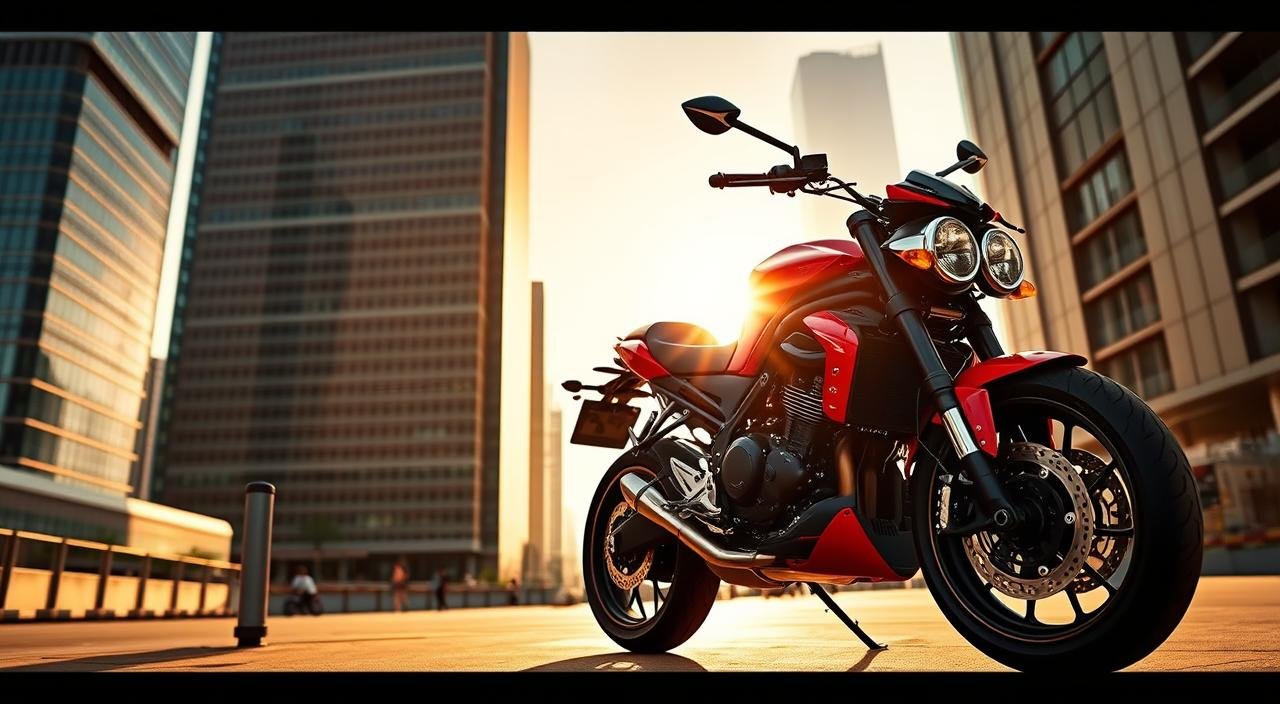
Oct
Only five motorcycles will roar through Indian streets as part of an exclusive 1,200-unit global production run. The Triumph Speed Triple 1200 RX has quietly appeared on the brand’s India website. This marks one of the rarest new bike launch events in recent memory. This limited-edition machine represents the pinnacle of performance engineering from Triumph motorcycles.
The British manufacturer has allocated just five units to the Indian market. This makes this one of the most exclusive motorcycles ever offered in the country. Each unit carries the legacy of the Speed Triple lineage while pushing boundaries with cutting-edge technology and raw power. The Triumph Speed Triple 1200 RX launched in India brings track-focused performance to street-legal machines.
This new bike launch signals Triumph’s commitment to delivering exceptional motorcycles to passionate riders. The Speed Triple 1200 RX combines aggressive styling with uncompromising performance. Indian motorcycle enthusiasts now have the chance to own a piece of motorcycling history with this limited production run.
Key Takeaways
- Only 5 units allocated to India from 1,200 global production
- Most performance-focused Speed Triple variant ever created
- Silently listed on Triumph India’s official website
- Limited-edition status ensures exclusivity for owners
- Represents the ultimate evolution of the Speed Triple lineup
- Track-bred performance meets street-legal requirements
Overview of the Triumph Speed Triple 1200 RX
The Triumph Speed Triple 1200 RX is a top-notch naked sports bike. It combines the latest tech with bold looks for an unmatched ride. It’s made for those who want top-notch performance and precision.
Key Features of the Speed Triple 1200 RX
The Triumph Speed Triple 1200 RX has advanced suspension tech. It has an Ohlins Mechatronic steering damper that adjusts to the road. This works with Ohlins Smartec 3.0 suspension for better stability and comfort.
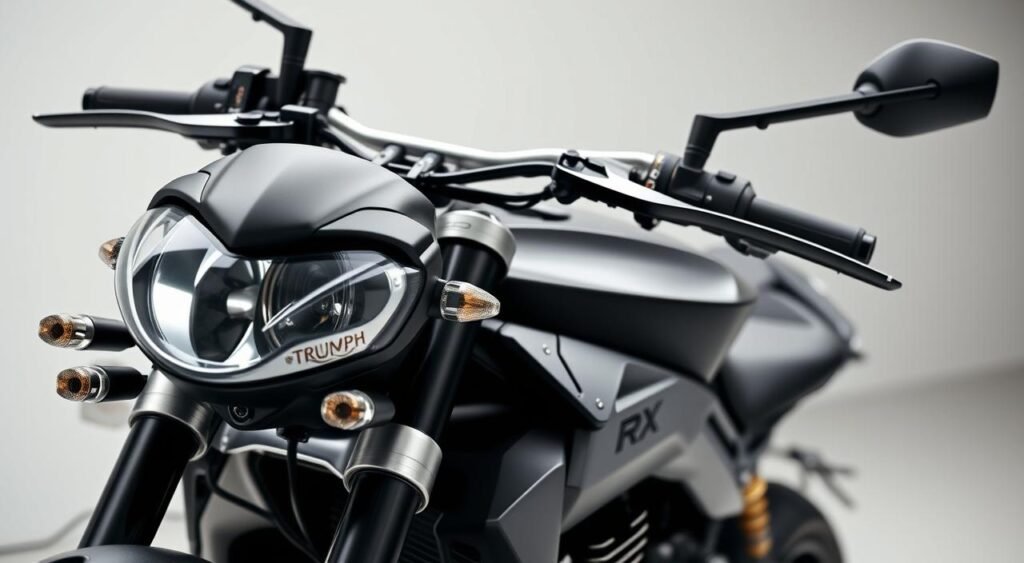
It comes with a titanium Akrapovic exhaust, cutting down on weight and boosting power. This makes it ready for the track right out of the box.
| Feature Category | Specification | Benefit |
|---|---|---|
| Suspension | Ohlins Smartec 3.0 | Electronic adjustment for all conditions |
| Steering | Ohlins Mechatronic Damper | Enhanced stability and control |
| Exhaust | Akrapovic Titanium | Weight reduction and power boost |
| Front Fender | Carbon Fiber | Reduced weight and premium aesthetics |
Design and Aesthetics
The Triumph Speed Triple 1200 RX has a unique black paint job with fluorescent yellow accents. Its RX graphics make it stand out. The carbon fiber front fender is both light and stylish, adding to its premium look.
Performance Specs of the Speed Triple 1200 RX
The Triumph Speed Triple 1200 RX is a powerhouse for motorcycle fans. It combines top-notch engineering with racing tech for an unmatched ride. Every part works together to set new standards for street riding.
Engine and Power Output
Its heart is a 1,163cc liquid-cooled inline triple-cylinder engine. This engine pumps out 180.5 horsepower and 127 Newton-meters of torque. The triple-cylinder design ensures smooth power from start to finish.
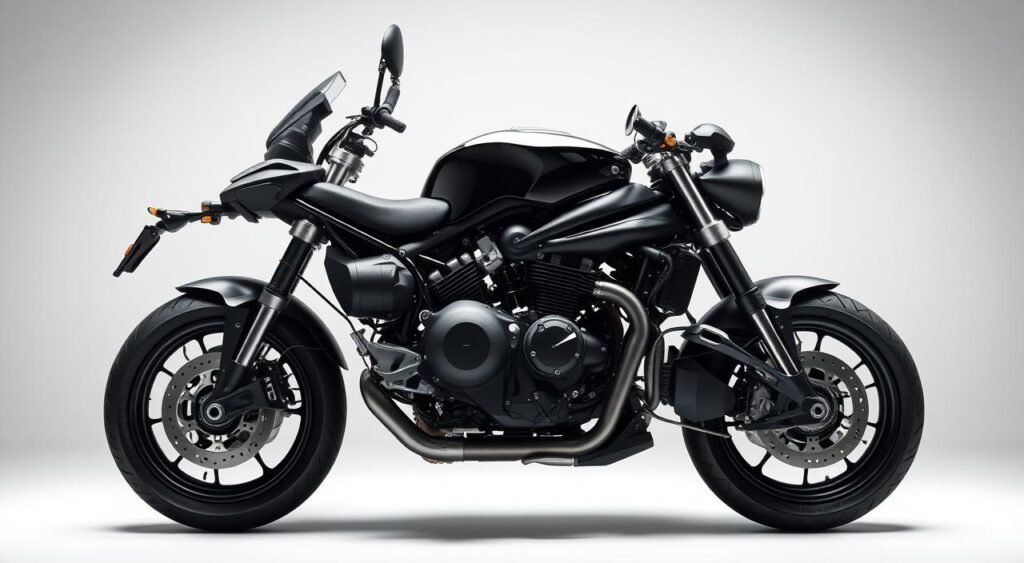
The six-speed gearbox and bi-directional quick shifter make shifting fast and easy. You can shift up or down without using the clutch, keeping the ride smooth. This tech brings race track speed to the streets.
Suspension and Handling
The Speed Triple has Ohlins semi-active suspension for top-notch handling. It adjusts to the road in real-time, making every ride better. A steering damper keeps the handlebars steady during quick turns.
Pirelli Supercorsa SP V3 tires grip the road well in corners and straight lines. These tires let riders push the bike to its limits. The advanced suspension and premium tires make the ride stable and predictable.
Technological Advancements in the Speed Triple 1200 RX
The Triumph Speed Triple 1200 RX is a top-notch bike with the latest tech. It has features that make it stand out in the market. This bike is all about high-tech electronics and rider-focused innovations.
Rider Assistance Features
The Speed Triple 1200 RX has five riding modes for different situations. Rain mode is gentle for wet roads, while Road mode is balanced for daily use. Sport mode is for those who love to ride fast, Track mode is for the ultimate thrill, and Rider mode lets you set your own preferences.
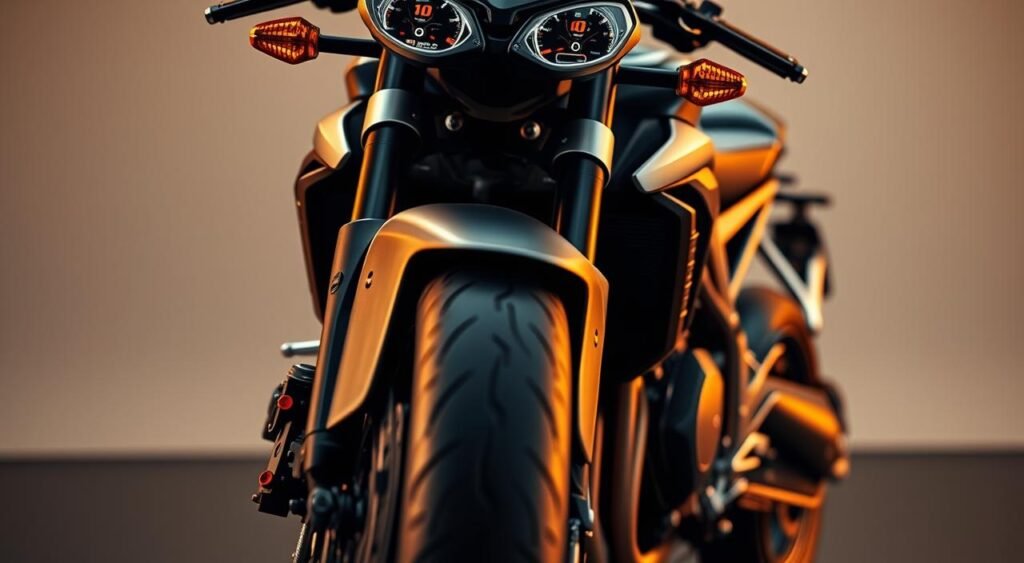
It also has cornering ABS to help you brake smoothly in corners. The traction control system keeps an eye on wheel slip and adjusts power. Wheelie control stops the front wheel from lifting during quick starts. Cruise control helps on long rides by making it easier to keep a steady speed.
Infotainment System
The bike has a full-color TFT display that’s easy to see in any light. It shows important info in different layouts, catering to all riders.
| Display Feature | Function | Benefit |
|---|---|---|
| TFT Screen | 5-inch color display | Clear visibility day/night |
| Navigation Ready | Turn-by-turn directions | Seamless route guidance |
| Bluetooth Connectivity | Phone/music integration | Hands-free communication |
| Ride Statistics | Performance tracking | Monitor riding data |
The Speed Triple 1200 RX is a top choice in India. It combines high performance with useful tech.
Comparison with Previous Models
Triumph motorcycles keep impressing riders all over the world. The new Triumph Speed Triple 1200 RX shows the brand’s dedication to top-notch performance. This special edition is a big step up from its predecessors, thanks to decades of engineering and new tech and design.
Speed Triple 1050 vs. 1200 RX
The move from a 1050cc engine to a 1200cc one is a big change for the Triumph Speed Triple. The 1050 model had 133 horsepower, but the 1200 RX has 177 horsepower at 10,750 rpm. This means a 33% power boost, changing the ride completely.
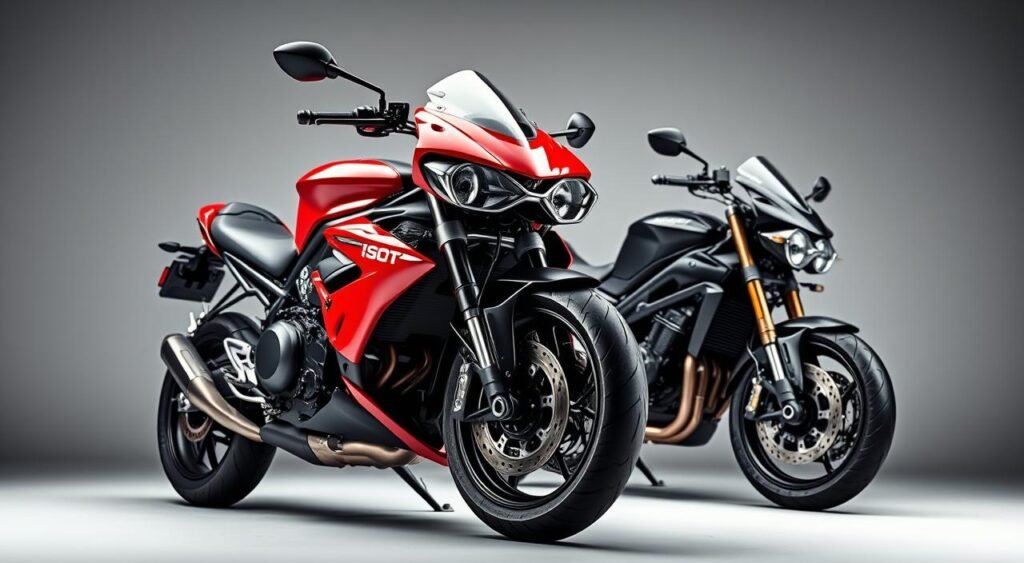
- Engine displacement increased from 1050cc to 1200cc
- Torque output jumped from 82 lb-ft to 92 lb-ft
- Weight reduction of approximately 22 pounds despite larger engine
- Updated electronics package with cornering ABS and traction control
What’s New in the Latest Edition
The 1200 RX edition is an upgrade from the RS model, with track-focused enhancements. It has an Akrapovic titanium and carbon-fiber exhaust system. This system gives a thrilling sound and meets emissions standards. Its limited production makes it highly sought after by collectors and performance seekers.
Price and Availability in India
The Triumph Speed Triple 1200 RX is priced at Rs. 23.07 lakh (ex-showroom) in India. This price is Rs. 1.31 lakh more than its RS sibling. It shows the RX’s unique features and its special status in the market.
Launch Date and Market Reception
Triumph has brought only five Speed Triple 1200 RX bikes to India. Out of 1,200 made globally, this makes it a rare find. This move aims to keep the bike’s appeal high and test its popularity in India.
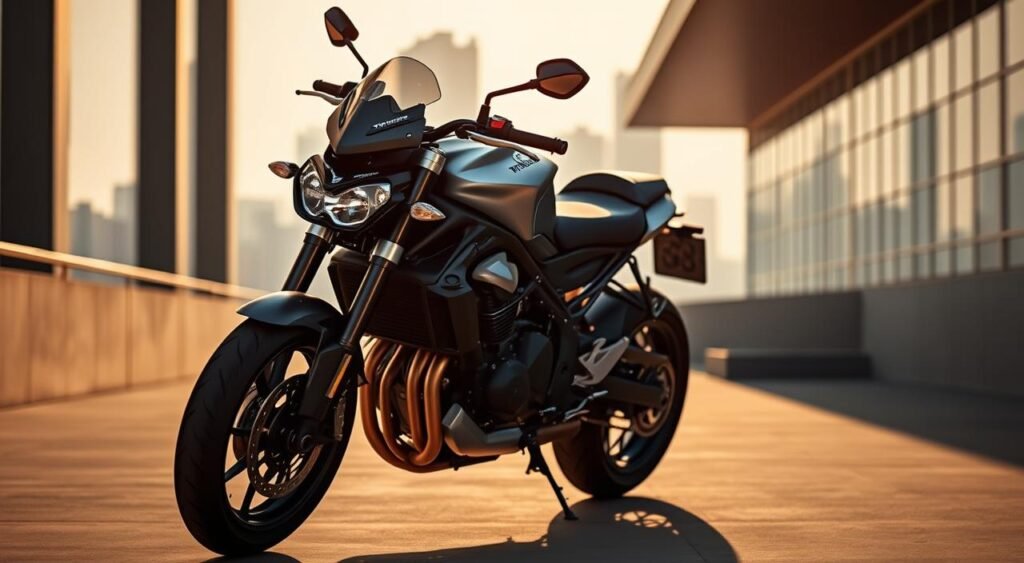
Pricing Strategy and Competitors
The Speed Triple 1200 RX is priced to match its high-end features and rarity. Here’s how it compares to other sports naked bikes:
| Motorcycle Model | Price (Ex-showroom) | Engine Capacity |
|---|---|---|
| Triumph Speed Triple 1200 RX | Rs. 23.07 lakh | 1160cc |
| Ducati Streetfighter V4 | Rs. 22.99 lakh | 1103cc |
| BMW S 1000 R | Rs. 20.25 lakh | 999cc |
| Kawasaki Z H2 | Rs. 25.90 lakh | 998cc |
The high price makes the bike a collector’s item in India. It’s for those who want something rare and top-notch.
Customer Reactions and Reviews
The Triumph Speed Triple 1200 RX has sparked a lot of talk in India’s biking world. Its limited availability and high price make it a hot topic. This exclusivity has caught the attention of serious riders looking for something unique.
Enthuasiast Perspectives
Motorcycle fans in India are really excited about the Speed Triple 1200 RX. The Rs. 20.16 lakh price doesn’t scare off serious buyers. They see the value in the Ohlins suspension and Akrapovic exhaust, which make this bike stand out.
- Superior cornering stability with Ohlins Smart EC 2.0 suspension
- Enhanced exhaust note from the Akrapovic system
- Exclusive Storm Grey paint scheme with red accents
- Limited production numbers ensuring exclusivity
Expert Opinions
Industry experts say Triumph has made a smart move in India. Reviewers think the Rs. 1.31 lakh extra cost is worth it for the big upgrades.
| Review Aspect | Expert Rating | Key Comments |
|---|---|---|
| Value Proposition | 4.5/5 | Premium justified for serious riders |
| Performance Upgrades | 5/5 | Ohlins and Akrapovic transform the experience |
| Market Positioning | 4/5 | Perfect for track-day motorcycle enthusiasts |
| Exclusivity Factor | 5/5 | Limited units create strong desirability |
Promotional Events and Marketing Strategies
The Triumph Speed Triple 1200 RX launched in India with a unique marketing plan. It surprised the motorcycle world. Unlike usual debuts with big events, Triumph took a different route for this powerful bike’s introduction in India.
Launch Event Highlights
Triumph’s plan for the Speed Triple 1200 RX in India was a silent release on its website. The company skipped traditional press conferences or dealer events. Instead, the bike showed up on Triumph India’s website without any warning or teasers.
This quiet approach surprised fans. People found out about it while browsing the website. This led to buzz on social media and word-of-mouth. The news of limited stock made people act fast.
Media Coverage
Car magazines quickly shared news about the Triumph Speed Triple 1200 RX in India. Top sites like Autocar India talked about the surprise listing. They reached many readers through their platforms.
The media talked about:
- Technical specs and prices
- How it compares to other bikes
- Triumph’s unique launch strategy
- Photos showing off its design
This coverage helped reach customers without spending on ads. It showed Triumph’s faith in the Speed Triple 1200 RX’s appeal to picky riders.
Accessories and Customization Options
The Speed Triple 1200 RX comes with many premium accessories. These make it stand out from other Triumph motorcycles. Riders can customize their bike to fit their style and preferences.
Popular Accessories for the Speed Triple
The Akrapovic titanium and carbon-fiber exhaust system is a top choice. It’s lighter and gives a unique sound. The carbon fiber front fender also adds style and protection.
Riders who love sports will like the lowered handlebars and rear-set footpegs. These features make the bike perfect for racing and carving through canyons. Other popular accessories include:
- Quick-shifter for clutchless gear changes
- Heated grips for all-weather riding
- Tank protection pads
- LED fog lights
- Tail tidy kits
Official Triumph Customization Programs
Triumph has an official customization program. Dealers can install genuine accessories, keeping the warranty valid. You can use a configurator tool on Triumph’s website to see different options.
Prices for accessories start at ₹5,000 and go up to ₹75,000 for full packages. Dealers often offer discounts on bundles. The RX comes with many premium parts, saving buyers about ₹1,50,000 compared to buying them separately.
Maintenance and Service Information
The Triumph Speed Triple 1200 RX is a big deal in the Indian motorcycle world. It comes with top-notch engineering that needs special care. With its advanced Ohlins Smartec 3.0 suspension and Akrapovic exhaust, it’s best to get it serviced by pros. Triumph has set up detailed service plans to help its owners.
Recommended Maintenance Schedule
Keeping the Speed Triple 1200 RX in top shape is key. Its smart electronics and high-performance parts need regular checks at authorized shops.
| Service Interval | Maintenance Tasks | Estimated Cost (INR) |
|---|---|---|
| 500 km (First Service) | Oil change, chain adjustment, initial inspection | 4,500 – 5,500 |
| 10,000 km | Oil filter replacement, brake fluid check, suspension inspection | 8,000 – 10,000 |
| 20,000 km | Valve clearance check, coolant replacement, spark plug change | 15,000 – 18,000 |
| 30,000 km | Major service including all fluids, filters, and component inspection | 22,000 – 25,000 |
Warranty and Service Packages
Triumph gives comprehensive warranty coverage for the Speed Triple 1200 RX. The standard warranty is two years with no mileage limit. You can also get an extended warranty for four years, which is great for long-term owners. There are service packages that include prepaid maintenance plans. These plans can save you up to 20 percent on service costs compared to paying for each service separately.
Future Prospects for Triumph in India
Triumph is making a bold move by introducing the Triumph Speed Triple 1200 RX with just five units. This is a smart way to test the waters in India’s high-end motorcycle market. It’s for those who love rare, top-notch bikes.
Expansion Plans and New Models
Triumph wants to grow its presence in big Indian cities. After launching the Speed Triple 1200 RX, dealerships in Mumbai, Delhi, Bangalore, and Chennai are getting ready. They expect to have more bikes soon.
By late 2024, Triumph plans to bring in three new models. These include:
- Updated Tiger 900 series for adventure touring fans
- Street Triple RS for those who love track days
- Scrambler 1200 XE for off-road adventures
Triumph might start making bikes in India soon. This could make their high-end bikes cheaper by 15-20%. It would help more people in the biking community get their hands on these bikes.
Target Audience Insights
In India, there are different types of motorcycle buyers. Young entrepreneurs aged 28-35 want bikes that show off their success. Older riders, on the other hand, love British bikes for their quality and history.
The biking community is also looking for bikes that are good for both the track and everyday riding. Research shows that 60% of buyers have more than one bike. And 40% enjoy track days or long trips.
This information helps Triumph plan its future bikes for India’s growing market.
Conclusion: Final Thoughts on the Triumph Speed Triple 1200 RX
The Triumph Speed Triple 1200 RX is a standout in India’s high-end motorcycle scene. It blends raw power with advanced tech for an unmatched ride. With 180.5bhp and Ohlins suspension, it’s among the top performance bikes. Its rarity adds to its allure, with only five units in India.
Summary of Key Takeaways
The Speed Triple 1200 RX shows Triumph’s dedication to top-notch performance. It’s designed for riders who love aggressive riding and precise handling. It comes with advanced features like multiple riding modes and cornering ABS, all for Rs. 23.07 lakh.
This bike is for those who prioritize performance over everyday use. It combines British craftsmanship with modern tech, making it unique. Riders can find support at Triumph dealerships across India, setting it apart from competitors.
Invitation for Reader Engagement
Leave your thoughts on the Triumph Speed Triple 1200 RX in the comments. It’s a chance to connect with other motorcycle fans. Visit a Triumph dealership for test rides and to learn more. Stay updated with our automotive section for more on motorcycles from India and worldwide.
FAQ
How many Triumph Speed Triple 1200 RX units are available in India?
Only 5 units of the Speed Triple 1200 RX are coming to India. Out of 1,200 made worldwide, this makes it very rare for Indian riders.
What is the price of the Triumph Speed Triple 1200 RX in India?
The Speed Triple 1200 RX costs Rs. 23.07 lakh ex-showroom in India. It’s Rs. 1.31 lakh more than the RS model. This price reflects its high-end features and limited availability.
What are the key performance specifications of the Speed Triple 1200 RX?
It has a 1,163cc engine that makes 180.5bhp and 127Nm of torque. It comes with a six-speed gearbox and a quick shifter for smooth shifting.
What special equipment comes standard on the Speed Triple RX?
The RX has Ohlins Mechatronic steering damper and Ohlins Smartec 3.0 suspension. It also has a titanium exhaust by Akrapovic and a carbon fiber front fender.
How many riding modes does the Speed Triple 1200 RX offer?
It has five riding modes: Rain, Road, Sport, Track, and Rider. This lets riders adjust the bike for different conditions and styles.
What distinguishes the RX from the standard Speed Triple RS variant?
The RX is the most aggressive Speed Triple with track-ready features. It has a special exhaust, Ohlins suspension, and a unique paint job. It’s also very rare.
How was the Triumph Speed Triple 1200 RX launched in India?
Triumph quietly listed the bike on its India website without announcing it. This sparked interest in the automotive media and among buyers.
What advanced rider assistance features are included in the Speed Triple RX?
It has cornering ABS, traction control, wheelie control, and cruise control. These features help riders manage the bike’s power and stay safe.
Who is the target audience for the Triumph Speed Triple 1200 RX in India?
It’s for wealthy motorcycle fans and serious riders. They want exclusive, high-performance bikes for the Indian market.
What type of tires does the Speed Triple RX use for optimal performance?
It uses Pirelli Supercorsa SP V3 tires. These tires offer great grip for aggressive riding, fitting the bike’s track-ready design.
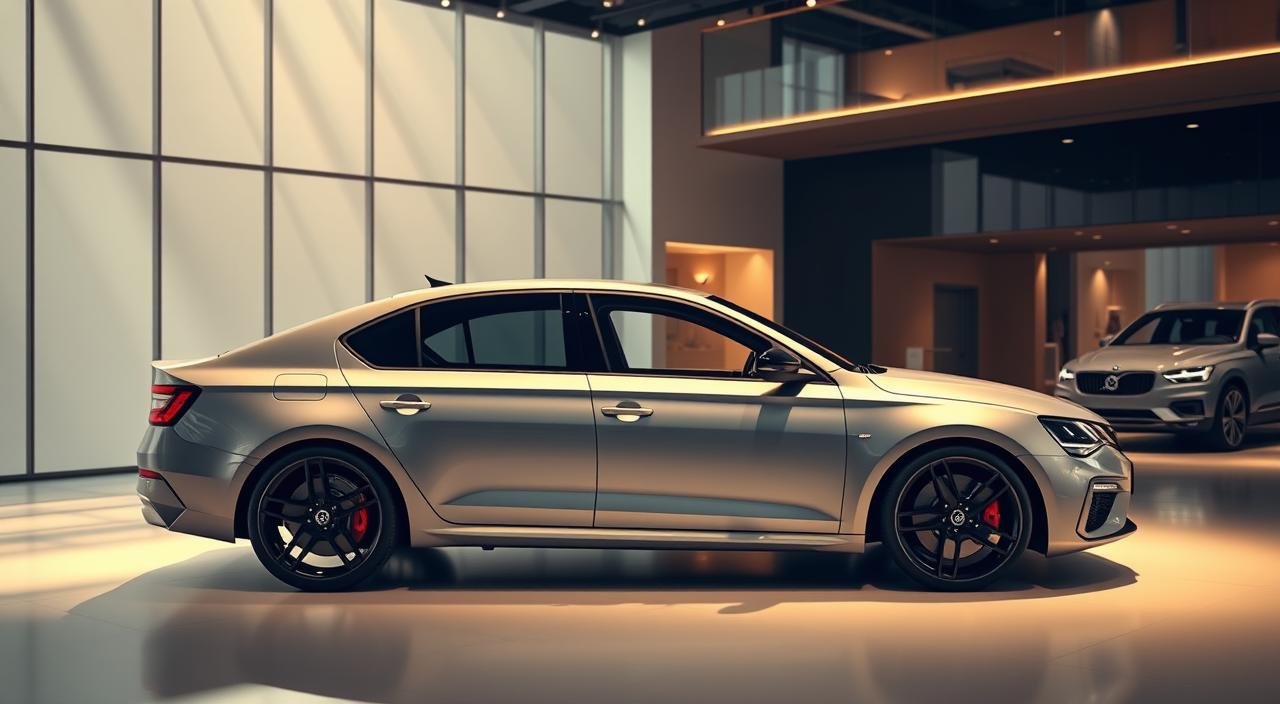
Oct
Every 12 seconds, a car lover in India booked the 2025 Skoda Octavia RS on October 6. In just 20 minutes, all 100 units were gone. This is one of the fastest car booking closures in India’s history.
The 2025 Skoda Octavia RS was launched at ₹49.99 lakh. It’s a big deal for the Czech automaker in India. Only 100 units were brought in from the Czech Republic, making it a rare performance sedan. Buyers paid ₹2.5 lakh to reserve their spot.
The Skoda Octavia RS 2025 is special because it brings back India’s turbo-petrol car history. The original Octavia RS came to India in 2004. It won the hearts of many, and now it’s back. The new model will start deliveries on November 6.
But, this exclusive launch left many fans sad. The limited number of units means most can’t get their hands on the Skoda Octavia RS 2025. The quick sellout shows how much people want performance sedans in India.
Key Takeaways
- All 100 units of the 2025 Skoda Octavia RS sold out in just 20 minutes
- Priced at ₹49.99 lakh ex-showroom with ₹2.5 lakh booking amount
- Imported as completely built units from Czech Republic
- Deliveries begin November 6 across Indian dealerships
- Marks the return of India’s first turbo-petrol passenger car heritage from 2004
- Limited availability leaves many enthusiasts unable to purchase the vehicle
Overview of the 2025 Skoda Octavia RS
The Czech automaker’s performance sedan is here with big upgrades. It’s priced at ₹49.99 lakh, making it worth the cost. This new model brings big improvements and keeps the brand’s promise of practical performance.
Introduction to Skoda’s Latest Model
The Skoda Octavia RS release date 2025 is a big deal for the brand in India. It has a strong 2.0-liter TSI petrol engine. This engine makes 265 PS (261.49 bhp) and 370 Nm of torque.
Power goes through a 7-speed DCT automatic transmission. This makes driving smooth in the city and fast when you want to go.
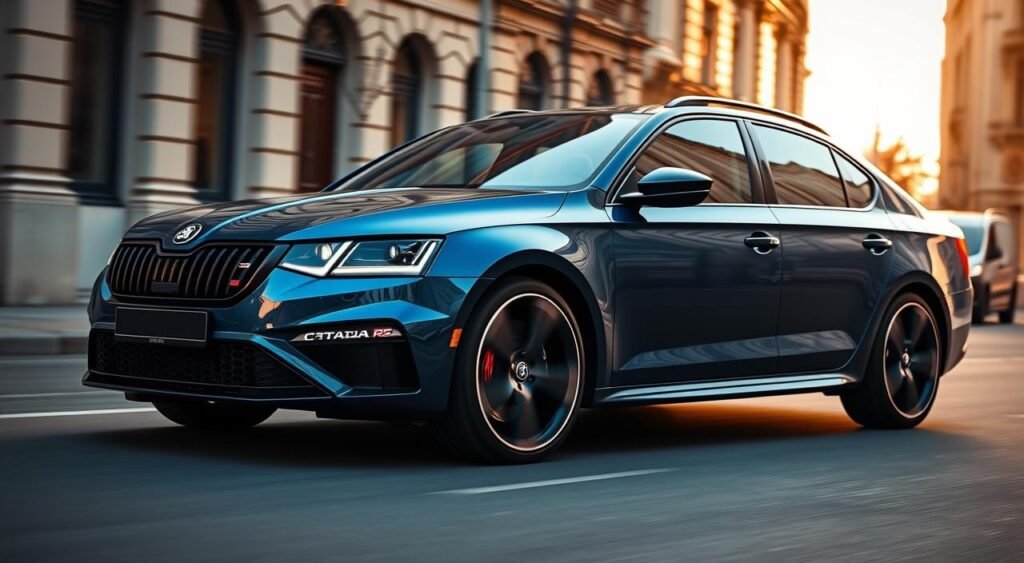
Key Features of the Octavia RS
The interior is packed with premium tech. It has a huge 13-inch touchscreen and a 10.25-inch digital driver display. Comfort features include:
- Three-zone automatic climate control
- 12-speaker Canton sound system
- Powered front seats with heating, memory, and massage functions
- 15W wireless charging pad with cooling technology
- Gesture-controlled powered tailgate
Performance Enhancements in the 2025 Model
The new RS has 20 PS more than the old RS 245. It uses the same powertrain as the Volkswagen Golf GTI. This means it benefits from German engineering.
An electronic differential lock helps with cornering. The brakes are upgraded for better stopping. The suspension and steering are also improved for better handling.
Pricing Details and Currency Conversion
The latest Skoda Octavia RS news 2025 has an interesting pricing structure. It starts at ₹49.99 lakh (ex-showroom). This makes it a single fully loaded variant in the Indian market.
The CBU (Completely Built Unit) import status is key to its premium price. It’s much more expensive than locally made cars.
Breakdown of the ₹49.99 Lakh Price Tag
The Skoda Octavia RS’s price in India is high due to its import status and premium features. It has a Euro NCAP 5-star safety rating from 2022. This adds a lot of value.
There’s only one variant, which makes buying easier but might not appeal to those on a budget.
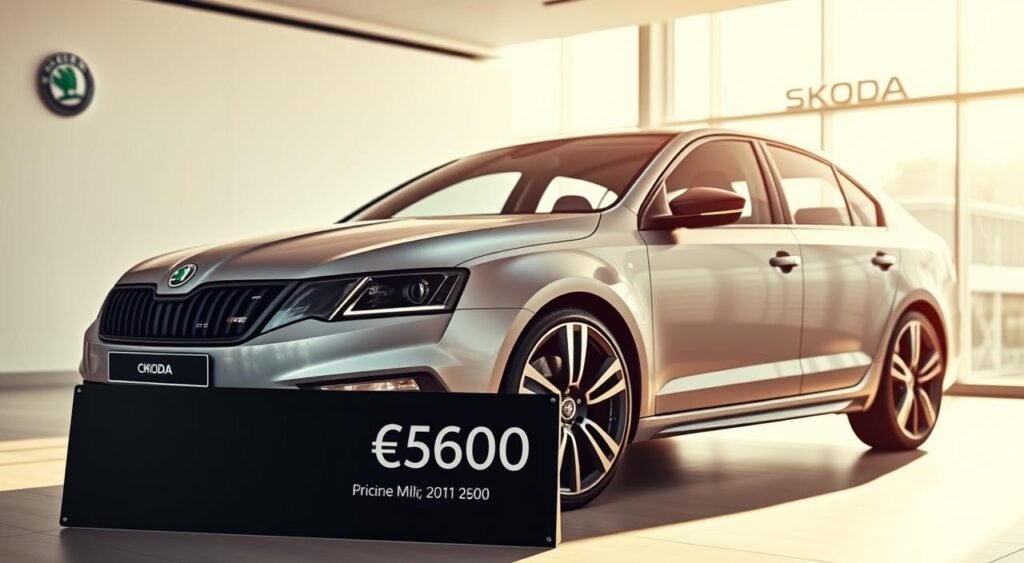
Comparison with U.S. Car Pricing
Comparing the Indian price to the U.S. market shows interesting differences. The ₹49.99 lakh is about $60,000. This puts it in a competitive spot with other performance sedans.
| Model | Indian Price (₹ Lakh) | USD Equivalent |
|---|---|---|
| Skoda Octavia RS | 49.99 | $60,000 |
| Volkswagen Golf GTI | 50.91 | $61,100 |
| Toyota Camry | 47.48 | $57,000 |
| Mercedes-Benz C-Class | 58.65-64.30 | $70,400-77,200 |
Value for Money: Is It Worth It?
The Skoda Octavia RS news 2025 offers a complex value proposition. It’s priced higher than the Toyota Camry but lower than luxury cars like the Mercedes-Benz C-Class. It stands in a unique market space.
The performance-focused engineering and safety features justify the higher price. Import duties, though, make it less competitive than if it were made locally.
Why You Can’t Buy the 2025 Skoda Octavia RS
The 2025 Skoda Octavia RS launched at ₹49.99 lakh has sparked huge excitement in India. Sadly, American car lovers face a tough reality. This high-performance sedan is not available for purchase in the United States.
Market Availability Issues
The Skoda Octavia RS 2025 has severe supply issues, making it hard to buy. Skoda only brought 100 units to India through CBU import from the Czech Republic. These cars sold out in just 20 minutes after bookings opened.
Customers had to pay ₹2.5 lakh as a deposit to book. This high deposit ensured only serious buyers were involved.
Regional Restrictions for U.S. Buyers
American buyers can’t get the 2025 Skoda Octavia RS due to strict regional rules. Skoda set aside these 100 units for India only. They have not planned to sell this model in North America.
Production Limits and Allocation Challenges
The limited supply comes from Skoda’s CBU import strategy, not local making. This method limits production and raises costs. The demand is much higher than the supply, leaving many fans disappointed in India and worldwide.
Engine Specifications and Performance
The 2025 Skoda Octavia RS has a turbocharged petrol engine. It delivers exciting performance. This sports sedan combines power and engineering for a thrilling drive. Fans are excited for the Skoda Octavia RS release date 2025 and the price of ₹49.99 lakh.
Engine Power and Specs Overview
The Octavia RS’s engine is a 1984 cc turbocharged petrol. It makes 265 PS of power, or 261.49 bhp. It also produces 370 Nm of torque, sent through a 7-speed dual-clutch automatic transmission.
The car has front-wheel drive. This ensures power delivery and traction control.
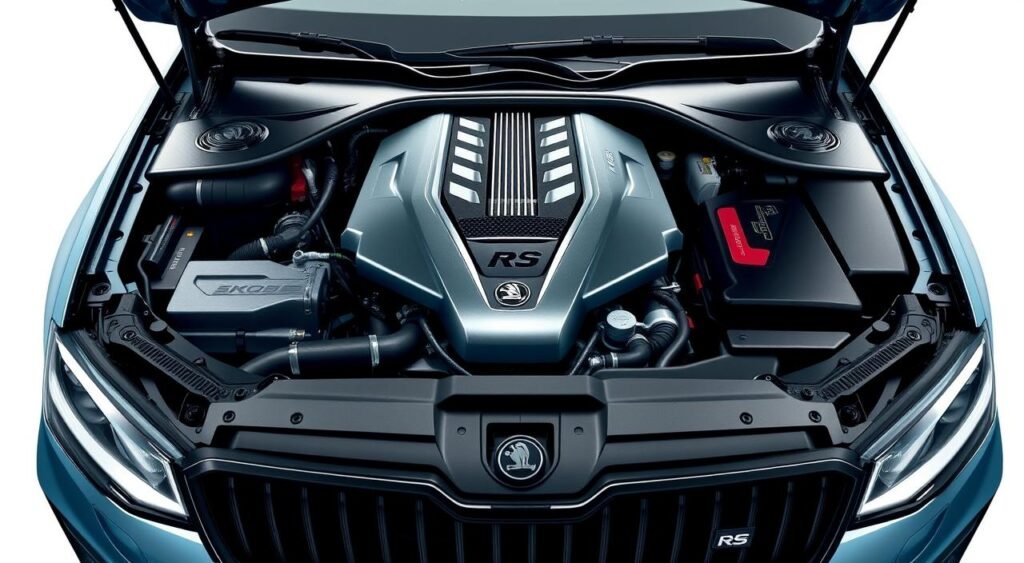
Fuel Efficiency Ratings and Goals
The Octavia RS runs on petrol fuel. It balances performance with efficiency. Skoda chose petrol to focus on sports car dynamics.
The engine uses advanced technology to save fuel. It keeps the power high, justifying the price.
Acceleration and Handling Features
The Octavia RS accelerates fast. It goes from 0-100 kmph in 6.4 to 6.6 seconds. It has a top speed of 250 kmph.
The car is 15mm lower than the standard Octavia. This improves aerodynamics and handling. A performance exhaust system adds to its sporty character. The 600-litre boot is practical for daily use.
| Specification | Performance Data |
|---|---|
| Engine Displacement | 1984 cc |
| Maximum Power | 265 PS / 261.49 bhp |
| Peak Torque | 370 Nm |
| 0-100 kmph | 6.4-6.6 seconds |
| Top Speed | 250 kmph |
| Transmission | 7-speed DCT |
| Boot Space | 600 litres |
Technological Innovations in the 2025 Octavia RS
The 2025 Skoda Octavia RS is a game-changer in car tech. It blends digital innovation with features that focus on the driver. This makes the latest Skoda Octavia RS news 2025 a big deal for tech lovers. It shows Skoda’s dedication to adding top-notch tech to sporty sedans.
Infotainment System Features
The Octavia RS’s heart is a huge 13-inch touchscreen. It works great with a 10.25-inch digital driver display. You get Android Auto and Apple CarPlay right out of the box for easy phone connection. The Canton premium sound system offers amazing sound through 12 speakers.
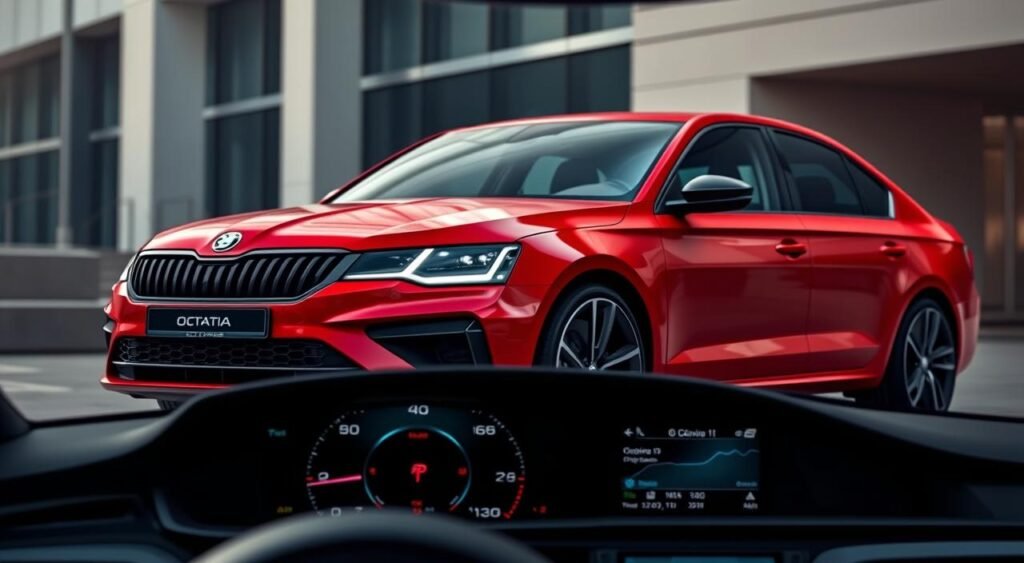
Advanced Safety Technologies
Safety is a top priority in the Octavia RS. It has ten airbags for extra protection. The 360-degree camera system gives you a full view of your surroundings. It also has adaptive cruise control, lane keep assist, and blind spot detection for safer driving.
Other safety features include ESC, ABS with EBD, hydraulic brake assist, and auto park assist. These systems make driving more confident.
Connectivity Options for Drivers
The Octavia RS offers modern connectivity. It has wireless smartphone charging with a cooling pad to avoid overheating. Rear passengers get their own Type-C USB ports for charging. Heated outside rear view mirrors add comfort in cold weather.
These features highlight why the Skoda Octavia RS is a topic of interest for Indian car buyers. They’re looking for premium connectivity solutions.
Exterior Design Highlights
The 2025 Skoda Octavia RS Launched at ₹49.99 Lakh has a bold new look. It mixes sporty aggression with European elegance. This makes it a standout in the performance sedan world.
Stylish New Look: Design Changes
The Skoda Octavia RS 2025 has a striking butterfly grille in glossy black. It proudly shows off the RS badge. Sleek dual-pod matrix LED headlights add to the aggressive front look.
The car is 15mm lower than the standard Octavia. This gives it a sporty stance on the road.
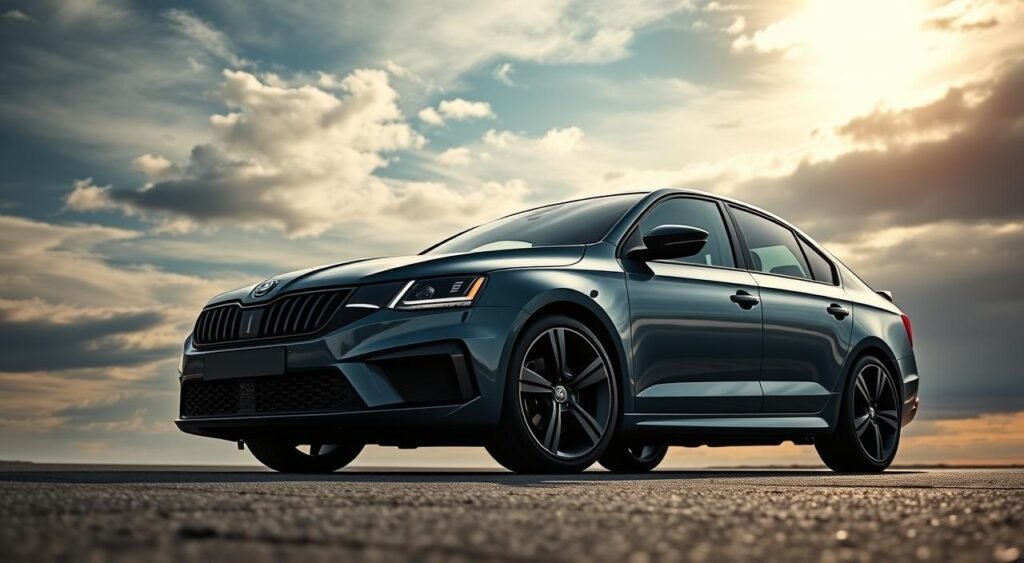
The rear has LED taillights with sequential turn indicators. A black lip spoiler adds to the sporty vibe. The dual exhaust setup and notchback-style tailgate complete the look.
Colors and Customization Options
There are five unique colors for the 2025 Skoda Octavia RS Launched at ₹49.99 Lakh:
- Mamba Green – Bold metallic finish
- Magic Black – Classic deep gloss
- Candy White – Pure pearl effect
- Race Blue – Dynamic metallic shade
- Velvet Red – Premium metallic option
Aerodynamics and Performance Influences
The Skoda Octavia RS 2025 has 19-inch aero-styled alloy wheels. They’re red-painted and part of the RS design. These wheels cut down air resistance while keeping brakes cool.
The car’s lowered suspension and aerodynamic body kit reduce drag. They also improve stability at high speeds.
Interior Comfort and Features
The 2025 Skoda Octavia RS has a cabin that’s both sporty and comfy. It’s getting ready for its release in 2025. The inside is all black with red accents, making it feel luxurious and sporty at the same time.
Interior Space and Layout
The Octavia RS can seat five people comfortably. The back seats are great for two adults and a child, with extra thigh support for long trips. There are AC vents and USB ports for charging back there.
This layout is all about comfort and space. It’s perfect for daily driving, even though it’s a sports sedan.
Upholstery and Material Quality
The seats are covered in Suedia and leatherette materials. The front seats have RS badging, showing off the car’s sporty side. The RS steering wheel and metallic pedals add to the sporty feel.
Considering the Skoda Octavia RS pricing, the materials are a great value. They make the car feel premium and sporty.
User-Friendly Features and Controls
| Feature Category | Available Options |
|---|---|
| Climate Control | 3-zone automatic system |
| Front Seat Functions | Power adjustment, heating, memory, massage |
| Storage Solutions | Front center armrest with compartment |
| Charging Ports | Two rear Type-C USB ports |
The front seats are powered, with heating, memory, and massage. This makes long drives or daily commutes more comfortable. The 3-zone automatic climate control lets everyone set their own temperature.
Competitive Landscape: Who Does It Compete With?
The 2025 Skoda Octavia RS enters a crowded market. It faces off against established performance sedans and luxury cars. With a price of Rs 49.99 lakh, it aims to stand out against both mainstream and luxury rivals in India.
Key Competitors in the Market
The Octavia RS competes directly with the Volkswagen Golf GTI, priced at Rs 50.91 lakh. Both cars have the same 261 bhp engine and 1984cc turbocharged power. The Toyota Camry, priced at Rs 47.48 lakh, offers a naturally aspirated engine with 227 bhp.
Premium German rivals include the Mercedes-Benz C-Class (Rs 58.65-64.30 lakh) and Audi Q3 (Rs 43.07-52.98 lakh).
Comparing Performance and Pricing
| Model | Price (Rs Lakh) | Power (bhp) | Engine (cc) | Boot Space (liters) |
|---|---|---|---|---|
| Skoda Octavia RS | 49.99 | 261 | 1984 | 600 |
| Volkswagen Golf GTI | 50.91 | 261 | 1984 | 380 |
| Toyota Camry | 47.48 | 227 | 2487 | 524 |
| Mercedes-Benz C-Class | 58.65-64.30 | 197-254 | 1496-1993 | 455 |
| Audi Q3 | 43.07-52.98 | 187.74 | 1984 | 530 |
Unique Selling Points of the Octavia RS
The latest Skoda Octavia RS news for 2025 highlights its advantages. Its sedan body style offers superior practicality compared to the Golf GTI’s hatchback. It has a 600-liter boot space, the largest among its competitors, making it great for families.
The Octavia RS also features 10 airbags, more than most rivals. Despite limited availability, it is priced lower than the Mercedes-Benz C-Class but matches its performance.
Consumer Reception and Reviews
The Skoda Octavia RS 2025 has won over many car fans in India. It has a 4.6 out of 5 stars user rating. People love how it combines sports performance with everyday use.
When it first came out, all the initial stock sold out in just 20 minutes. This shows how much people wanted it.
Early Reactions from Car Enthuasiasts
Car lovers are excited to see the Octavia RS back. The 2025 model is a reminder of 2004, when Skoda introduced India’s first turbo-petrol car. It has a big 600-liter boot, making it great for family trips.
The car’s bold colors and design elements make it stand out. It’s a sports sedan that looks as good as it drives.
Expectations from Future Buyers
People looking to buy the Skoda Octavia RS 2025 have certain hopes. They want a car that’s fun to drive on weekends but also comfortable for daily use. The Octavia RS meets these needs with its precise handling and smooth ride.
Buyers also like its bold look but also its professional appearance. It’s perfect for both weekend fun and business meetings.
Media Reviews and Critiques
Car critics have praised the timeless design and fun driving experience. They say the 2025 Skoda Octavia RS is a great value in the performance sedan market. They love its sharp steering and confident brakes.
Test drives show it’s refined at high speeds but also sporty. It’s a car that meets high expectations.
Future of the Skoda Octavia in the U.S. Market
The car world is always changing, and Skoda has big choices to make about the Octavia RS in the U.S. The Skoda Octavia RS release date 2025 is a big deal for Indian fans, but U.S. fans are also keeping their hopes up. The brand is watching the market closely before it decides to bring the Octavia RS to the U.S.
Potential for Future Releases
Skoda is testing the waters with a limited 100-unit release in India. This move helps them see if people want performance sedans. They watch sales and feedback to decide if they should sell more cars. If they do well in India, they might bring the Octavia RS to more places, including the U.S.
Market Trends that Could Affect Availability
Several things could help or hurt Skoda’s chances in the U.S.:
- Rising demand for performance sedans under $70,000
- Increasing interest in European performance vehicles
- Shift toward premium compact sedan segments
- Growing enthusiasm for unique automotive offerings
The price of the Skoda Octavia RS would need to change for the U.S. market. It also has to meet U.S. safety and emissions rules, which are different from India’s.
Long-Term Brand Strategy in the U.S.
Skoda looks at markets where the Octavia has a strong history. They focus on places where sales and brand recognition are growing. Any U.S. expansion would require establishing dealer networks, service centers, and parts distribution channels – big investments that need careful planning.
Conclusion: What Lies Ahead for the Skoda Octavia RS
The 2025 Skoda Octavia RS is a big deal for Skoda’s performance cars. All 100 units sold out in just 20 minutes. This shows a big interest in high-performance sedans in India.
This interest is a clear sign for Skoda. It shows they should make more RS models for other markets too.
Final Thoughts on Availability
Skoda Octavia RS is very hard to get, as all units are sold. The first cars will arrive on November 6. This is the first time the RS badge will be back in India.
By only making a few, Skoda can see how people react. They also want to make owning one special. The quick sellout might make them think about making more.
Significance for Skoda Brand in the U.S.
American buyers can’t get this model, but it’s a big win for Skoda. The Octavia RS news in 2025 shows more people want cars that are both fun and useful. It has a 5-star safety rating and lots of features.
This success in India could help Skoda plan for other markets. It might even help them decide to bring the Octavia RS to the U.S. one day.
Hopes for Future Opportunities to Own One
The success of the first batch means Skoda might make more. They will think about this before deciding on future Octavia RS models. Car lovers everywhere should be excited.
This shows there’s a big demand for cars that are both fun to drive and practical. It’s a good sign for the future of performance sedans.
FAQ
What is the price of the 2025 Skoda Octavia RS and when was it launched?
The 2025 Skoda Octavia RS launched at ₹49.99 lakh (ex-showroom) in India. Bookings opened on October 6, 2024. All 100 units sold out in 20 minutes, with deliveries starting from November 6, 2024.
Is the Skoda Octavia RS available in the United States?
No, the 2025 Skoda Octavia RS is not for the U.S. market. It’s for India only, coming from the Czech Republic. Only 100 units were made for this release.
What are the engine specifications of the 2025 Octavia RS?
The Octavia RS has a 2.0-liter TSI petrol engine. It makes 265 PS (261.49 bhp) and 370 Nm of torque. It goes from 0-100 kmph in 6.4-6.6 seconds, with a top speed of 250 kmph.
What are the key technological features of the Skoda Octavia RS 2025?
It has a 13-inch touchscreen and a 10.25-inch digital display. It also has a 12-speaker sound system and 10 airbags. It has full ADAS, a 360-degree camera, and wireless charging.
How does the Skoda Octavia RS pricing compare to its competitors?
At ₹49.99 lakh, it’s priced well against the Volkswagen Golf GTI (₹50.91 lakh). It’s above the Toyota Camry (₹47.48 lakh) but below the Mercedes-Benz C-Class (₹58.65-64.30 lakh). It has more boot space than the Golf GTI.
What is the Skoda Octavia RS release date for deliveries?
Deliveries start from November 6, 2024. But, all 100 units were sold out in 20 minutes after bookings opened on October 6, 2024.
What colors are available for the 2025 Octavia RS?
It comes in five colors: Mamba Green, Magic Black, Candy White, Race Blue, and Velvet Red. It has 19-inch alloy wheels and red brake calipers.
Why is the Skoda Octavia RS availability so limited?
Only 100 units are for India, imported from the Czech Republic. This limits both pricing and production.
What safety ratings does the 2025 Octavia RS have?
It has a Euro NCAP 5-star safety rating from 2022. It has 10 airbags, ESC, and a full ADAS suite.
Will there be future releases of the Skoda Octavia RS in other markets?
Skoda is checking the market response in India. The demand was high, with all units sold out quickly. This might influence future releases, but no U.S. plans have been announced.
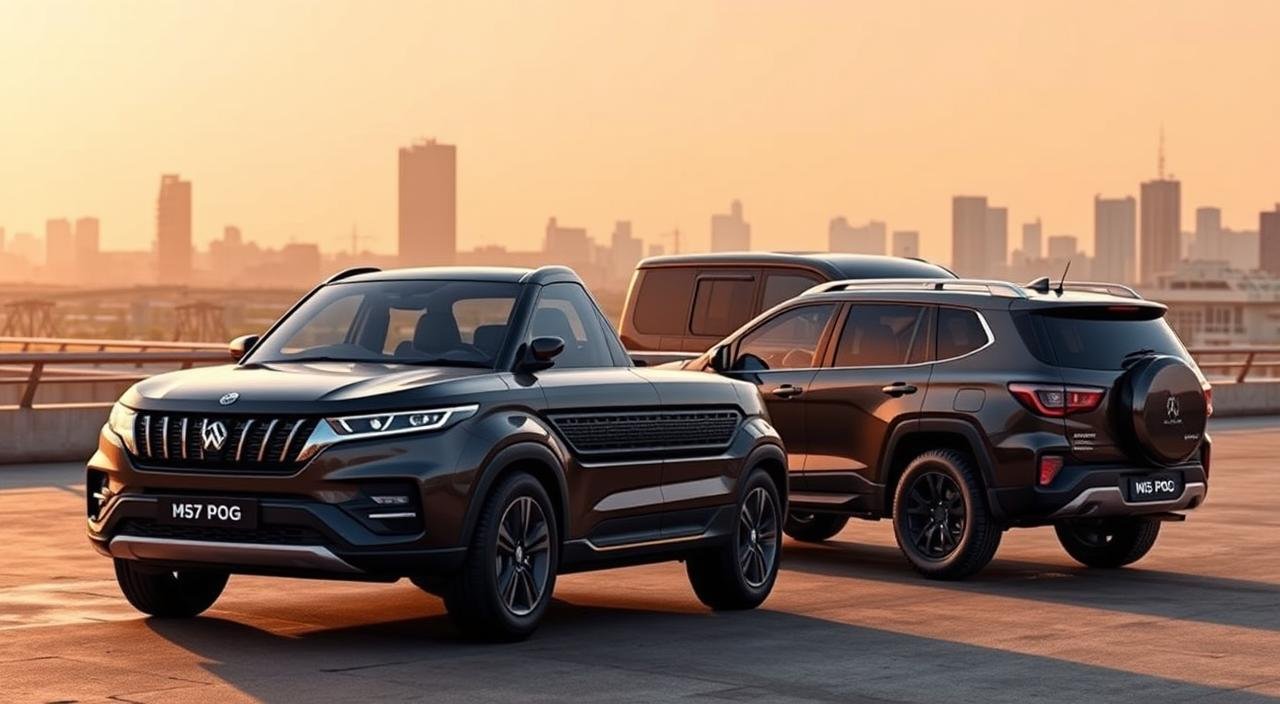
Oct
In 2024, India saw 39 different 7-seater vehicles. Prices ranged from ₹5.76 lakh to ₹2.15 crore. This shows a big change in what families want for transport.
Families now look for 7-seater SUVs that are affordable in 2025. They want vehicles that are big inside but not too expensive. The best deals are under ₹30 lakh, with great value and features.
Brands like Mahindra XUV700, Tata Safari, and Hyundai Alcazar have set new standards. They offer safety, comfort, and strong performance at good prices.
Today, there are many choices available. The Kia Carens starts at ₹10.99 lakh, and the Toyota Innova Hycross is ₹18.86 lakh. Each car meets different family needs and driving styles.
Key Takeaways
- Six standout models dominate the sub-₹30 lakh segment with prices starting from ₹10.99 lakh
- Mahindra leads market preferences with three popular models in this category
- Price range varies significantly from Kia Carens at ₹10.99 lakh to Toyota Innova Hycross at ₹18.86 lakh
- Safety ratings and fuel efficiency have become decisive factors for Indian buyers
- Resale value remains strongest for Toyota and Mahindra models
- Latest 2025 models feature enhanced technology packages at competitive prices
Introduction to 7-Seater SUVs Under ₹30 Lakh
The Indian car market is moving towards bigger family cars that are great value. It’s now easier to find cars that seat many, have lots of features, and are affordable. These cars meet the needs of Indian families, whether for city trips or long drives.
Importance of Budget-Friendly Options
The cheapest 7-seater SUVs in India start at just ₹5.76 lakh. This makes them perfect for middle-class families. Cars like the Renault Triber and Maruti Ertiga offer great features without costing too much. Prices go up to more premium models, giving buyers choices based on what they need and can afford.
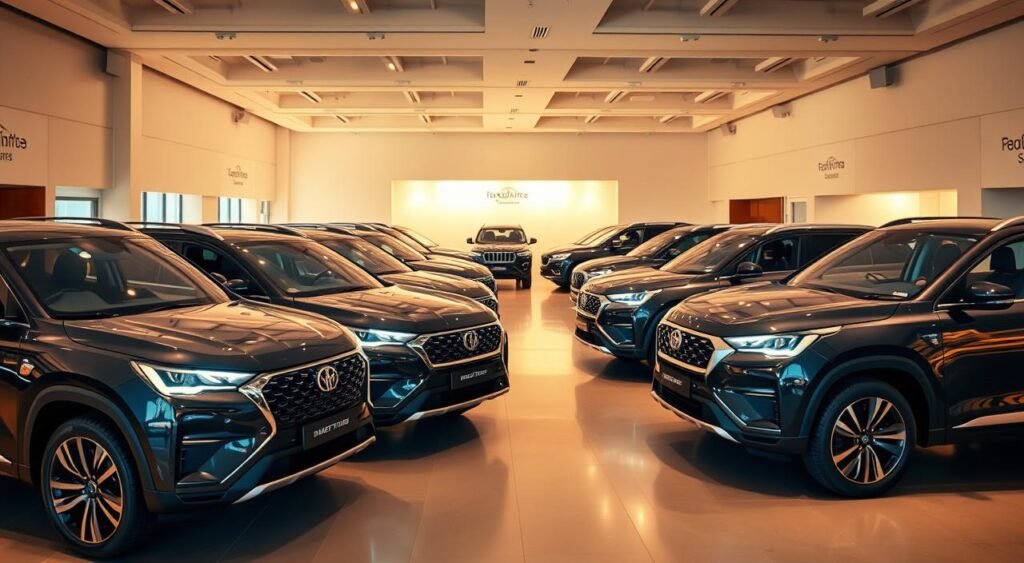
Growing Popularity in India
Joint families and group travel are making 7-seater SUVs more popular in India. Sales keep going up, with new models coming out all the time. City folks love these cars for weekend trips, while rural areas need them for daily travel.
Key Features to Look For
Smart buyers look at a few key things before choosing:
| Feature Category | Essential Elements | Why It Matters |
|---|---|---|
| Safety | NCAP ratings, airbags, ABS | Protects all passengers |
| Engine Options | Petrol, diesel, CNG variants | Affects running costs |
| Space Utilization | Third-row comfort, boot space | Determines practicality |
| Technology | Infotainment, connectivity | Enhances travel experience |
Top Contenders in the 7-Seater SUV Market
The Indian car market has grown a lot, with more family-friendly vehicles. The top 7-seater SUVs under 30 lakh are very competitive. They offer practicality and modern features for different family needs.
Overview of Popular Models
The Mahindra XUV700 leads with prices from ₹13.66 to ₹25.14 lakh. But, buyers might wait up to 98 weeks. The Mahindra Scorpio N is close, priced from ₹13.20 to ₹24.17 lakh, with a wait of up to 55 weeks.
The Toyota Innova Crysta is a premium choice, priced from ₹18.66 to ₹25.36 lakh. It comes in 7 and 8-seater options.
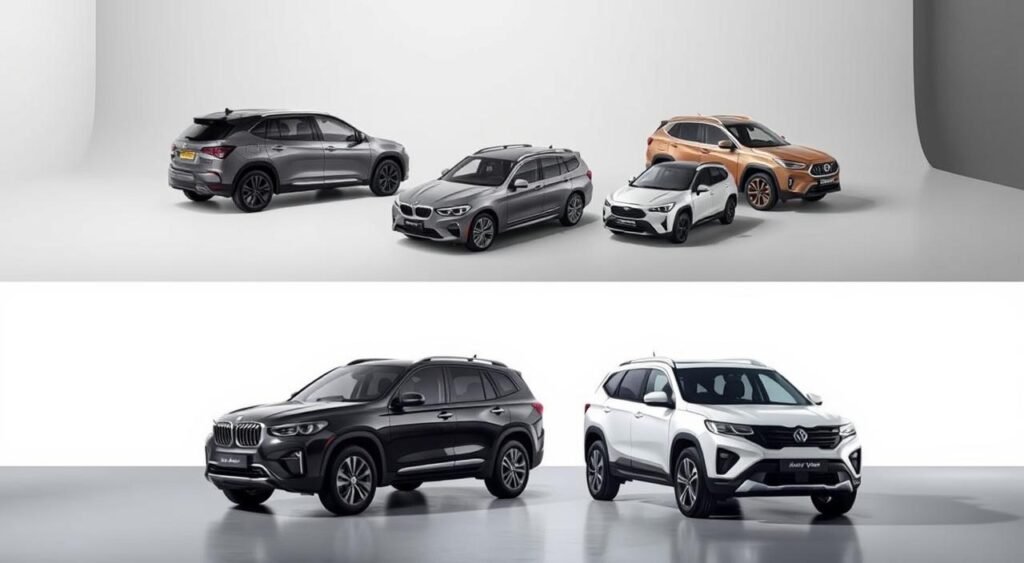
The Kia Carens is great for those on a budget, priced from ₹10.99 to ₹12.77 lakh. Tata Safari offers bold styling from ₹14.66 to ₹25.96 lakh. Hyundai Alcazar provides sophisticated options from ₹14.47 to ₹21.10 lakh.
Mahindra’s entry-level offerings include the Bolero at ₹7.99 lakh and Bolero Neo at ₹8.49 lakh.
Comparison of Features
Reviews for 2025 show different features in each model. Premium models have advanced safety, touchscreen infotainment, and more. Mid-range options offer key features at a lower price. Entry-level models provide basic needs without sacrificing safety.
Price Range and Variants
Prices vary based on engine type, transmission, and trim level. Trims like Executive, Signature, Smart, and Accomplished offer different features. This lets buyers choose based on their budget and needs.
Mahindra XUV700: The Value Champion
The Mahindra XUV700 is a top pick among the Best 7-Seater SUVs Under ₹30 Lakh in India 2025 Edition. It offers great technology and value for money. Prices start at ₹13.66 lakh and go up to ₹25.14 lakh. It has modern features, safety systems, and a spacious interior.
Engine Specifications
The XUV700 comes with two engine options. The petrol version has a 1999cc turbocharged engine. The diesel option has a bigger 2198cc engine. Both engines work with manual or automatic transmissions and get about 17 kilometers per liter.
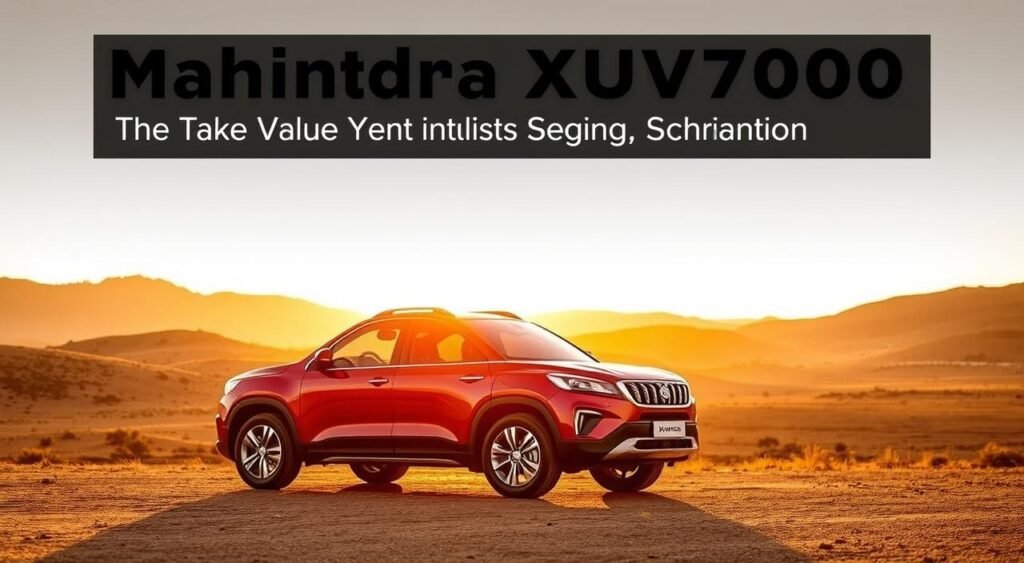
Features and Safety Ratings
Safety is a big deal in the XUV700. It has:
- Seven airbags across all variants
- Level 2 ADAS technology for better driving help
- Dual-screen infotainment with connected car features
- Digital instrument cluster for easy info display
- Premium cabin materials with ambient lighting
Customer Reviews and Acceptance
Buyers really like the XUV700. It’s among the Best 7-Seater SUVs Under ₹30 Lakh in India 2025 Edition. Waiting times range from right away to 98 weeks for some models. People love its roomy interior, comfy seats, and modern look.
It gets five-star ratings from users. They love its power, technology, and safety. But, some say there are small issues with cabin quality in some spots.
Hyundai Alcazar: Comfort and Style
The Hyundai Alcazar is a top pick among affordable 7-seater SUVs in 2025. It offers premium features at a great price. Prices start at ₹14.47 lakh for the Executive trim and go up to ₹21.10 lakh for the Signature variant.
This SUV has both 1.5L petrol and diesel engines. You can choose from manual, DCT, or automatic transmissions. This makes it perfect for different driving styles.
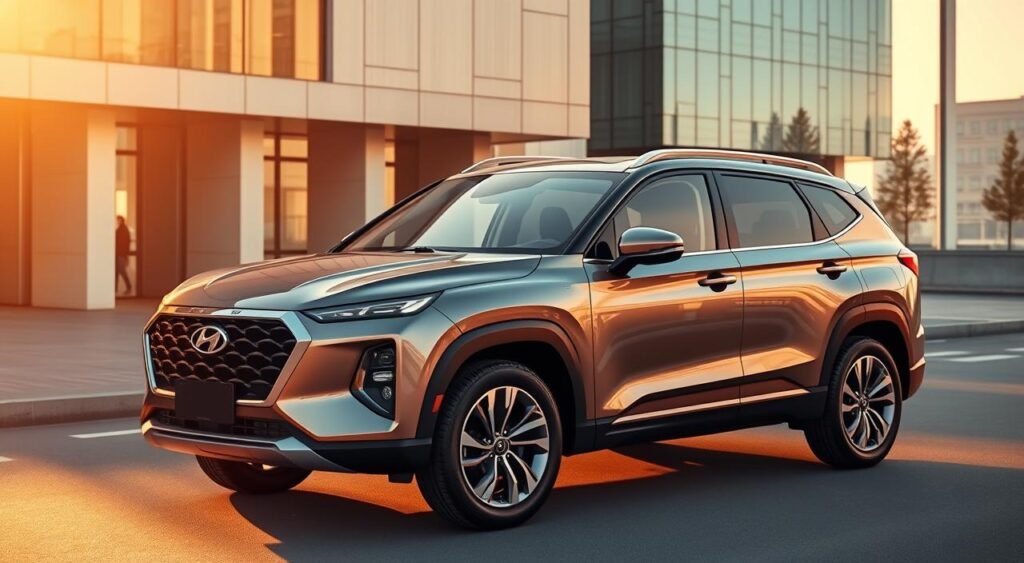
Unique Selling Propositions
The Alcazar is known for thoughtful ergonomics and high-quality materials. It comes in four trims: Executive, Prestige, Platinum, and Signature. The Knight Edition offers unique customization options.
This makes it one of the most versatile affordable 7-seater SUVs in 2025.
Interior and Exterior Highlights
The interior features soft-touch surfaces, ambient lighting, and a top-notch infotainment system. It has plenty of space for seven people. The exterior boasts dual-tone paint schemes and modern styling.
This appeals to families who want both elegance and practicality.
Performance on Indian Roads
The Alcazar performs well in cities and on highways. It gets fuel efficiency of 14.9 to 17.1 kmpl. Its suspension is designed to handle rough roads while keeping passengers comfortable.
Its efficient engines and refined transmissions make it great for daily drives and long trips.
Toyota Fortuner: Legacy and Reliability
The Toyota Fortuner is a top choice in the best budget 7-seater SUVs India market. It starts at ₹33.64 lakh, just above ₹30 lakh. The Leader Edition at ₹34.79 lakh offers great value for the price. It’s known for its long-lasting quality and reliability on Indian roads.
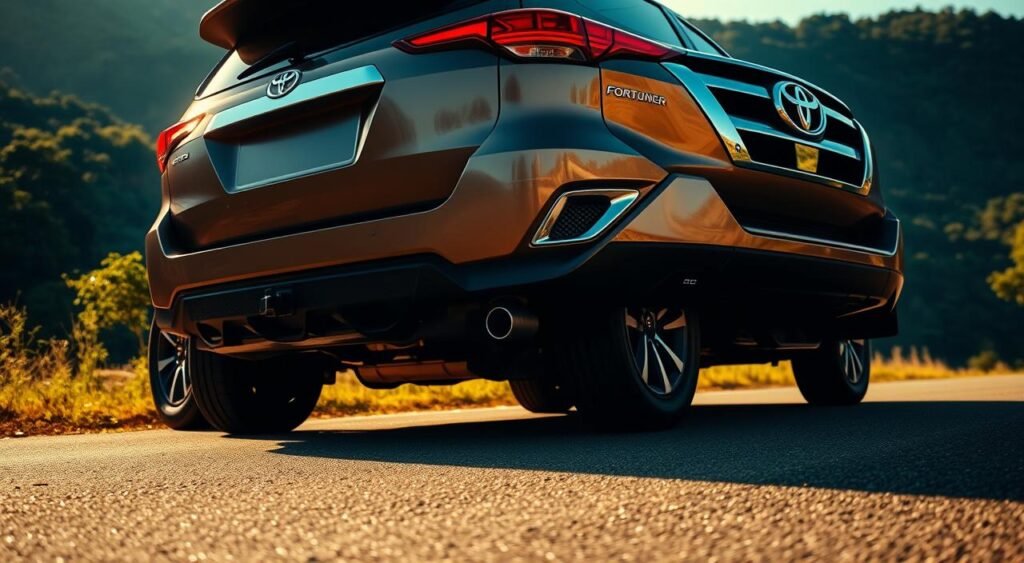
Brand Trust and History
Toyota has been a trusted name in India for many years. The Fortuner has been a leader in the premium SUV market. It’s known for its dependability and prestige.
Customers give it a perfect score for its looks, performance, and value. This loyalty makes many choose the Fortuner again and again.
Trim Options and Customization
There are many options to fit your needs and budget:
- 2.7L petrol and 2.8L diesel engine options
- 4X2 and 4X4 drivetrain configurations
- Manual transmission starting at ₹34.28 lakh for diesel 4X2
- Automatic transmission with mild-hybrid NeoDrive technology
- Premium GR-S variant at ₹48.85 lakh
- Exclusive Platinum White Pearl color option
Resale Value Analysis
The Fortuner holds its value well, better than most in the best budget 7-seater SUVs India category. Even after three years, it keeps up to 75% of its original price. This means you save money in the long run, making the initial cost worth it.
Tata Safari: Bold and Robust
The Tata Safari is a top pick among 7-seater SUVs under 30 lakh. It has a strong build and stylish design at a good price. Prices start at ₹14.66 lakh and go up to ₹25.96 lakh. It’s a diesel-only SUV with different trims to suit various tastes.
Design and Aesthetic Appeal
The Safari has a bold look that grabs attention on Indian roads. Its strong build and chrome details make it stand out. Special editions like the Dark and Stealth Editions offer unique looks with blacked-out features.
It’s a seven-seater, ensuring roomy interiors with high-quality materials. This makes it a great choice for families.
Engine Performance and Fuel Efficiency
The Safari uses a 1956cc diesel engine with manual and automatic options. It’s fuel-efficient, getting 14 to 17 kilometers per liter. This makes it a smart choice for daily drives and long trips.
Safety Features and Ratings
The Safari comes with a lot of safety features. It has airbags, electronic stability control, and hill hold assist. It also has rear parking sensors and connected car tech for remote monitoring.
The digital instrument cluster keeps drivers updated. These features make the Safari a safe choice for families.
| Variant | Price Range (₹) | Transmission | Key Features |
|---|---|---|---|
| Smart/Pure | 14.66-17.50 Lakh | Manual | Basic Safety, 7 Seats |
| Adventure | 18.90-20.50 Lakh | Manual/Auto | Connected Tech, Premium Audio |
| Accomplished | 21.84-25.96 Lakh | Manual/Auto | Full Safety Suite, Luxury Features |
Kia Carens: The New Player
The Kia Carens is the most affordable premium option in the Indian 7-seater SUV reviews 2025 segment. It costs between ₹10.99 and ₹12.77 lakh. This makes it a great value with modern tech and practical design.
The base Clavis variant starts at ₹11.08 lakh. The electric Clavis EV variant is priced at ₹17.99 lakh. This makes it a good choice for families looking for space.
Innovative Features and Technology
Kia has packed the Carens with advanced tech. The infotainment system has a responsive touchscreen and connected car features. Drivers can control functions through their smartphones.
Higher trim levels offer ventilated front seats. This is a rare feature in this price range. The Carens comes with 1.5L petrol and diesel engines and manual transmission. This gives drivers options for different driving needs.
Space Utilization and Comfort
The seven-seat layout makes the most of interior space. Each row has enough legroom and headroom for adults. There are also many storage solutions, like cup holders and door pockets.
The boot area is spacious when the third row is folded. This adds to the comfort and practicality of the Carens.
| Seating Row | Passenger Capacity | Key Comfort Features |
|---|---|---|
| First Row | 2 Adults | Ventilated seats, armrest storage |
| Second Row | 3 Adults | 60:40 split folding, USB charging |
| Third Row | 2 Adults/Children | 50:50 split, cup holders |
User Feedback and Market Response
Customers love the Carens for its fuel efficiency and tech. They say it feels premium but is affordable. This is a big plus compared to the Maruti Ertiga.
The strong dealer network in India means reliable service. Sales have been growing steadily. Families like the mix of comfort and value in the Indian 7-seater SUV reviews 2025.
Factors to Consider When Choosing
Choosing the right 7-seater SUV in India is more than just looking at the price. Buyers should think about the total cost, what their family needs, and how long the vehicle will last. This helps make a choice that meets their needs for many years.
Budgeting for Additional Costs
The price you see first is just the beginning. You’ll also need to budget for registration, insurance, and accessories. Manual cars can save you ₹1-2 lakh compared to automatics.
Fuel costs differ a lot. Diesel is better for long trips, while petrol is better for city driving. The Maruti Ertiga with CNG is the cheapest to run. Electric cars like the BYD e6 save on fuel but cost more upfront.
Assessing Family Needs
How people sit in the car is more important than how many can fit. The Mahindra XUV700 has special seats for six people. The Toyota Innova Crysta can seat eight. Think about how easy it is to get into the back seats.
Safety features vary a lot. The Tata Safari has six airbags, while the Hyundai Alcazar has seven. Newer cars also have advanced safety and tech features.
Long-term Ownership Considerations
The value of your car when you sell it matters. The Toyota Fortuner and Innova Crysta keep a lot of their value. Having a good service network is also important for easy maintenance.
Waiting times for some cars are long, up to 55 weeks for the Mahindra Scorpio N. Planning ahead helps avoid making a hasty choice.
Conclusion: Making the Right Choice
Choosing the best 7-seater SUVs under ₹30 lakh in India 2025 needs careful thought. Each car in this range has unique benefits for different needs and budgets. The market offers great choices in three segments, focusing on features, performance, and value for families.
Summary of Key Points
For those on a budget, the Kia Carens at ₹10.99 lakh, Renault Triber at ₹5.76 lakh, and Maruti Ertiga at ₹8.80 lakh are good options. They provide practical family transport without costing too much. The mid-range segment includes the Mahindra XUV700 at ₹13.66 lakh, with dual screens and ADAS tech.
The Tata Safari at ₹14.66 lakh and Hyundai Alcazar at ₹14.47 lakh also offer great value. For those seeking the best, the Toyota Innova Hycross at ₹18.86 lakh is top-notch for reliability and space.
Final Recommendations for Buyers
For tech lovers, the Mahindra XUV700 is a top choice with its advanced features and connected car tech. Families wanting lots of space and reliability will find Toyota Innova models perfect. Adventure seekers should look at the Mahindra Scorpio N at ₹13.20 lakh for off-road fun.
When choosing, consider total costs like insurance, maintenance, and fuel. Test drive cars at local dealerships to see how they feel and drive. Also, think about the service center’s location for easy maintenance and repairs.
FAQ
What are the most affordable 7-seater SUVs under ₹30 lakh in India for 2025?
The most affordable 7-seater SUVs include the Kia Carens at ₹10.99 lakh and the Mahindra Scorpio N at ₹13.20 lakh. The Mahindra XUV700 starts at ₹13.66 lakh, and the Hyundai Alcazar at ₹14.47 lakh. The Tata Safari is priced at ₹14.66 lakh. For even more budget options, consider the Renault Triber at ₹5.76 lakh and the Maruti Ertiga at ₹8.80 lakh, though these are MPVs.
Which 7-seater SUV offers the best features for the price in 2025?
The Mahindra XUV700 is the top value choice. It has Level 2 ADAS, dual-screen infotainment, and connected car tech. It also has 7 airbags and a 5-star safety rating. It offers premium features at a great price, making it perfect for families.
What is the waiting period for popular 7-seater SUVs in India?
Waiting times vary. The Mahindra XUV700 has the longest wait of 0-98 weeks. The Mahindra Scorpio N has a wait of 0-55 weeks. Toyota and Hyundai models have shorter waits. Plan your purchase with these delays in mind.
Which budget 7-seater SUV has the best fuel efficiency?
The Hyundai Alcazar is top for fuel efficiency, with 14.9-17.1 kmpl. The Mahindra XUV700 gets about 17 kmpl. The Tata Safari offers 14-17 kmpl. The Kia Carens is lighter and more compact, making it great for saving fuel.
Should I choose petrol or diesel for my 7-seater SUV?
It depends on your driving habits. Diesel engines, like in the Mahindra XUV700 and Tata Safari, are better for long drives. Petrol variants, like in the Hyundai Alcazar and Kia Carens, are quieter and cheaper upfront. Diesel is best for over 15,000 km a year.
What are the best safety features available in 7-seater SUVs under ₹30 lakh?
Look for 6-7 airbags, like in the Mahindra XUV700 and Tata Safari. Most have ABS, electronic stability control, and ISOFIX anchors. The XUV700’s 5-star safety rating is a standout.
Which 7-seater SUV maintains the best resale value?
The Toyota Fortuner and Innova Crysta keep their value well, retaining 70-80% after 3-5 years. The Fortuner starts at ₹33.64 lakh, but its Leader Edition at ₹34.79 lakh is known for reliability. Mahindra models also hold their value well.
What additional costs should I budget for when buying a 7-seater SUV?
Budget for insurance (₹40,000-80,000 a year), registration (12-15% of price), and extended warranty (₹15,000-30,000). Add ₹20,000-50,000 for accessories. Manual transmissions save ₹1-2 lakh. Annual maintenance costs are ₹15,000-25,000, and diesel models cost more to service.
Are there electric or hybrid options in the 7-seater segment under ₹30 lakh?
Yes, the Kia Carens Clavis EV is available at ₹17.99 lakh. The Toyota Innova Hycross at ₹18.86 lakh has mild-hybrid tech. These options are eco-friendly and fuel-efficient.
Which 7-seater SUV is best for city driving versus highway touring?
For city driving, the Kia Carens and Hyundai Alcazar are great. They are compact and efficient. For highway touring, the Mahindra XUV700, Toyota Innova Crysta, and Tata Safari offer comfort and power. The XUV700’s ADAS features enhance safety on highways.
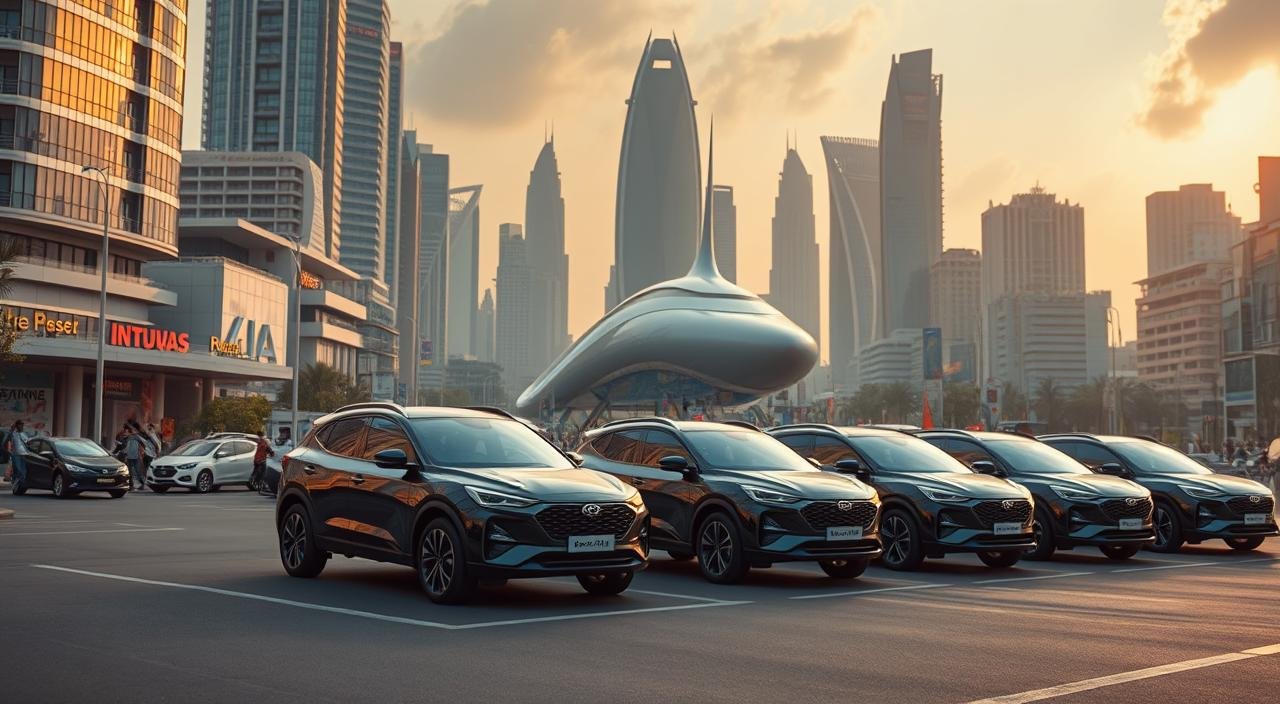
Oct
Last year, over 4.2 million vehicles were sold in India, making it the third-largest car market globally. October 2025 is set to bring a flurry of new car releases. This is thanks to the festive season and recent GST price changes.
The car industry has been booming, with 30 models hitting the market in just three months. Popular cars like Toyota Fortuner and Hyundai i20 have set high standards. This October, expect new cars in every price range, from affordable to luxury.
The timing of these new car releases is perfect for the festive season. Dealers are seeing more people coming in and booking cars for Diwali. The GST price changes have also made buying cars more appealing for everyone.
Key Takeaways
- October 2025 brings multiple car launches across budget, mid-range, and luxury segments
- Festive season demand drives manufacturer release schedules for maximum market impact
- GST-based price revisions create positive buying conditions for Indian consumers
- Electric and hybrid models feature prominently in upcoming releases
- Major brands including Tata Motors, Hyundai, and Maruti Suzuki lead launch calendars
- Technology upgrades focus on safety features and fuel efficiency improvements
Overview of October 2025 Car Launches
October 2025 is set to be an exciting time for the Latest Cars in India. Many manufacturers are getting ready to launch new models. These will range from affordable compact SUVs to high-performance vehicles.
Car lovers in India will see new designs, advanced tech, and good prices. This is true for both local and international brands.
Key Highlights of the Month
The Car Launch Updates for October show a wide range of vehicles. Mahindra is leading with two big updates – the Bolero/Bolero Neo and a new Thar variant. Nissan is also joining the compact SUV market on October 7.
Skoda is introducing the Octavia RS, limited to 100 units for India on October 17. Citroen is adding new features to the Aircross X. Mini is launching the Countryman JCW All4 on October 14.

| Model | Launch Date | Price Range (Rs.) | Segment |
|---|---|---|---|
| Nissan Compact SUV | October 7 | 8-12 Lakh (Expected) | Compact SUV |
| Mini Countryman JCW All4 | October 14 | 64.90 Lakh | Luxury SUV |
| Skoda Octavia RS | October 17 | 49.99 Lakh | Performance Sedan |
Market Trends and Insights
The Indian Car Market Trends show a big interest in SUVs and electric vehicles. The MG Windsor EV and Kia Carens Clavis EV are recent hits. They cost between Rs. 12.65-24.49 Lakh.
The luxury segment is also buzzing. The Mercedes-Benz G-Class, priced at Rs. 2.55-4.30 Crore, is a top choice. Manufacturers focus on feature-rich variants to attract buyers. They aim to offer great value while keeping prices competitive.
Prominent Brands Launching New Models
The auto industry is buzzing with excitement. Major manufacturers are getting ready to launch their latest vehicles in India. Three big brands are leading the way with new designs and advanced technology.
Tata Motors Innovations
Tata Motors is pushing hard into electric cars with the Tata Avinya, an electric SUV. They plan to add more electric cars to their lineup. Their partnership with JLR helps them innovate faster and save money.
The Nexon EV is a big hit, going 312 km on one charge. It can get to 80% battery in just 60 minutes. Tata Motors sold 64,217 electric cars in FY23, showing they’re a big player in the market.
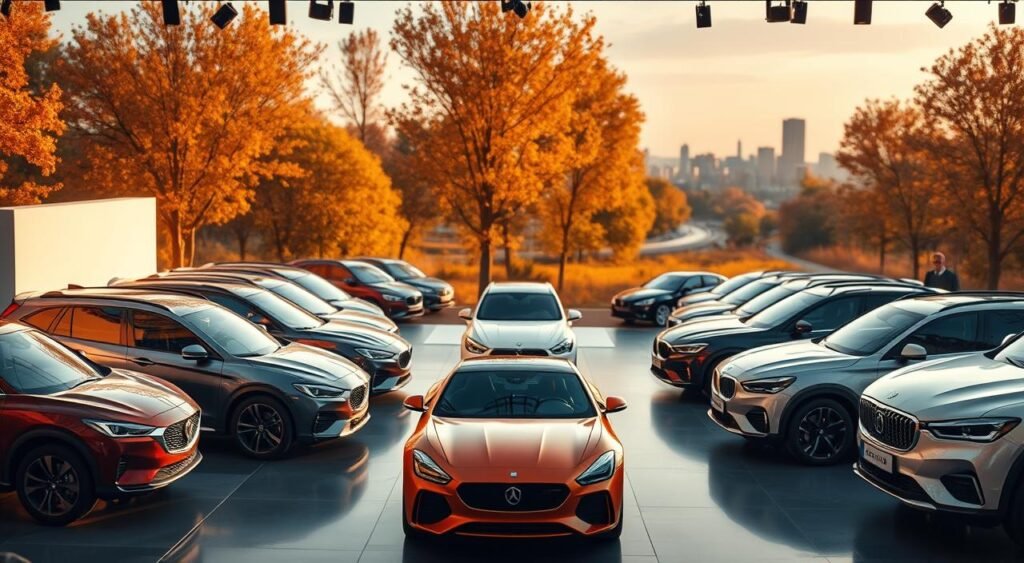
Hyundai’s Fresh Offerings
Hyundai is launching five new models to meet different needs. The Venue and Venue N Line are for those who love sporty looks. The Ioniq 6 is Hyundai’s luxury electric sedan, and the Nexo is a hydrogen fuel cell car. They also have an electric micro SUV for those on a budget.
Maruti Suzuki Updates
Maruti Suzuki is speeding up its electric car plans with three new models. The eVX and e-Vitara are for electric SUV fans. The Wagon R Electric is for those who want a car under Rs. 10 lakh. These cars will be available from entry-level to Rs. 30 lakh.
Electric Vehicles Set to Debut
October 2025 is a big moment for electric cars in India. Car makers are showing off their latest electric models. These cars range from small city cars to big SUVs, all using new battery tech and green engineering.
These new cars show the industry’s push to cut down on emissions. At the same time, they keep the performance that drivers want.
Tata Nexon EV Facelift
Tata Motors is leading the electric car charge with the Nexon EV facelift. It has a new look and goes further on a single charge. The Sierra EV is a tough electric SUV for those who love adventure.
The Avinya concept car is now a real car, with a cool design and smart tech. Tata wants to make electric cars for everyone, no matter what you need.
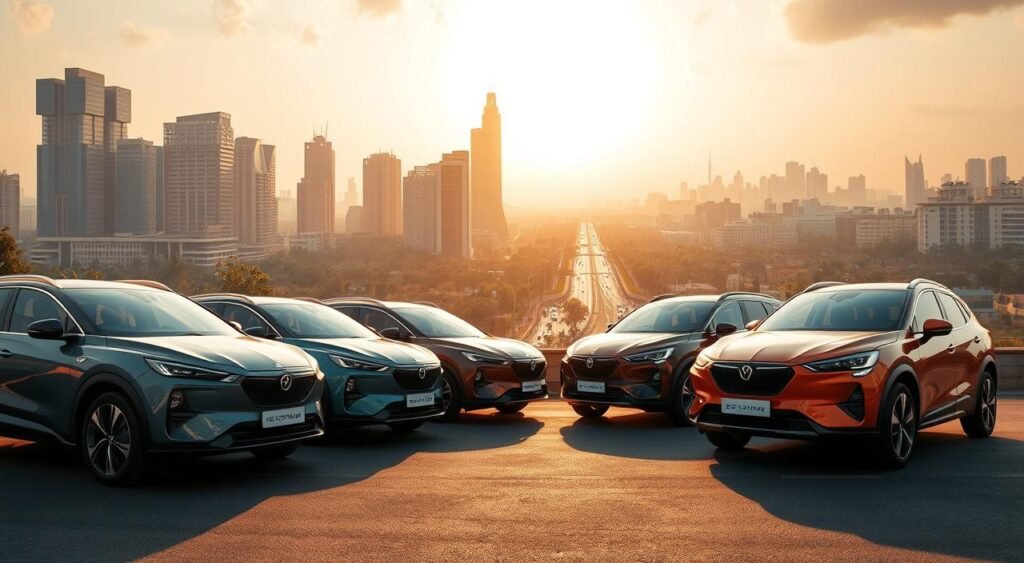
Upcoming Mahindra Electric Models
Mahindra is adding seven new electric cars to their lineup. The eKUV100 is perfect for city driving and is easy on the wallet. The XUV.e8 and BE.05 are luxury electric SUVs.
The Thar e is for those who love off-roading but want an electric car. The XUV 3XO EV and BE.07 meet different needs. Mahindra’s Vision series shows what’s coming next in their designs.
Honda’s Hybrid Approach
Toyota and MG are also entering the electric car market with their own plans. Toyota’s bZ4X is their first electric car made just for India. The C-HR+ Electric is a small car with big features.
MG is adding the Marvel X electric SUV and the 4 EV sedan to their family. The ZS HEV is a hybrid SUV that’s good for the wallet and the planet.
| Brand | Model | Type | Expected Range (km) |
|---|---|---|---|
| Tata | Nexon EV Facelift | Compact SUV | 450 |
| Mahindra | XUV.e8 | Premium SUV | 500 |
| Toyota | bZ4X | Electric SUV | 400 |
| MG | Marvel X | Electric SUV | 425 |
SUVs to Watch Out For
The SUV segment is leading the latest cars in India with exciting updates. This October, new models and refreshes will hit the market. From rugged off-roaders to sleek urban cruisers, manufacturers are stepping up their game.
These updates bring better technology, comfort, and performance. They cater to a wide range of buyer needs.
New Variants of Existing Models
Popular SUVs are getting major upgrades this month. The Mahindra Bolero Neo now has a new grille, updated air dam, and stylish alloy wheels. Inside, it boasts a black and brown interior, fabric upholstery, and a modern 10.25-inch touchscreen.
The iconic Mahindra Thar also gets a facelift. It now has a revised grille, dual-tone bumpers, and practical features like a front armrest and reverse parking camera.
Completely New SUV Entrants
Nissan is launching a new C-SUV, seen as the Terrano’s spiritual successor. It will compete with the Maruti Grand Vitara, Kia Seltos, and others. Luxury brands like Audi and Jeep are also entering the fray.
Performance Specifications
| Model | Engine Options | Power Output | Transmission |
|---|---|---|---|
| Mahindra Bolero Neo | 1.5L Diesel | 100 bhp | 5-speed Manual |
| Mahindra Thar | 2.0L Petrol/2.2L Diesel | 150-130 bhp | 6-speed MT/AT |
| Nissan C-SUV | 1.5L Petrol Hybrid | 144 bhp | CVT |
| Audi Q3 | 2.0L TFSI | 190 bhp | 7-speed DSG |
Hatchbacks Making a Comeback
The hatchback segment is seeing a comeback in India. Many car makers are introducing electric versions of popular models. These small cars are becoming practical choices for city living, blending affordability with new tech.
This change shows how people want cars that save fuel and are good for the environment. In crowded cities, these cars are a smart choice.
Updated Models from Popular Brands
The Hyundai i20 keeps getting better with new features and style. Maruti Suzuki is making the Wagon R electric, aiming for buyers on a budget. The MG 4 EV is a big step towards making electric cars common in hatchbacks.
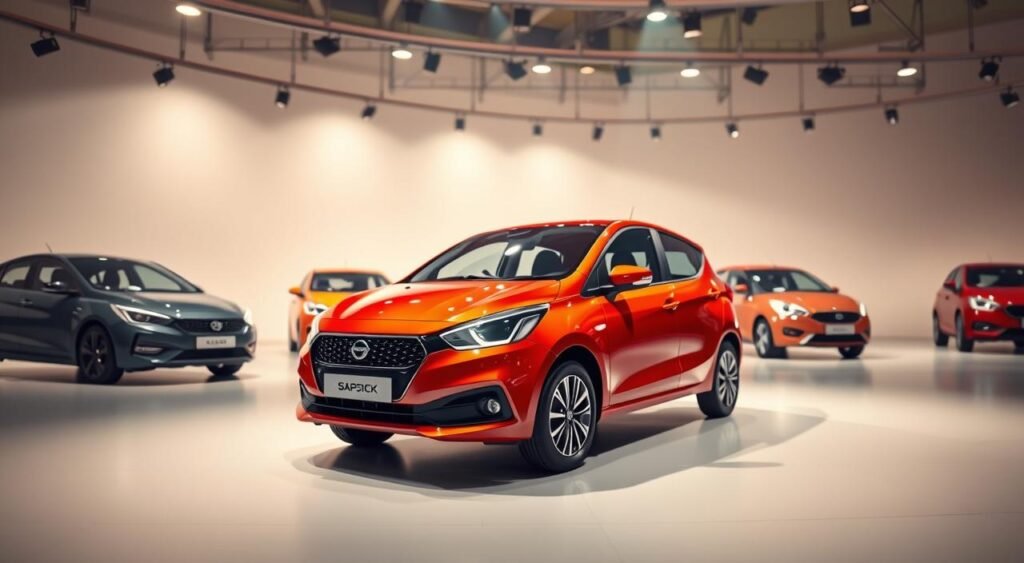
Compact Cars for Urban Driving
The BYD Seagull is a budget-friendly electric car for city folks. The Renault Kwid EV is also designed for city streets. These cars are small but have enough room for daily trips.
Features and Tech Enhancements
Today’s hatchbacks have features once found only in luxury cars:
- Touchscreen infotainment systems with smartphone connectivity
- Advanced driver assistance systems for safer city driving
- Regenerative braking in electric variants
- Enhanced battery management systems
- Improved range capabilities exceeding 250 kilometers
These new cars show car makers’ dedication to making green transport available to more people. They keep the practicality that made hatchbacks popular in the first place.
Luxury Segment Updates
The luxury car market in India is set for big changes in October 2025. German car makers are leading with electric and high-performance cars for rich buyers. The Auto Industry News shows new cars at all price levels, from affordable luxury to top-of-the-line.
Audi’s Latest Releases
Audi is adding the Q6 E-Tron to its lineup, a big step in electric cars. The Q5 and Q3 get new features and looks. The Q6 E-Tron has top-notch battery tech and fast charging, making it a strong competitor in electric SUVs.
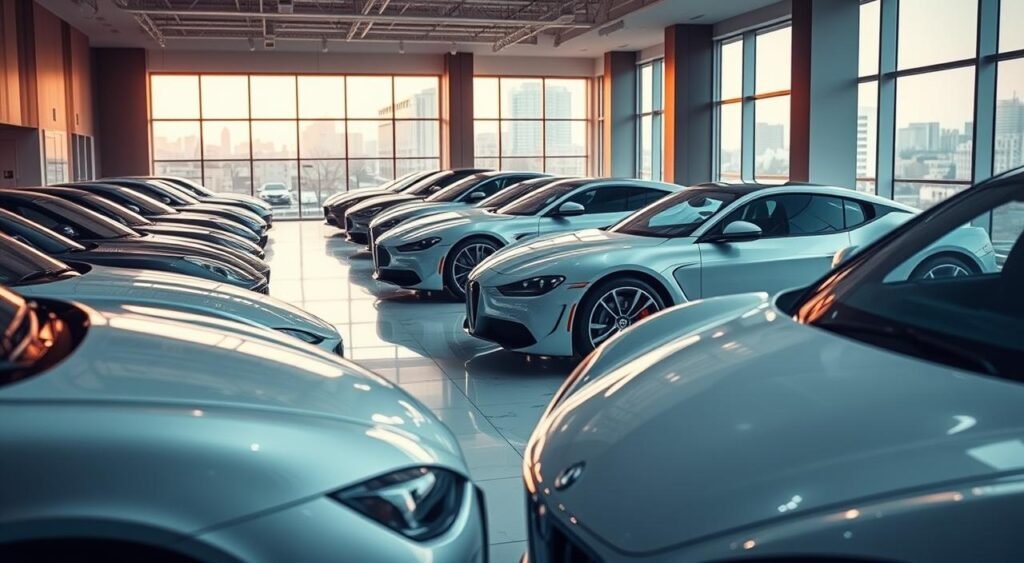
BMW and Mercedes-Benz Competitors
BMW is launching the M3 and iX3 electric SUV in October 2025. The M3 is all about speed, while the iX3 is for those who care about the planet. Mercedes-Benz is bringing the G-Class, priced between Rs. 2.55-4.30 Crore, and the CLA EV and GLC EV. Mini is also joining with the Countryman JCW All4, powered by a 2.0-liter turbo engine with 300 horsepower.
Price Ranges and Specifications
| Model | Price Range (Rs.) | Power Output | Key Feature |
|---|---|---|---|
| Mercedes G-Class | 2.55-4.30 Crore | 381-585 hp | Off-road capability |
| Mini Countryman JCW | Est. 65-70 Lakh | 300 hp | 0-100 in 5.4 seconds |
| Audi Q6 E-Tron | Est. 85-95 Lakh | 382 hp | 600 km range |
Pre-bookings for these cars start at 11 nationwide dealerships. This shows a lot of interest in high-end vehicles.
Assessing Technology in Upcoming Cars
The new cars coming out in October 2025 are packed with the latest tech. They offer better connectivity, safety, and care for the environment. These cars show how makers are listening to what people want: smarter, safer, and greener rides.
Infotainment Systems Overview
Today’s infotainment systems turn car dashboards into digital hubs. The Mahindra Bolero Neo has a big 10.25-inch screen, matching high-end cars. The Citroen Aircross X goes further with its Cara AI voice assistant, letting you control it with your voice.
These systems support wireless Android Auto and Apple CarPlay, making cables a thing of the past. They work in many languages, meeting India’s needs. Plus, they can update themselves online, so you don’t need to visit a dealer.
Safety Features to Expect
Safety tech is now a must-have in new cars in India. Even the cheapest cars come with reverse parking cameras. The Citroen Aircross X has a 360-degree camera and all-LED lights for better visibility.
Most cars now come with six airbags as standard. They also have electronic stability, hill-hold assist, and automatic emergency braking. The Aircross X even has ventilated front seats to keep drivers comfy on long trips.
Sustainability and Fuel Efficiency
Electric cars are at the heart of the green movement in new cars. The Tesla Model 3, Model S, and Model X are leaders in zero-emission driving. They’re joined by the BYD Atto 2 EV and Fisker Ocean. These cars cut down on emissions, offer quick power, and save on upkeep.
Performance-oriented Cars Arriving
The latest cars in India are set to ignite automotive passion with high-performance models scheduled for release. Speed enthusiasts and driving purists will find compelling options among the October car launches. These vehicles feature advanced engineering and impressive power figures.
They represent a shift toward more dynamic driving experiences in the Indian market.
Sports Cars Fans Can Anticipate
The Skoda Octavia RS stands out as a prime performance model. It has a 2.0-liter turbocharged petrol engine that produces 261 horsepower and 370 Newton-meters of torque. It comes with a seven-speed DSG automatic transmission, sending all that energy to the front wheels.
This exclusive model is limited to just 100 units for India. It made waves at the Auto Expo.
The Mini Countryman JCW All4 takes performance to new heights with 300 horsepower. It has an all-wheel-drive system. The Jaguar 00 EV shows the future of speed without emissions.
Lexus Sport and Genesis models, including the GV 60 and GV 80, round out the luxury performance segment.
Upgrades in Engine Technology
Modern turbocharging systems deliver exceptional power from smaller displacement engines. The October car launches showcase dual-clutch transmissions that provide lightning-fast gear changes. Electric powertrains join traditional combustion engines, giving instant torque delivery and smooth acceleration.
Customization Options
Performance packages allow buyers to enhance their driving experience. They include sport-tuned suspensions and upgraded brake systems. Interior personalization includes racing-inspired seats and carbon fiber trim pieces.
Exterior modifications range from aerodynamic body kits to exclusive wheel designs. These complement the latest cars in India.
Pricing Trends for October Launches
October 2025 is packed with new car launches and competitive prices. The Indian car market is focusing on various buyer groups with smart pricing. From affordable electric cars to high-end SUVs, companies aim to grab a big share of the market during the festive season.
Budget-friendly Options
This October, the sub-10 lakh rupee segment gets exciting. The Maruti Suzuki Wagon R Electric is a budget-friendly electric car. The BYD Seagull is another affordable option for first-time buyers. These cars show a shift towards more affordable electric vehicles in India.
Premium Models and Their Positioning
The mid-range and premium segments have a lot to offer this month. The 10-20 lakh range includes the Tata Sierra, Skoda Kamiq, Renault Arkana, and Mahindra XUV 3XO EV. For those looking for something more, the 20-30 lakh range has the Audi Q5, Jeep Compass, Volkswagen T-Roc, and Maruti Suzuki eVX. The Mercedes-Benz G-Class tops the list at 4.30 crore rupees.
| Price Segment | Models | Starting Price (Lakhs) |
|---|---|---|
| Budget | Maruti Wagon R Electric | 8.5 |
| Mid-Range | MG Windsor EV | 12.65 |
| Premium | Audi Q5 | 65.0 |
Financing and Promotional Deals
October is a great time to buy a car with all the festive season promotions. The MG Windsor EV, for example, has special financing schemes starting at 12.65 lakhs. Banks offer low-interest loans, and manufacturers throw in exchange bonuses and extended warranties to make deals even better.
Expert Opinions and Reviews
The auto industry news is full of optimism for October’s car launches in India. Experts say the festive season is a great time for new cars. With GST-based price changes, buyers and sellers are both happy, setting the stage for big model debuts.
What Industry Analysts Are Saying
Skoda is celebrating 25 years in India with the Octavia RS launch. This shows Indians want more performance in their cars. Nissan is also making a new C-SUV, a smart move for the compact SUV market.
Dealers are getting new Mahindra models, ready to shake up the market. The Mini Countryman JCW is getting a lot of pre-bookings, showing strong demand for premium cars.
Consumer Expectations Versus Reality
People want cars with advanced features at good prices, focusing on electric and hybrid options. The news says car makers are making tech-rich models that are affordable. Buyers are excited about fuel efficiency, connected car tech, and safety.
The gap between what people want and what they get is getting smaller. Brands are listening to customers and making changes. October’s launches aim to fix past issues.
Conclusion: What to Look Forward To
The car world in India is set for big changes as October 2025 comes. Many car makers are getting ready to show off new cars that are both high-tech and easy to use. Electric cars will be a big deal, with Tata, Mahindra, and Maruti Suzuki leading the way.
International brands like Tesla, Fisker, MG, and BYD are also joining the electric car scene. They will offer a wide range of choices for Indian buyers.
Anticipated Impact on the Market
October 2025 will change how people see cars in India. The SUV market will keep growing with new models at all price points. Budget-friendly options and luxury cars from well-known brands will be available.
Electric cars will become more popular as more charging spots are built across the country. Car lovers will be excited to see the Skoda Octavia RS and Mini Countryman JCW in stores.
Final Thoughts on Upcoming Launches
The new cars coming to India show the industry’s focus on new ideas and being green. Many cars will have artificial intelligence helpers, making driving safer and easier. There will also be more safety features to protect people and lower the risk of accidents.
October 2025 starts a new era where technology and affordability come together. With so many new cars, everyone will find something that fits their needs and budget.
FAQ
Which cars are confirmed for launch in October 2025?
In October 2025, several cars will hit the market. The Mahindra Bolero/Bolero Neo will get a refresh. Also, the Mahindra Thar will have a new three-door variant.
Nissan will launch a new compact SUV on October 7. Skoda will introduce the Octavia RS on October 17, with only 100 units available. The Citroen Aircross X and Mini Countryman JCW All4 will also debut in October.
These cars range from budget-friendly to luxury models.
What are the latest electric vehicles coming to India?
India is set to welcome many electric vehicles. The Tata Sierra EV and Tata Avinya are among the first. Maruti Suzuki will launch the eVX, e-Vitara, and Wagon R Electric.
Mahindra will introduce the eKUV100, XUV.e8, BE.05, BE.07, XEV 7e, and Thar e. Toyota’s bZ4X and MG’s Marvel X and 4 EV will also arrive. BYD’s Seagull is another electric model coming to India.
These vehicles will be priced from under Rs. 10 lakh to Rs. 30 lakh.
What is the price range for new car releases in October 2025?
October 2025 will see a wide range of prices. Budget-friendly models like the Maruti Suzuki Wagon R Electric and BYD Seagull will start under Rs. 10 lakh.
Mid-range vehicles, such as the New Tata Sierra and Mahindra XUV 3XO EV, will cost between Rs. 10-20 lakh. Premium models, including the Audi Q5 and Maruti Suzuki eVX, will range from Rs. 20-30 lakh.
Luxury vehicles, like the Mercedes-Benz G-Class, will reach up to Rs. 4.30 Cr.
What are the key features of the updated Mahindra Bolero Neo?
The updated Mahindra Bolero Neo boasts a new grille and updated air dam. It also features alloy wheels and a black and brown interior theme.
The interior includes fabric upholstery, fog lights, and a 10.25-inch touchscreen infotainment system. These updates enhance both looks and functionality while keeping the rugged character intact.
Which performance cars are launching in India?
Performance car fans will be excited about the Skoda Octavia RS. It has a 2.0-litre turbo petrol engine that produces 261bhp and 370Nm. It comes with a seven-speed DSG automatic transmission.
The Mini Countryman JCW All4 is another highlight. It delivers 300bhp and 400Nm from its 2.0-litre four-cylinder turbo petrol engine. It can go from 0-100kmph in 5.4 seconds and has all-wheel-drive capability.
What are the latest cars in India from luxury brands?
Luxury car enthusiasts will be pleased with the latest offerings. Audi will introduce the Q6 E-Tron and updated Q5 and Q3 models. BMW will launch the New M3 and BMW iX3 electric SUV.
Mercedes-Benz will bring the G-Class, CLA EV, and GLC EV. The Mini Countryman will also be available, priced at Rs. 64.90 Lakh. These cars showcase advanced technology and premium features.
What SUVs will compete with the new Nissan compact SUV?
Nissan’s new C-SUV will compete with several established models. These include the Maruti Grand Vitara, Kia Seltos, Hyundai Creta, MG Astor, Volkswagen Taigun, Honda Elevate, and Skoda Kushaq.
This segment is highly competitive, making the Nissan C-SUV a notable player.
How are auto industry news and Indian car market trends shaping October launches?
The Indian auto market is booming, with 30 cars launched in the last three months. October 2025 will benefit from the ongoing festive season demand and GST-based price revisions.
The market sentiment is positive. Electric vehicles are gaining traction, with many EV models being introduced across all price segments.
What advanced technology features are included in upcoming vehicles?
Upcoming vehicles will feature cutting-edge technology. The Citroen Aircross X will have Cara AI voice assistant. They will also include 360-degree cameras, all-LED lighting, and ventilated front seats.
Reverse parking cameras will be standard, along with enhanced infotainment systems and 10.25-inch touchscreens. Safety features will include multiple airbags and advanced driver assistance systems.
Which upcoming vehicles in India offer the best value under Rs. 20 lakh?
Several vehicles offer great value under Rs. 20 lakh. The MG Windsor EV and Kia Carens Clavis EV are notable options. The Maruti Suzuki Wagon R Electric, BYD Seagull, Renault Kwid EV, and New Tata Sierra also provide excellent value.
These models balance affordability with modern features and electric powertrains.
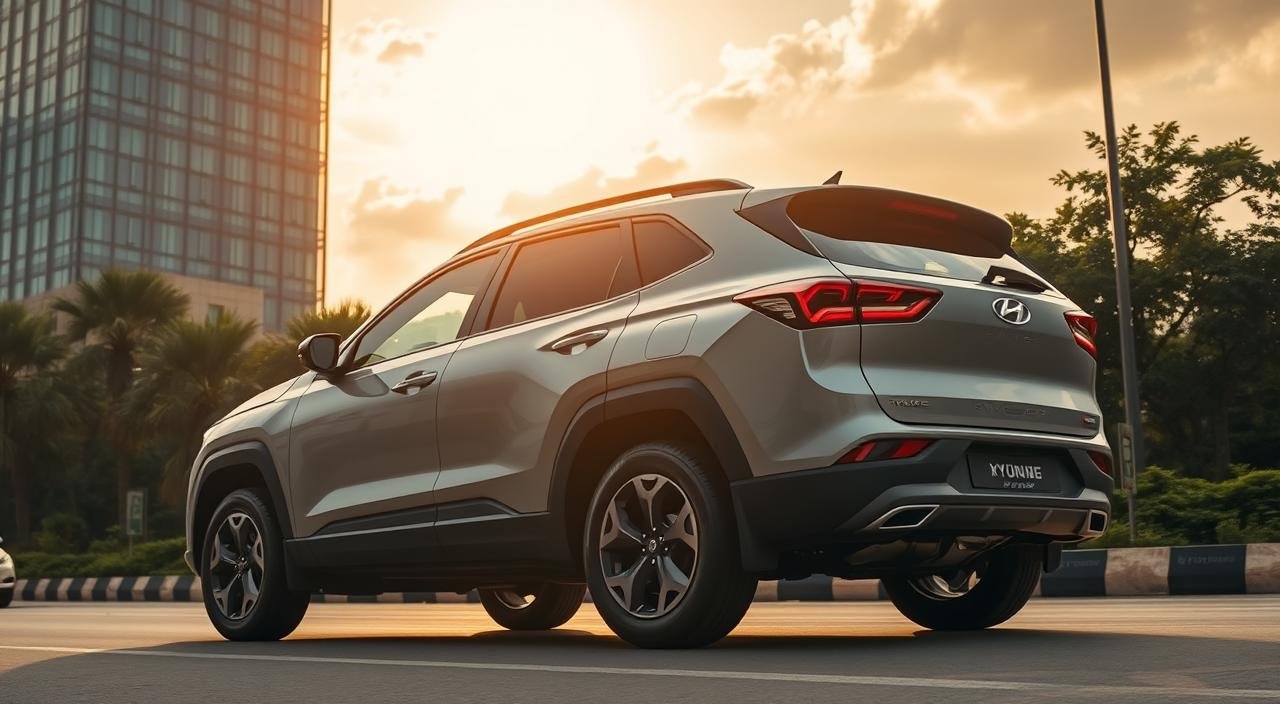
Oct
Last month, over 200,000 compact SUVs were sold in India. This shows how fast this market is growing. The 2025 Hyundai Venue is a big step for Hyundai to get a bigger piece of this market.
The new Venue has shed its camouflage for India. It takes design cues from the Exter, Creta, and Alcazar. Hyundai is introducing eight different versions, from HX 2 to HX 10.
Now, you can book the Venue for Rs 25,000 at Hyundai dealerships or online. It will come with both petrol and diesel engines on November 4, 2025. Prices are expected to start around Rs 8 lakh ex-showroom.
The 2025 Hyundai Venue marks a big change in Hyundai’s SUV plans. It shows off new looks and better comfort inside. Hyundai hopes it will beat out the Maruti Suzuki Brezza and Tata Nexon.
Key Takeaways
- Second-generation Venue officially unveiled for Indian market with design cues from Exter, Creta, and Alcazar
- Eight variant lines available: HX 2 through HX 10 with both petrol and diesel engine options
- Bookings open at Rs 25,000 through dealerships and online platforms
- Official launch scheduled for November 4, 2025
- Expected starting price around Rs 8 lakh ex-showroom
- Hyundai Venue updates 2025 India target the growing compact SUV segment
Overview of the 2025 Hyundai Venue
The compact SUV market in India is getting a boost with the 2025 Hyundai Venue. This updated model offers new design and tech features. It aims to be a top choice in the sub-compact SUV market.
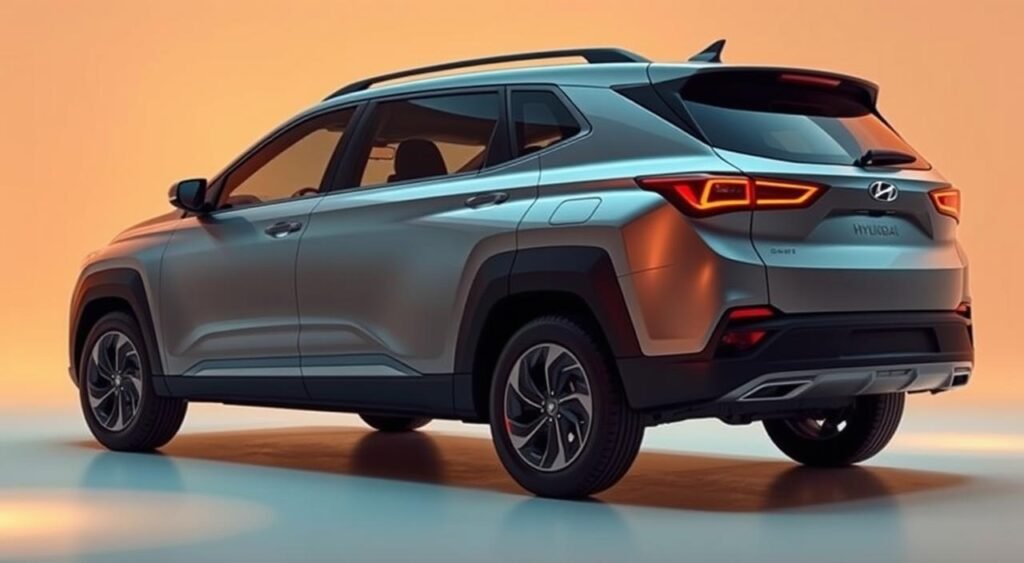
Design Philosophy Update
The 2025 Venue has a new look that fits with Hyundai’s SUV lineup. Its front has a split-headlight design with LED lights. This makes it stand out on the road.
The design is both bold and elegant. It’s perfect for city drivers who want style and quality.
Key Features Overview
The new Venue is packed with tech. It has two big screens for info and entertainment. The seats are ventilated for comfort, even in hot weather.
The Bose sound system adds to the luxury. It makes music sound like a concert in your car.
| Feature Category | Specifications |
|---|---|
| Display System | Dual 12.3-inch screens |
| Audio Setup | 8-speaker Bose system |
| Seating Comfort | Ventilated front seats (3 levels) |
| Driver Convenience | 4-way power adjustment |
| Safety Features | 6 airbags, Level-2 ADAS |
| Sunroof Type | Single-pane electric |
It also has white ambient lighting, automatic climate control, and wireless charging. Safety is a big deal with six airbags, a 360-degree camera, and more.
Exterior Changes Worth Noting
The 2025 Hyundai Venue has a fresh look with new exterior updates. Spy shots and Hyundai Venue news updates show big changes in colors and lights. These updates make the compact SUV look modern but keep its urban vibe.
New Color Options
There are six monotone shades to pick from in the updated lineup. The Hyundai Venue India launch 2025 adds two new colors: Hazel Blue and Mystic Sapphire. These join favorites like Dragon Red, Abyss Black, Atlas White, and Titan Grey.
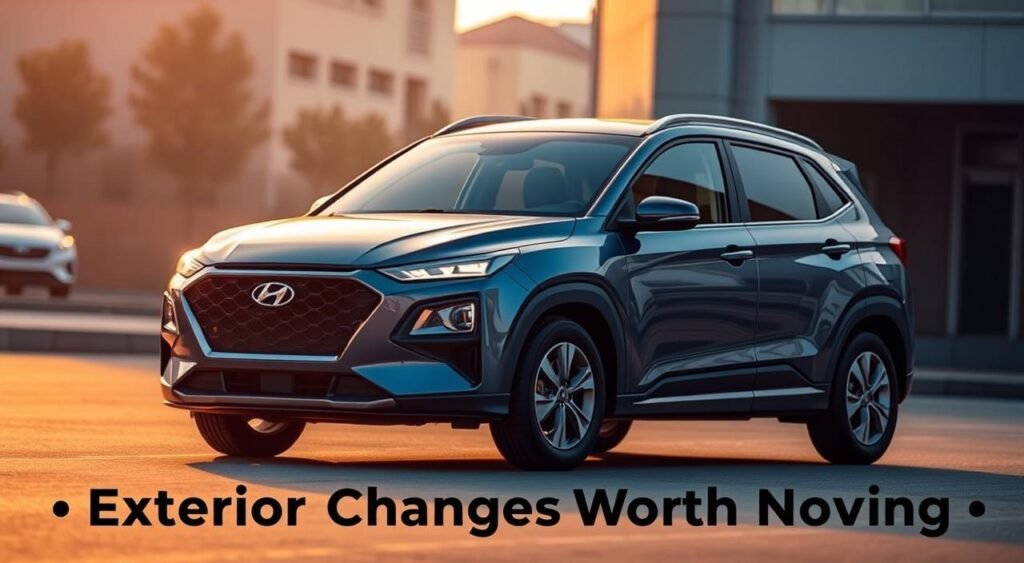
Dual-tone fans have two options: an Abyss Black roof with Hazel Blue or Atlas White body. These options start from the HX 6 variant and up. The HX 2 and HX 4 trims have fewer colors to keep prices down.
Upgraded Lighting Elements
The lighting system gets a big update for the Hyundai Venue India launch 2025. LED daytime running lights now have a unique C-shaped pattern. They frame the rectangular grille with subtle chrome accents.
Quad-LED projector headlights are below the DRLs for better night vision. The rear has wraparound LED tail lights with three-piece internal lighting. The front camera is in the grille for the 360-degree view system. Side mirrors now have cameras underneath, a first for the Venue.
Interior Enhancements
The Hyundai Venue 2025’s interior has seen a major upgrade. It now features a dual-tone color scheme of Dark Navy Blue and Dove Grey. The premium leatherette seats make the cabin feel luxurious, setting a new benchmark for compact SUVs.
Redesigned Cabin Space
The dashboard now has a layered minimalistic approach that looks more upscale. It has vertical side AC vents and sleek central vents, all with light bronze accents. The Venue branding is beautifully placed on the co-driver side, adding a personal touch.
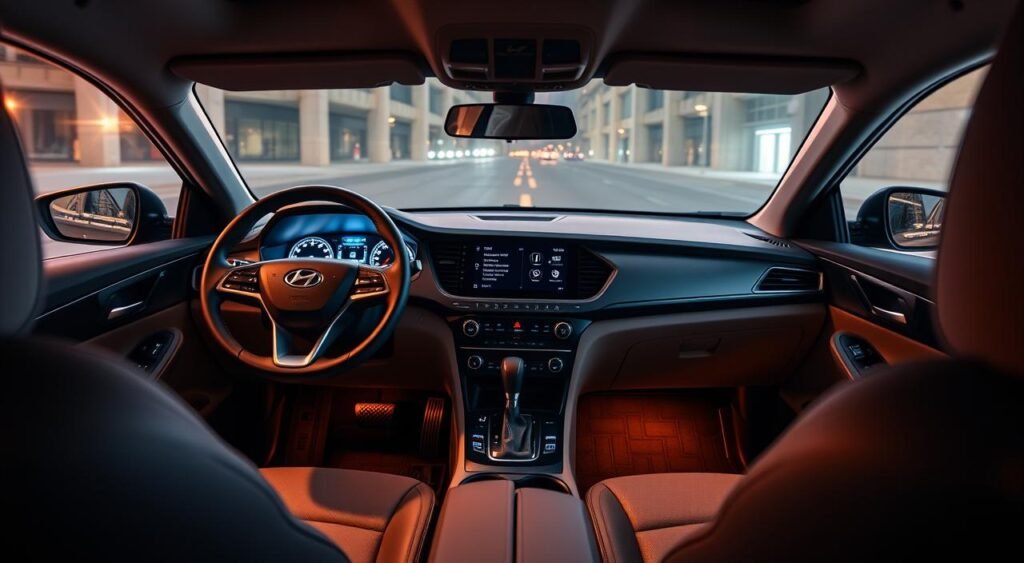
The center console is both practical and organized. It has two cup holders and a gear shifter, along with buttons for seat ventilation and electronic parking brake. A rotary dial makes it easy to switch drive and traction modes while driving.
Advanced Infotainment System
Technology is at the forefront with curved 12.3-inch dual displays above the air vents. One screen is for infotainment, and the other is for digital instrumentation. This setup rivals premium vehicles in higher price ranges.
The steering wheel has a new three-spoke design. Instead of the usual Hyundai logo, it has Morse code styling with four dots for ‘H’. This unique feature shows Hyundai’s attention to detail, something buyers will love during the India debut of the 2025 Hyundai Venue.
Performance Improvements
The 2025 Hyundai Venue offers exciting engine choices for Indian buyers. It has three engine options for different needs and budgets. Each engine balances power and fuel efficiency, making the SUV versatile.
Engine Options Available
The base engine is a 1.2-liter naturally aspirated petrol engine with 83 PS and 114 Nm torque. It comes with a 5-speed manual transmission for those on a budget. The mid-tier engine is a 1.0-liter turbo-petrol engine with 120 PS and 172 Nm torque. It can be paired with a 6-speed manual or 7-speed dual-clutch automatic.
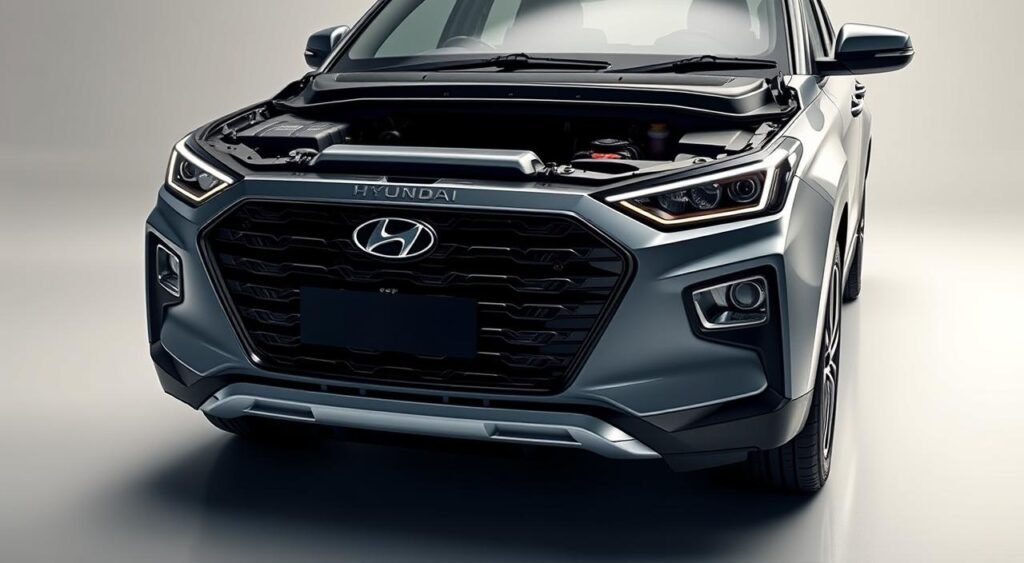
The diesel lineup includes a 1.5-liter engine with 116 PS and 250 Nm torque. It offers flexibility with 6-speed manual and 6-speed torque converter automatic options. The diesel-automatic combo is a key update, inspired by the Kia Sonet.
Fuel Efficiency Ratings
Fuel economy varies by engine. The naturally aspirated petrol gets about 17-18 km/l in mixed driving. The turbo-petrol gets 18-20 km/l with manual transmission. Diesel engines lead with 23-24 km/l for manual versions.
Automatic transmissions lower these figures by 1-2 km/l for all engines.
Safety Features Upgraded
The 2025 Hyundai Venue in India has major safety upgrades. It leads the compact SUV market with these changes. It has Level-2 ADAS technology with a radar sensor and a camera.
These systems offer top-notch protection for everyone inside and outside the car.
New Driver Assistance Technologies
The Hyundai Venue 2025 comes with many driver help features. It has a 360-degree camera system for better visibility when parking. This system includes cameras in the front and side mirrors.
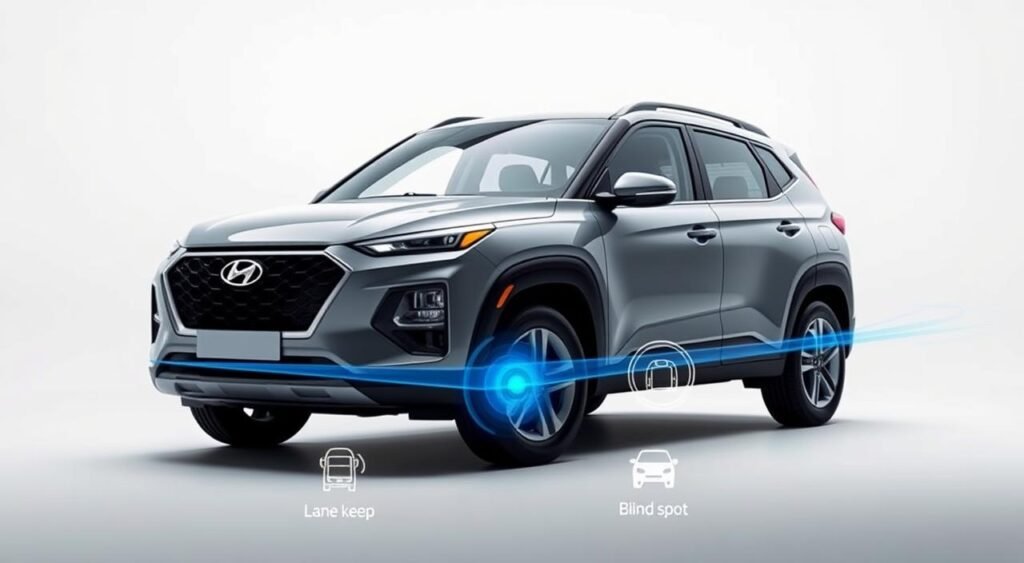
- Electronic Stability Control for improved handling
- Front and rear parking sensors
- Electronic parking brake with auto hold function
- Tire pressure monitoring system
- ISOFIX child seat anchorages
Crash Test Ratings Expectations
Experts think the 2025 Hyundai Venue will do well in crash tests. It has six airbags in every version. This shows Hyundai’s dedication to keeping people safe.
| Safety Feature | Standard Trim | Premium Trim |
|---|---|---|
| Front Airbags | 2 | 2 |
| Side Airbags | 2 | 2 |
| Curtain Airbags | 2 | 2 |
| ADAS Level | Level-2 | Level-2 |
Technology Innovations
The 2025 Hyundai Venue introduces advanced technology to the compact SUV market. It brings smart integration and digital sophistication to the driving experience. The cabin features state-of-the-art systems, rivaling those in more expensive vehicles.
Connectivity Features
Modern drivers want easy connectivity, and the latest Hyundai Venue updates deliver. The vehicle now includes:
- Wireless phone charging pad for compatible devices
- Premium Bose audio system with eight speakers
- Multiple USB ports for device connectivity
- Bluetooth integration with voice commands
The Bose sound system offers clear audio, making every drive enjoyable. Wireless charging keeps smartphones charged without cables.
Dashboard Digitalization
The 12.3-inch curved dual-display setup is a highlight. It combines digital instruments with the infotainment system in one panel. The climate control panel has a light bronze finish, adding elegance to the interior.
Drivers can easily switch drive modes with a rotary dial. The digital dashboard shows all the car’s info clearly. Ambient white lighting makes nighttime drives cozy, making the cabin feel modern and spacious. These updates show Hyundai’s dedication to adding premium tech to affordable cars.
Competitors in the Compact SUV Segment
The compact SUV market in India is getting more crowded. The Hyundai Venue India launch 2025 is stepping into this busy field. It faces both established rivals and new players. Each one has something special to offer, making it easier for buyers to find what they want.
Comparison with Rival Models
The Hyundai Venue 2025 is set to compete with several models. The Kia Sonet, for example, has the same platform and diesel-automatic combo. The Maruti Brezza leads in sales thanks to its strong service network. The Tata Nexon is known for its safety features.
| Model | Starting Price (Ex-showroom) | Engine Options | Key Feature |
|---|---|---|---|
| Hyundai Venue | ₹8.0 lakh | Petrol, Diesel | Level 2 ADAS |
| Kia Sonet | ₹7.99 lakh | Petrol, Diesel | Ventilated Seats |
| Tata Nexon | ₹8.1 lakh | Petrol, Diesel, CNG | 5-Star Safety |
| Maruti Brezza | ₹8.34 lakh | Petrol, CNG | Wireless Charging |
| Mahindra XUV 3XO | ₹7.49 lakh | Petrol, Diesel | Panoramic Sunroof |
Market Positioning Analysis
The Hyundai Venue India launch 2025 aims at the premium compact SUV buyer. It offers a lot of features and engine choices. For those on a tighter budget, the Renault Kiger or Nissan Magnite might be more affordable.
The Skoda Kylaq is for those who love European design. The Kia Syros has a futuristic look. The Hyundai Venue 2025 is priced between ₹8 lakh and ₹14 lakh. This puts it in a good spot between value and premium options.
Consumer Reactions and Expectations
The 2025 Hyundai Venue has caught the eye of many in India. People are booking it at Rs 25,000, both online and in stores. It comes in many versions, from HX 2 to HX 10, fitting various budgets.
Early Impressions from Indian Market
Indian buyers have mixed thoughts on the Venue’s new look. The front looks like other Hyundai models, but the back gets more praise. It’s seen as modern and well-proportioned.
The Venue’s new features are exciting. It has a 360-degree camera system and Level-2 ADAS tech. It also offers a diesel-automatic transmission, a big ask from customers.
Anticipated Reception in the U.S.
U.S. buyers are waiting for details on features and prices. The compact SUV market in the U.S. is tough. Buyers want the latest tech and top safety ratings.
| Feature Category | Indian Market Priority | U.S. Market Priority |
|---|---|---|
| Safety Technology | Level-2 ADAS | Advanced Driver Assistance |
| Transmission Options | Diesel-Automatic | Gasoline-CVT |
| Camera Systems | 360-degree View | Blind Spot Monitoring |
| Price Sensitivity | High | Moderate |
Pricing and Availability
The new Hyundai Venue 2025 India launch is set to excite buyers with various price options. It will arrive in Indian showrooms on November 4, 2025. The prices are designed to attract both first-time buyers and those looking to upgrade from Hyundai.
Expected Price Range
The Hyundai Venue 2025 will have eight variants, each with the ‘HX’ prefix. Prices start at around Rs 8 lakh for the base HX 2 and go up to Rs 14 lakh for the top HX 10 (all prices ex-showroom). There are seven options for petrol buyers and four for diesel fans.
The base HX 2 and HX 4 come in limited color selections, like Abyss Black and Atlas White. The HX 6 and above offer dual-tone colors, giving buyers more choices.
Release Dates in Different Markets
Indian buyers can book the Hyundai Venue 2025 India model at Rs 25,000. You can book through authorized dealerships or online. India is the first market to get the Venue 2025, with deliveries starting right after the launch.
Conclusion: The Future of the Hyundai Venue
The 2025 Hyundai Venue is a big step up in the sub-compact SUV world. It has new design, tech, and performance features. This shows Hyundai’s dedication to making cars that offer great value.
The latest news on the Hyundai Venue shows the brand listened to what customers wanted. It now stands up well against rivals like the Kia Sonet and Maruti Suzuki Brezza.
Long-term Impact on Hyundai’s Portfolio
The new Hyundai Venue makes Hyundai stronger in India’s SUV market. It uses the same design as the Exter, Creta, and Alcazar. This makes Hyundai’s SUVs look more connected.
Adding a diesel-automatic option makes the Venue more appealing to more people. This move helps Hyundai take market share from its competitors.
Final Thoughts on the 2025 Model
The 2025 Venue is a big step forward, not a complete change. It has cool tech like dual 12.3-inch displays and advanced safety features. It also has a 360-degree camera system.
With eight different models, there’s something for everyone. These updates show Hyundai has made a car that’s both modern and affordable.
In the changing Indian car market, the 2025 Venue is a smart choice. It offers tech, safety, and efficiency in a small package. The Venue’s updates show Hyundai’s commitment to innovation and value.
FAQ
When is the official India launch of the 2025 Hyundai Venue?
The 2025 Hyundai Venue will officially launch in India on November 4, 2025. You can book it now for Rs 25,000 at Hyundai dealerships and online.
What are the new features in the 2025 Hyundai Venue?
The 2025 Hyundai Venue has many new features. It comes with dual 12.3-inch curved displays and Level-2 ADAS. It also has a 360-degree camera system and ventilated front seats.
Other features include an 8-speaker Bose sound system and white ambient lighting. Six airbags are now standard across all variants.
What engine options are available in the 2025 Hyundai Venue?
The Venue offers three engine options. There’s a 1.2-litre naturally aspirated petrol engine and a 1.0-litre turbo-petrol engine. It also has a 1.5-litre diesel engine.
These engines come with different transmissions, including a 6-speed manual and a 7-speed DCT.
What is the expected price range for the 2025 Hyundai Venue in India?
The 2025 Hyundai Venue is expected to cost between Rs 8 lakh to Rs 14 lakh (ex-showroom). The base HX 2 variant starts around Rs 8 lakh.
It will be available in eight variants, from HX 2 to HX 10.
How many color options are available for the new Hyundai Venue?
The 2025 model comes in six monotone shades, including two new colors – Hazel Blue and Mystic Sapphire. It also has Dragon Red, Abyss Black, Atlas White, and Titan Grey.
From the HX 6 variant onwards, you can choose two dual-tone options. These combine Hazel Blue or Atlas White with an Abyss Black roof.
What are the Hyundai Venue 2025 specs for safety features?
The Venue has six airbags as standard. It also has Level-2 ADAS with radar and camera setup. Plus, a 360-degree camera system and electronic stability control.
It has ISOFIX child seat anchorages, a tyre pressure monitoring system, and front and rear parking sensors. There’s also an electronic parking brake with auto hold function.
Which competitors does the 2025 Hyundai Venue face in India?
The Venue faces competition from the Kia Sonet, Maruti Brezza, and Mahindra XUV 3XO. It also competes with the Tata Nexon, Renault Kiger, Skoda Kylaq, and Nissan Magnite.
It targets crossovers like the Toyota Taisor and Maruti Fronx as well.
What are the next-gen Hyundai Venue enhancements in technology?
The Venue has new tech features. It has dual 12.3-inch curved displays for the dashboard and infotainment. It also has wireless phone charging and a Bose premium audio system with eight speakers.
It offers multiple drive and traction modes with a rotary dial control. The digital dashboard is user-friendly.
Does the 2025 Hyundai Venue offer a panoramic sunroof?
No, the 2025 Hyundai Venue has a single-pane sunroof. It doesn’t have the panoramic sunroof that was expected.
What transmission options are new for the diesel variant?
The 2025 Hyundai Venue introduces a new 6-speed torque converter automatic transmission for the 1.5-litre diesel engine. This is a feature borrowed from the Kia Sonet.
This addresses customer demands for more transmission options in diesel variants.
